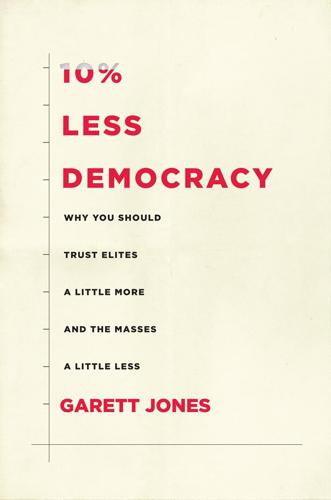
10% Less Democracy: Why You Should Trust Elites a Little More and the Masses a Little Less
by
Garett Jones
Published 4 Feb 2020
Index Acemoglu, Daron: “Democracy Does Cause Growth”, 13 Akkerman, Mark, 168 Alemán, Eduardo: on elections years in Argentina, 36 Alesina, Alberto: on control of central banks, 42–43; on economic independence of central banks, 45–46; on income growth and central bank independence, 48, 49; on inflation and central bank independence, 45–47, 58–59; influence of, 49–50, 58; on political independence of central banks, 45–46, 47; on unemployment and central bank independence, 48 Almond, Gabriel: on education, 109 altruism, 28, 139 American Convention on Human Rights (1969): Article 23 of, 95–96 American Medical Association: on physicians treating themselves or immediate families, 115 Argentina: election years in, 36; term length of politicians in, 37–38 Aristotle: on democracy, 181, 183; on the mean, 182; on middle class and political power, 182, 183; on mixed form of government, 181; on oligarchy, 183; on polity, 183 Arkansas: redrawn legislative districts in, 38–39 Ash, Elliott: on opinions of appointed judges, 69, 72–73; on opinions of elected judges, 72–73 Asian Development Bank, 133 Asian financial crisis of 1997, 133 Athenian democracy, 13, 39, 181 austerity policies, 132, 141 Austro-Hungarian Empire: sovereign debt of, 125 autocracy vs. democracy, 18–19, 25–26, 145 Bade, Michael: on central bank independence (CBI), 44–45 Bank of England, 41, 71 Bank of Japan, 41 Barro, Robert: on economic growth and democracy, 21–23, 193n18; on economic growth and inflation, 23, 24 Bastiat, Frédéric: on bad vs. good economists, 29 Baumgartner, Frank, 37 Becker, Gary, 60 Beckman, Ludvig, 97 before-and-after comparisons, 12, 15, 22, 78–79 Bell, Mark: on peace and democracy, 15–16 Bentham, Jeremy: on rights, 103 Besley, Tim: on elected regulators and prices, 87; on elected vs. appointed electricity regulators, 83–84 Blackstone’s Commentaries on the Laws of England, 75 Blinder, Alan: Advice and Dissent, 92, 100; on central bank independence, 59–60, 61, 92; Central Banking in Theory and Practice, 59–60; on diminution of democracy, 92–94; on Federal Reserve, 63–64, 92, 94; “Is Government Too Political?”
…
See government debt/sovereign debt Spain: central bank in, 46; EU membership, 158; inflation in, 46; relations with EU, 155 Standard & Poor’s, 121 statistics: multivariate regression, 12 Stella, Andrea: on independent central banks and inflation, 58–59 Stockemer, Daniel, 107 Summers, Larry: on control of central banks, 42–43; on economic independence of central banks, 45–46, 50; on income growth and central bank independence, 48, 49; on inflation and central bank independence, 45–47; influence of, 49–50; on political independence of central banks, 45–46, 47; on unemployment and central bank independence, 48 sweet spots, 19–20, 21–22 Switzerland: independent central bank in, 45–46; inflation in, 45–46 Tabarrok, Alex: on elected judges and voters, 66–68 Tobin, James: on inflation and unemployment, 43 Taiwan, 22 Tammany Hall, 105, 137–38, 141, 143 tariffs, 32, 100, 105 Tawadros, George: on inflation and central banks, 47–48 taxation: Blinder on, 61, 92–94, 143; and democracy, 62; of imports, 32, 100, 105; and inflation, 23; of interest earnings, 23; tax rates, 19–20, 117, 118, 133 term lengths of politicians: increases in, 11, 22, 37–40; short terms and short-term thinking, 31–35.
…
Once monetary economists started looking into what kinds of government rules and government bureaucracies predicted economic success and which predicted economic tragedy, they found a repeated pattern: the more “independent” the nation’s central bank was from the political process, the better things typically turned out. Note the quotation marks: the area of research is known as the “central bank independence” literature, but that’s a euphemism. Good central banks tend to be independent, but independent from what? Mostly from voters. The lessons I drew from learning about the value of central bank independence? 1. If you want good government policies, you’ll often want them determined and enforced by anonymous bureaucrats, far from the reach of the voters. 2. If you want policy determined and enforced by anonymous bureaucrats—like judges, central bankers, or trade commissioners—don’t say you want oligarchic, undemocratic bureaucrats in charge.
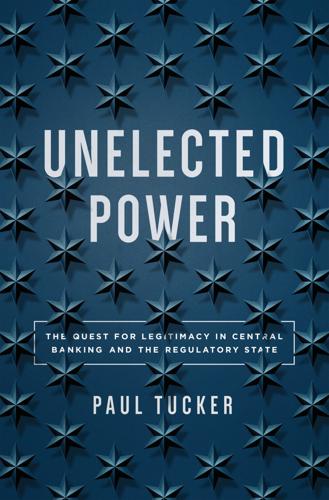
Unelected Power: The Quest for Legitimacy in Central Banking and the Regulatory State
by
Paul Tucker
Published 21 Apr 2018
So when my friend and former colleague, Bundesbank director Andreas Dombret suggested in the autumn of 2016 that central bank independence is not debatable, my immediate thought was that these institutions are among the last on earth that need “safe spaces” to protect them from criticism or verbal attack.13 Central Banking and the Regulatory State: The Issues Become Larger and Deeper Safe or not, the space they occupy has been enlarged. The earlier criticisms I recalled of central bank independence (CBI) concerned their role as an autonomous part of what I shall term the fiscal state, given their ability to change, even transform, the consolidated government’s liabilities and assets, and so its risks and income streams (chapters 4 and 22).
…
This is a facet of what has become known as embedded liberalism, comprising a system that incorporates measures to mitigate the costs to individuals or groups of free-market capitalism.27 CENTRAL BANK INDEPENDENCE AS A COROLLARY OF THE HIGH-LEVEL SEPARATION OF POWERS On this view, an independent monetary authority is a means to underpinning the separation of powers once the step to adopt fiat money has been taken. The regime is derivative of the higher-level constitutional structure and the values behind it. This is a substantively different kind of warrant for central bank independence from the welfarist and democratic tests incorporated into our Delegation Criteria.28 They are permissive, placing constraints on how much may legitimately be delegated to an IA (credible commitment, no big value judgments), whereas now we have a reason why monetary policy should be delegated.
…
We say a little about each here to pave the way into part IV. Politics and Central Banking It might seem, first of all, that we are taking for granted that since central banks should be independent authorities, they are or will be. But that does not remotely follow. None of our discussion of agency independence in general or our advocacy of a constitutional basis for monetary policy independence in particular is sufficient to explain why, in the real world, central bank independence is granted and sustained in practice. Politics intrudes, and must be brought into our story. In actual fact, two quite different models of central banking have prevailed over the past couple of hundred years.
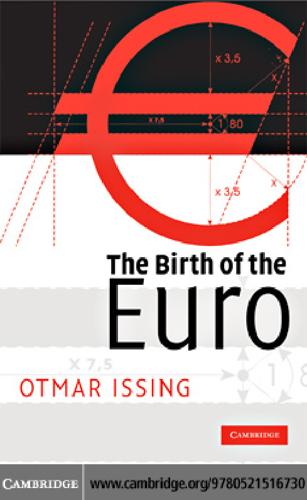
Birth of the Euro
by
Otmar Issing
Published 20 Oct 2008
However, there are two aspects to this problem, since being the scapegoat can also mean that a central bank may be held responsible for mistakes made in other policy areas. On the first point: it is true that when the Maastricht Treaty was drawn up the Deutsche Bundesbank, alongside one or two others, was the only major central bank to have the benefit, the advantage if you will, of independence. The Maastricht Treaty has now made central bank independence an important element in the institutional arrangements for European monetary policy under the single currency. However, that was not dictated by Germany but reflects the experience gained the world over. I am convinced that a decade ago this Statute of the European Central Bank would never have been approved by all twelve, and later fifteen, member states.
…
Members of the Executive Board have a term of office of eight years, with renewal explicitly excluded.7 When the question of the Statute of a future European Central Bank began to be discussed in the late 1980s, Germany was basically the only country whose central bank, the Deutsche Bundesbank, enjoyed independence. How did it come about that ultimately all EU 15 16 17 One way of nullifying central bank independence is to restrict the central bank’s financial resources or interfere in its internal powers of organisation. Removal from office would only be possible for reasons that have nothing to do with the exercise of the functions, for example in the case of criminal conduct.
…
This experience coincided with an increasing focus among economists on the role of expectations and of monetary policy credibility.8 While the topic of central bank independence had hardly been addressed at all (outside Germany), there was an obvious connection with recent research findings on the importance of monetary policy credibility: how could a central bank hope to win confidence in its policy if in its policy decisions it was obliged to a greater or lesser degree to act on the instructions of the government, the latter being guided not least by considerations of electoral tactics? 18 The literature on this topic has grown considerably over time. See, for example, A. Alesina and L. H. Summers, ‘Central bank independence and macroeconomic performance: some comparative evidence’, Journal of Money, Credit, and Banking, 25:2 (1993); O.
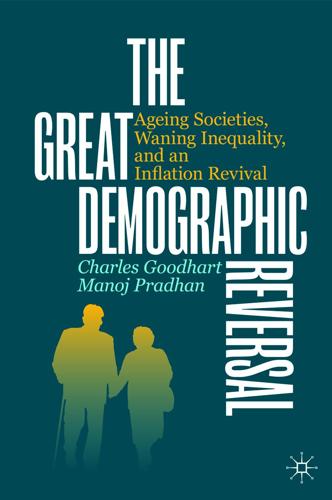
The Great Demographic Reversal: Ageing Societies, Waning Inequality, and an Inflation Revival
by
Charles Goodhart
and
Manoj Pradhan
Published 8 Aug 2020
Canada Cancer Capital Capital account Capital account liberalisation Capital accumulation Capital Adequacy Ratios (CARs) Capital control Capital costs, falling Capital flows, uphill Capital inflows Capitalism, ‘substantially broken’ Capitalist class Capitalist economies, governance problems Capitalist heaven Capital, misallocation of Capital, returns to Capital-labour Capital-labour ratios Capital misallocation Capital per worker in Japanese manufacturing, rising Capital stock Carbon tax Care, eligibility criteria for public funding Care homes Care(rs) Carers, cost of support by ‘Care Supplement’ Care workers Care workers, need for increase in Japan Caribbean Caring expenses, rising Caring services, hard to raise productivity Cash, abolition of Cash flow Cavendish, Camilla, Extra Time The Cavendish Review CBO Report Centenarians, high risk of dementia Central Bank Central Bank Independence (CBI) Central Bank Independence, a ‘paper tiger’ Central Bank Independence, a surety of financial rectitude Central Bank Independence, its glory years Central Bank Independence, populist backlash against Central Bank Independence, under threat Central banks, best friends of Ministers of Finance Central banks, constraints on raising interest rates Central banks, create money Central banks, inflation targets of Central banks, recently best friends of Ministers of Finance Central banks, reverting to normal policies Central bank inflation target Central Bank targets Certificate of Fundamental Care Changing life cycle Cheap labour Chief Executive Officer (CEO) Chief Executive Officer, has information and power Chief officers Child rearing, age of delayed Children Children, age of having Children, staying at home longer Chile China China’s ascent China’s ascent, benefiting AEs China, absence of welfare state China, administration China, ageing population China, ascent in 1990s China, bank deposits of China, big four state-owned banks China, capable of debt cancelation China, continuing strong investment China, corporate debt with lower risk of default China, credit growth unsustainable China, current account balance declining China, current account surplus peak China, debt conversion into equity China, debt is misguided the conventional wisdom China, debt less likely to lead to a crisis China, demographic reversal China, developed coastal regions of China, early stage of development China, educated labour force China, entry of foreign banks China, excess capacity China, financial markets China, focus on raising productivity China, growth decline China, growth decline in 2018/19 China, high personal sector saving China, internal migration, dominated by Eastern Region China, investment ratio China, labour force dynamics changing direction China, land subsidized China, leverage ratio China, low interest rates as a tax on households China, manufacturing sector China, no longer a deflationary force China, one child policy China, past contribution to global growth China population China, property sector China, rapidly ageing population China, remarkable demographic dynamics China, shrinking workforce China, social safety net insufficient China, special economic zones China, surging credit growth China, trade balance with USA China, under-developed interior regions China, unit labour costs China, upgrading technology China, urban savings reduced as interest rates fall China, WTO membership after long negotiations Chinese bonds Chinese elderly care Chinese, more than Americans Chinese seniors Civil Service Climate change Cognitive decline, a common story Cognitive impairment Colombia Commodity price Commodity price shocks Commodity prices, rising Commodity producers Commodity supercycle Communism The Communist Manifesto See alsoEngels, Friedrich; Marx, Karl Communist Party Comparative bargaining power Compertpay, R.
…
In almost every country, the central bank’s independence was brought about by an act of the legislature; the exception is Europe where the independence of the ECB is enshrined in a common Treaty. Whereas the independence of the ECB would be hard to revoke, the independence of other central banks can be reversed by a further Act. If the politicians find that central bank policies to achieve price stability get in their way of objectives for faster growth and lower taxes, they may seek to end, or sharply reduce the independence of central banks. If so, that vaunted independence might ultimately prove a somewhat weak reed as protection against a more inflationary future. 11.3.3 Renegotiation But the ECB’s independence is more solidly based.
…
Charles Goodhart Manoj Pradhan London, UK Abbreviations ACE Allowance for Corporate Equity ADL Activities of Daily Life AE Advanced Economies AEA American Economic Association AFD Alternative for Germany AGM Annual General Meeting AI Artificial Intelligence AIG American International Group BEPS Base Erosion and Profit Shifting BIS Bank of International Settlements BLS Bureau of Labour Statistics BoA Bank of America BoJ Bank of Japan CAR Capital Adequacy Ratio CBI Central Bank Independence CBO Congressional Budget Office CEO Chief Executive Officer CFAS Cognitive Function and Ageing Study CPI Consumer Price Index CSI Cyclically Sensitive Inflation DBCFT Destination-Based Cash Flow Taxation ECB European Central Bank ELB Effective Lower Bound ELSA English Longitudinal Study of Ageing EME Emerging Market Economies EQ Emotional Quotient FDI Foreign Direct Investment FRB Federal Reserve Board FRED Federal Reserve Economic Database FT Financial Times FTSE Financial Times Stock Exchange FX Forex G10 Group of 10 GDP Gross Domestic Product GFC Great Financial Crisis GFCF Gross Fixed Capital Formation GGM General Gaidar Model HH Household HIC High-Income Countries IBC Indian Bankruptcy Code ICE Intercontinental Exchange IMF International Monetary Fund LHS Left Hand Side LMIC Low- and Middle-Income Countries LTI Loan to Income LTIP Long-Term Incentive Plan LTV Loan to Value MAC Migration Advisory Committee METI [Japan] Ministry of Economy, Trade and Industry MFN Most Favoured Nation MITI [Japan] Ministry of International Trade and Industry MMSE Mini-Mental State Examination NAIRU Non-Accelerating Inflation Rate of Unemployment NBER National Bureau of Economic Research NFC Non-Financial Corporation NHS [British] National Health Service NICE Non-Inflationary with Continuous Expansion NLW National Living Wage NRU Natural Rate of Unemployment NUM [UK] National Union of Mineworkers OBR Office for Budget Responsibility OECD Organisation for Economic Cooperation and Development ONS Office for National Statistics O-FDI Outbound Foreign Direct Investment p.a.
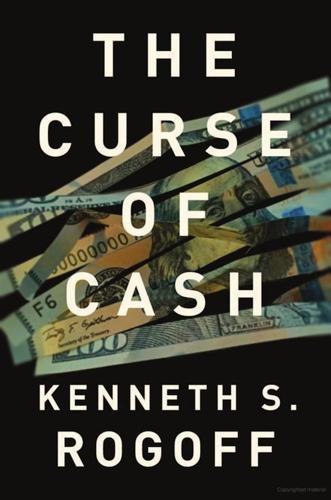
The Curse of Cash
by
Kenneth S Rogoff
Published 29 Aug 2016
THE POLITICAL ECONOMY IMPORTANCE OF SEIGNIORAGE The development of much greater central bank independence in many countries over the past three decades has been perhaps the single most transformative change in global macroeconomic policy since the breakup of the Bretton Woods system of fixed exchange rates in the early 1970s. Therefore it is important that the central bank not be turned into a political punching bag in a currency phaseout, as its profits will sharply decrease. Aside from being a modest but nice source of income for the government, seigniorage revenue has an important political economy function in supporting central bank independence. It turns the central bank into a huge profit center that earns far beyond what it needs to operate, enabling it to remit the rest back to the national treasury.
…
In theory, a lower inflation rate would help reduce relative price distortions that arise in a world of staggered price- and wage-setting, and it also would reduce the distortions created by the tax system. Seigniorage and Central Bank Independence This topic has been covered in chapter 6. After the transition, steps would need to be taken to ensure that central bank independence was not significantly compromised once the central bank was no longer viewed as a major profit center. This problem is handled easily enough. Indeed, if the global real interest rate rose sufficiently, the central bank might even pay interest on reserves that would be passed through to depositors, so that on average over time depositors earned a positive rate of return, even if rates were on occasion negative.
…
What happened instead is that central banks changed the way they did business, paying much more attention to long-run expectations. A key development that made this possible was a generalized move to make central banks more independent, sparked by academic research that explained why the ability to resist short-run political pressures to cut short-term interest rates was actually the key to keeping down long-term interest rates. Nowadays, many central banks around the world enjoy substantial independence, but that was not the case 30 years ago. Back in the early 1980s, it was really only the Bundesbank and the Federal Reserve that could claim significant independence among the major central banks.
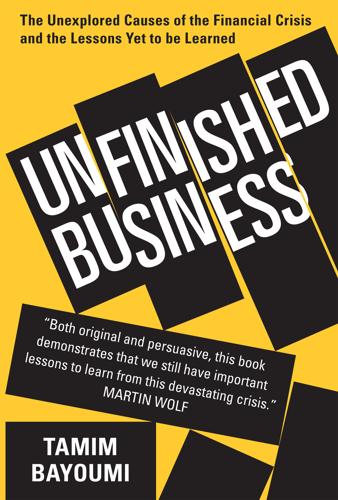
Unfinished Business
by
Tamim Bayoumi
According to his own account, he explained that if France wanted agreement with the Germans, we had to accept that monetary policy would be a single policy and that national central banks would be members of a system of central banks where all would have to be independent of governments. The European Central Bank would work only if its policies were not subject to negotiations between governments. . . . President Mitterrand did not answer specifically. . . . I said to myself ‘I’m going to take that as giving me the green light.’25 With Governor de Larosière on board, the other central bank governors quickly agreed to an independent central bank. This was relatively easy as the necessary intermediate step of making the national central banks independent of the government gave them more power.
…
If it is appropriate to advocate a combination of monetary, fiscal, and structural policies to revive global growth, then surely it makes equal sense to push for the domestic equivalent. The complication here is the lingering distrust of policy integration as a result of the inflation of the 1970s and the focus on central bank independence that this engendered. In particular, central banks have jealously guarded an extreme definition of independence. They have been reluctant to suggest appropriate fiscal and structural policies for fear that governments will respond by openly questioning monetary policy decisions. This careful approach may have made sense in the 1980s and 1990s when central banks were involved in the economically painful and politically unpopular business of wringing excess inflation out of the economy.
…
Indeed, it was in response to persistent deflation that the US presidential candidate William Jennings-Bryan in 1896 made his famous pledge allow silver to be part of the US money supply so as not to be “crucified on a cross of gold”.5 Central bank independence does not necessarily imply that the banks cannot cooperate with finance ministers or engage in a debate over the appropriate mix of monetary, fiscal, financial, and structural policies. Indeed, in the 1960s and 1970s the independent US Federal Reserve and German Bundesbank accepted the prevailing orthodoxy that monetary and fiscal policy should be cooperative. This suggests that the fundamental issue is less about whether the central bank is independent and more about the receptiveness of central banks to the inevitable to-and-fro on the appropriate monetary stance that a more cooperative approach to policies implies.
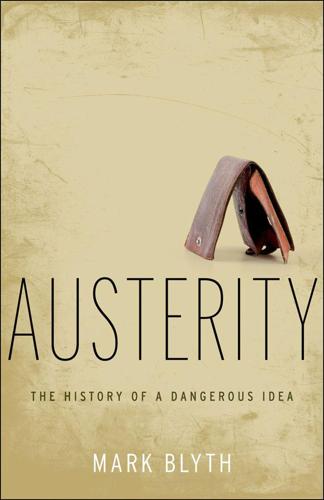
Austerity: The History of a Dangerous Idea
by
Mark Blyth
Published 24 Apr 2013
For a good introduction to the politics behind central bank independence, see Adam Posen, “Central Bank Independence and Disinflationary Credibility: A Missing Link,” Oxford Economic Papers 50, 3 (1998): 335–359; Ilene Grabel, “Ideology, Power, and the Rise of Independent Monetary Institutions in Emerging Economies,” in Monetary Orders: Ambiguous Economics, Ubiquitous Politics, ed. Jonathan Kirshner (Ithaca, NY: Cornell University Press, 2003); Sheri Berman and Kathellen McNamara, “Bank on Democracy,” Foreign Affairs 78, 2 (April/May 1999): 1–12. 68. Posen, “Central Bank Independence.” 69. Brian Barry, “Does Democracy Cause Inflation?
…
Banning democracy would be effective but might be unpopular. A second-best solution would be to have an institution that would effectively override such inflationary decision making. Luckily, such an institution already existed thanks to those ordoliberals, or neoliberals would have had to invent one: the independent central bank. Central Bank Independence Is the Solution During the Keynesian era, central banks almost everywhere were dependent creatures. That is, central banks were the financing agent for the national treasury: they cut the checks that the politicians said needed to be cut. As noted earlier, the one exception was Germany’s Bundesbank with its singular goal of stabilizing the price level, which was only made possible by its unique late-developer profile and equally unique ordoliberal instruction sheet.
…
But if politicians cannot, in the language that this literature spawned, “credibly commit” to a given policy, both voters and market agents will discount government policies and attempt to offset their effects, which will lead to greater economic instability and uncertainty. Kydland and Prescott argued that the key to solving this problem was for the central bank to be made independent from politicians and, in the manner of the Bundesbank, to be mandated to pay attention only to price stability. Critical here were a set of institutional reforms designed to shield the central bank from public scrutiny and central bankers from public recall or redress, while ensuring that these bankers are more conservative than the median voter to further protect the institution from populist demands.
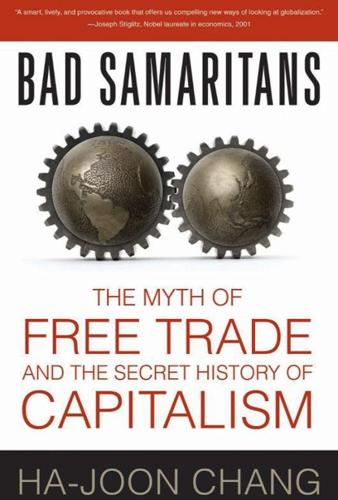
Bad Samaritans: The Myth of Free Trade and the Secret History of Capitalism
by
Ha-Joon Chang
Published 26 Dec 2007
Suttle (2003), ‘Corporate Financing Patterns and Performance in Emerging Markets’, mimeo., March, 2003, World Bank, Washington, DC. 21 OECD Historical Statistics (OECD, Paris), Table 10.10. 22 There is no evidence that greater central bank independence has any association with lower inflation, higher growth, higher employment, better budget balance or even greater financial stability in developing countries. See the evidence presented in S. Eijffinger & J. de Haan (1996), ‘The Political Economy of Central-bank Independence’, Special Papers in International Economics, No. 19, Princeton University and B. Sikken & J. de Haan (1998), Budget Deficits, Monetization, and ‘Central-bank Independence in Developing Countries’, Oxford Economic Papers, vol. 50, no. 3. 23 http://en.wikipedia.org/wiki/Federal_Reserve_Board 24 On the evolution of IMF policy in Korea following the 1997 crisis, see S-J.
…
They branched out into areas like government budgets, industrial regulation, agricultural pricing, labour market regulation, privatization and so on. In the 1990s, there was a further advance in this ‘mission creep’ as they started attaching so-called governance conditionalities to their loans. These involved intervention in hitherto unthinkable areas, like democracy, government decentralization, central bank independence and corporate governance. This mission creep raises a serious issue. The World Bank and the IMF initially started with rather limited mandates. Subsequently, they argued that they have to intervene in new areas outside their original mandates, as they, too, affect economic performance, a failure in which has driven countries to borrow money from them.
…
Stanley Fischer argues: ‘A central bank given multiple and general goals may choose among them and will certainly be subject to political pressures to shift among its goals depending on the state of the electoral cycle’.7 The best way to prevent this from happening is to ‘protect’ the central bank from politicians (who do not understand economics very well and, more importantly, have short time-horizons) by making it ‘politically independent’. This orthodox belief in the virtues of central bank independence is so strong that the IMF often makes it a condition for its loans, as, for example, it did in the agreement with Korea following the country’s currency crisis in 1997. In addition to monetary discipline, neo-liberals have traditionally emphasized the importance of government prudence – unless the government lives within its means, the resulting budget deficits would cause inflation by creating more demands than the economy can meet.8 More recently, following the wave of developing country financial crises in the late 1990s and the early 2000s, it was recognized that governments do not have a monopoly in living beyond their means.
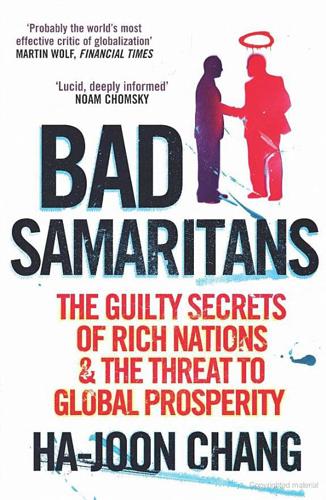
Bad Samaritans: The Guilty Secrets of Rich Nations and the Threat to Global Prosperity
by
Ha-Joon Chang
Published 4 Jul 2007
Suttle (2003), ‘Corporate Financing Patterns and Performance in Emerging Markets’, mimeo., March, 2003, World Bank, Washington, DC. 21 OECD Historical Statistics (OECD, Paris), Table 10.10. 22 There is no evidence that greater central bank independence has any association with lower inflation, higher growth, higher employment, better budget balance or even greater financial stability in developing countries. See the evidence presented in S. Eijffinger & J. de Haan (1996),‘The Political Economy of Central-bank Independence’, ‘Special Papers in International Economics’, No. 19, Princeton University and B. Sikken & J. de Haan (1998), ‘Budget Deficits, Monetization, and Central-bank Independence in Developing Countries’, Oxford Economic Papers, vol. 50, no. 3. 23 http://en.wikipedia.org/wiki/Federal_Reserve_Board 24 On the evolution of IMF policy in Korea following the 1997 crisis, see S-J.
…
They branched out into areas like government budgets, industrial regulation, agricultural pricing, labour market regulation, privatization and so on. In the 1990s, there was a further advance in this ‘mission creep’ as they started attaching so-called governance conditionalities to their loans. These involved intervention in hitherto unthinkable areas, like democracy, government decentralization, central bank independence and corporate governance. This mission creep raises a serious issue. The World Bank and the IMF initially started with rather limited mandates. Subsequently, they argued that they have to intervene in new areas outside their original mandates, as they, too, affect economic performance, a failure in which has driven countries to borrow money from them.
…
Stanley Fischer argues: ‘A central bank given multiple and general goals may choose among them and will certainly be subject to political pressures to shift among its goals depending on the state of the electoral cycle’.7 The best way to prevent this from happening is to ‘protect’ the central bank from politicians (who do not understand economics very well and, more importantly, have short time-horizons) by making it ‘politically independent’. This orthodox belief in the virtues of central bank independence is so strong that the IMF often makes it a condition for its loans, as, for example, it did in the agreement with Korea following the country’s currency crisis in 1997. In addition to monetary discipline, neo-liberals have traditionally emphasized the importance of government prudence – unless the government lives within its means, the resulting budget deficits would cause inflation by creating more demands than the economy can meet.8 More recently, following the wave of developing country financial crises in the late 1990s and the early 2000s, it was recognized that governments do not have a monopoly in ‘living beyond one’s means’.
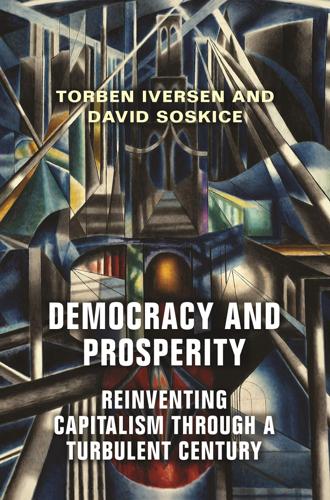
Democracy and Prosperity: Reinventing Capitalism Through a Turbulent Century
by
Torben Iversen
and
David Soskice
Published 5 Feb 2019
Where centralized bargaining and continuous consultation between the peak associations and government could no longer be relied upon for wage restraint, there was a pressing need to anchor inflationary expectations—to signal the unions that monetary policy would be nonaccommodating, implying that excessive wage demands would mean additional unemployment and not just inflation—by adopting an exchange-rate commitment and giving the central bank the independence to pursue it. Exchange-rate commitment (in one form or another) generally came first, in the 1980s; central bank independence followed in the 1990s (see figure 3.6); but the two were part of the same macroeconomic policy realignment. In addition, a credible commitment to exchange-rate stabilization and monetary nonaccommodation presupposed a solution to the fiscal problem; otherwise, central banks might come under pressure to inflate as a way of rescuing governments from their own debt liabilities.
…
By eliminating capital controls and making realignments more difficult, the EMS solidified the exchange-rate commitment and the credibility of the non-accommodating monetary policies needed to restrain wage demands in more decentralized labor markets. By making central-bank independence and fiscal retrenchment conditions for qualifying for monetary union, the Maastricht Treaty reinforced the credibility of that macropolicy stance. And the advent of monetary union itself, which handed the reins of monetary policy to a European Central Bank with unparalleled independence, residual doubts about the new direction of monetary policy waned. While decentralization in the industrial relations system was thus accompanied by a robust tightening of monetary and fiscal policies, it is important to note that it did not lead to institutional convergence.
…
The Determinants of Populist Voting in Six Countries with Significant Populist Parties 256 Figures 1.1 Measures of Distribution of Income, 2010 vs. 1985 24 1.2 Number of Patents per One Million People in the Working Age Population 27 1.3 The Distribution of Income in Advanced Democracies Compared to Nonadvanced Countries 36 2.1 Protocorporatist States and Industrial Relations Structuring 70 3.1 Average Union Density Rates and Wage Coordination in 18 Advanced Democracies 106 3.2 Average Density and Collective Bargaining Coordination in Four Advanced Democracies 107 3.3 The Vote Shares of Social Democratic and Center Parties 116 3.4 Male Wage Inequality 118 3.5 Average Industrial Employment as a Share of Total Civilian Employment in 18 Advanced Democracies 119 3.6 Central Bank Independence in 18 OECD Countries 122 3.7 The Responsiveness of Governments to Adverse Shocks in Different Political Systems 126 3.8 Voter Support for Populist Parties 130 4.1 Percent with Tertiary Degrees, by Age Group 147 4.2 Capital Market Openness and the Stock of FDI in Advanced Democracies 148 4.3 Financialization of Advanced Economies 150 4.4 Inflation Rates before and after Adoption of Inflation Targeting 153 4.5 The Strengthening of Product Market Competition Policies in ACDs 154 4.6 Number and Depth of Trade Agreements 155 4.7 A Strategic Complementarities Game of Reforms 162 4.8 Support for Government Intervention in Economy, by Policy Area 166 4.9 Summary of Causal Linkages in Big-City Agglomerations 200 5.1 The Great Gatsby Curve 221 5.2 The Link between the Transition to the Knowledge Economy and Populism 227 5.3 The Difference in Populist Values between the Old and New Middle Class 240 5.4 Educational Opportunity and Populist Values 242 5.5 The Rise of Populist Voting 245 5.6 The Difference in Populist Vote between the Old and New Middle Class 247 6.1 The Symbiotic Relationship 259 PREFACE This book started from our discussions of a paradox.
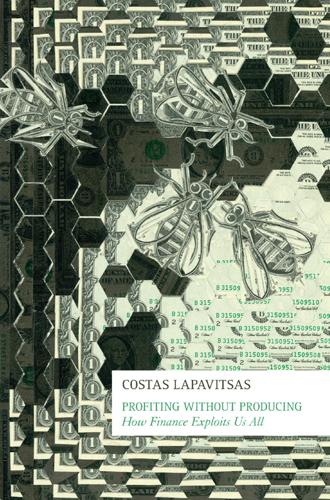
Profiting Without Producing: How Finance Exploits Us All
by
Costas Lapavitsas
Published 14 Aug 2013
Two approaches to central banking have dominated monetary policy since the early 1990s: central bank independence and inflation targeting. They have jointly dictated the functioning of central banks in developed and developing countries, thus shaping the course of financialization. For a lengthy period in the 1990s and 2000s the inflation performance of developed countries improved significantly. The lowering of inflation was deemed a great success of monetary policy – the ‘Great Moderation’ – and was attributed by mainstream theorists to the new orthodoxy of central bank independence and inflation targeting.32 The crisis of 2007 put an end to this illusion, showing that money and finance continue to have a strongly disruptive role in contemporary capitalism.
…
Prescott, ‘Rules Rather than Discretion: The Inconsistency of Optimal Plans’, Journal of Political Economy 85:3, 1977; Robert Barro and David Gordon, ‘A Positive Theory of Monetary Policy in a Natural-Rate Model’, Journal of Political Economy 91:4, 1983; Barro and Gordon, ‘Rules, Discretion and Reputation in a Model of Monetary Policy’, Journal of Monetary Economics 12:1, 1983; Alberto Alesina and Guido Tabellini, ‘Rules and Discretion with Non-coordinated Monetary Policies’, Economic Enquiry 25:4, 1987; Kenneth Rogoff, ‘The Optimal Degree of Commitment to an Intermediate Monetary Target’, Quarterly Journal of Economics 100:4, 1985; Rogoff, ‘Reputational Constraints on Monetary Policy’, Carnegie-Rochester Conference Series on Public Policy 26, Spring 1987. For a critique see Bennett T. McCallum, ‘Two Fallacies Concerning Central Bank Independence’, American Economic Review 85:2, May 1995; and McCallum, ‘Crucial Issues Concerning Central Bank Independence’, Journal of Monetary Economics 39:1, 1997. From a political economy perspective, see Costas Lapavitsas, ‘The Political Economy of Central Banks: Agents of Stability or Source of Instability?’, International Papers in Political Economy 4:3, 1997, pp. 1–52. 34 John B.
…
Mayer, Colin, ‘The Assessment: Financial Systems and Corporate Investment’, Oxford Review of Economic Policy 3:4, 1987, pp. i–xvi. McCallum, Bennett T., ‘Crucial Issues Concerning Central Bank Independence’, Journal of Monetary Economics 39:1, 1997, pp. 99–112. McCallum, Bennett, ‘The Present and Future of Monetary Policy Rules’, International Finance, 3:2, (2000), pp. 273–286. McCallum, Bennett T., ‘Two Fallacies Concerning Central Bank Independence’, American Economic Review 85:2, May 1995, pp. 207–11. McCloud, Scott, ‘Misunderstanding Micropayments’, 11 September 2003, at scottmccloud.com. McCulley, Paul A., ‘Teton Reflections’, Global Central Bank Focus, September 2007, at pimco.com.
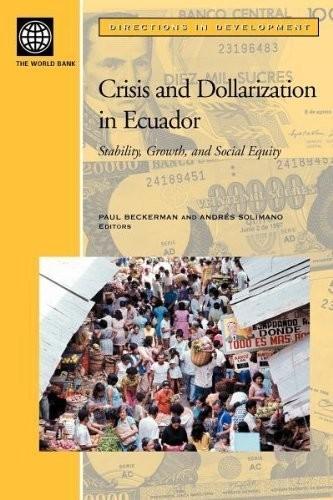
Crisis and Dollarization in Ecuador: Stability, Growth, and Social Equity
by
Paul Ely Beckerman
and
Andrés Solimano
Published 30 Apr 2002
In November 1999, when a new Central Bank administration tightened monetary policy, some government officials questioned this approach, but respected the Central Bank’s independence. In January 2000, however, with the exchange rate depreciating sharply, the government announced dollarization despite the Central Bank’s opposition. The Central Bank president and several directors resigned. One lesson of these events is that central bank independence is difficult to maintain under the pressures of acute crisis.29 No less important, as a practical matter, central bank independence involves more than directors being able to ignore ministerial wishes. Because of the economy’s advancing spontaneous dollarization, and because the attempt to sterilize the monetary expansion over the course of 1999 led the institution heavily into short-term debt—indeed, decapitalized the institution—the Central Bank had simply lost the power to carry out exchange-rate and monetary policy.
…
Once the crisis commenced, and depreciation intensified, monetary and exchange-rate policy finally became impotent. Dollarization, from this perspective, was simply the formal recognition of this reality. The crisis experience also offers lessons about central bank independence. The revised constitution that took effect in August 1998 made the Central Bank independent. In March 1999, however, the government overrode the Central Bank’s views and carried out the banking holiday and deposit freeze, leading to the resignations of the institution’s president and some directors. The Central Bank remained without a president in mid-1999, during the crucial months following the freeze.
…
In June 2000 the World Bank approved a US$150 million structural-adjustment loan with conditionality covering comprehensive tax reform, public-sector financial management, financial-sector reform, and social-sector expenditure protection. It also approved a US$10 million Financial Sector Technical Assistance Loan. 29. The decision to make the Central Bank independent in 1998 came at a bad moment, because the crisis conditions implied that financial markets were uncertain about whether the Central Bank would maintain its independence. Bibliography The word processed describes informally reproduced works that may not be commonly available through libraries. Arteta, Gustavo. 1999. “Opciones cambiarias para el Ecuador: El dilema de la elección.”
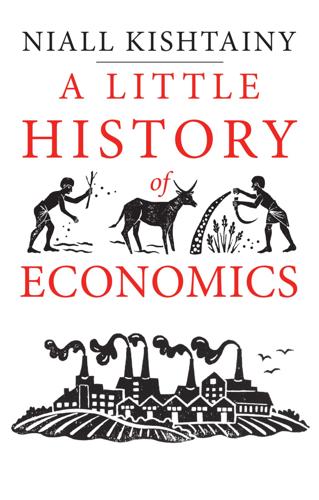
A Little History of Economics
by
Niall Kishtainy
Published 15 Jan 2017
They’d take a vote on whether to raise or lower interest rates to hit the inflation target. Some economists even recommended linking the salaries of central bank governors to the rate of inflation. When New Zealand made its central bank independent it did something similar by saying that it could sack the governor if the bank missed the target for inflation. Many economists believe that central bank independence led to low inflation and steady growth. It was a big turnaround from the 1970s era of stagflation (high inflation and high unemployment). The talk was of a ‘Great Moderation’, a stable economy free from wild ups and downs.
…
In 1946 the Bank of England was taken into public ownership; Stafford Cripps, Britain’s chancellor of the exchequer in the late 1940s, used to call it ‘his’ bank. Central banks were used by governments to pursue Keynesian policies. They’d come under the thumb of the government to be used as politicians saw fit. A solution to the problem of time inconsistency is for the government to give up its power over the central bank. Make the central bank independent, so the argument goes, and monetary policy will no longer be in danger of manipulation by politicians. The heads of central banks aren’t elected by the voters and have nothing to gain by actions which might make them popular in the short run, so they’ll be able to carry out the rule of keeping inflation low.
…
The government could even appoint as its central banker someone who’s known for having a strong liking for low inflation and will do everything in their power to achieve it. It would be like the lenient teacher sending the lazy student to the office of a strict head teacher who everyone knows enjoys giving out detentions. In the 1990s many governments made their central banks independent. They’d set targets for inflation – to keep it between 2 and 3 per cent, say. The central banks’ job was to use the tools of monetary policy, now under their control, to hit the targets. The Banque de France was cut loose from the politicians in 1994, nearly 200 years after it was set up by Napoleon to restore financial order after the turmoil of the French Revolution.
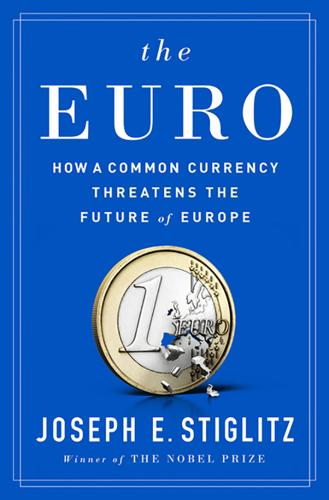
The Euro: How a Common Currency Threatens the Future of Europe
by
Joseph E. Stiglitz
and
Alex Hyde-White
Published 24 Oct 2016
It was not about creating a financial market that would lead to faster and more stable growth, and that was why what emerged was lower growth and increased instability.40 THE NEOLIBERAL ARGUMENT FOR CENTRAL BANK INDEPENDENCE The neoliberal argument for central bank independence—the argument that prevailed at the time the ECB was established—seemed to be predicated on three critically flawed assumptions: first, that all that mattered was inflation; secondly, that fighting inflation through monetary policy was a purely technocratic matter; and thirdly, that central bank independence would strengthen the fight against inflation. I have already explained what was wrong with the first two hypotheses.
…
For a more extensive discussion of this issue, see chapter 9, note 9. 40 See Stiglitz et al., Rewriting the Rules of the American Economy. 41 In the past, some governments may have tried to manipulate the economy before elections through monetary policy. But there are long and uncertain lags, making monetary policy not a very good tool for these purposes. Fiscal policy is, in fact, more effective. Some have suggested that, in the past, some central banks that were not independent at least attempted this kind of manipulation. Even if that is the case, the cure—making central banks so independent that they can easily be captured by the financial sector—is worse than the disease. There is, in fact, a wide range of institutional arrangements between full independence and being just another department of government. The governance of the ECB goes too far in the former direction. 42 The heyday of monetarism at central banks was in the 1980s and ’90s; inflation targeting was first explicitly adopted by New Zealand in 1984, and subsequently spread around the world.
…
Of course, Europe has recognized this, and it has slowly but steadily been moving toward greater democratic accountability—except on one front: the monetary union. If the euro is to be successful, it has to be an economic project that is consistent with, and even reinforces, other fundamental values. It has to strengthen democracy. But the euro has done the opposite. The most powerful institution in the eurozone is the European Central Bank, which was constructed to be independent—not answerable to or guided by elected leaders—another neoliberal idea that was fashionable at the time of the construction of the euro. Though it remains fashionable in some quarters, it is increasingly being questioned. As we will see in chapter 6, the countries that performed best during the global financial crisis were those with more accountable central banks.

The Making of Global Capitalism
by
Leo Panitch
and
Sam Gindin
Published 8 Oct 2012
Developing states, for their part, would be required to make “substantive changes in the legislative framework and in the practical powers of supervisors,” while the BIS committed itself to “a significant increase” in the resources it devoted to the training programs it offered, often in conjunction with the IMF and World Bank, for developing states’ banking supervisors.64 The concern with increasing states’ regulatory yardsticks, and even their capacities, went hand in hand with the push for central bank independence. Whether this was seen as countering the tendency of elected governments to bow to democratic pressures, or of authoritarian ones to serve their own self-interest, or both, the goal was to establish a regime of monetary credibility by institutionally embedding within states at least some of the discipline that had once been imposed by the gold standard.65 Central bank independence in the making of monetary policy was designed primarily to insulate them from domestic pressures, but at the same time it meant less independence from the concerns of other central banks in the coordination of monetary policies oriented towards stabilizing global financial markets and promoting capital flows.
…
And insofar as the financial sector still had any lingering concerns that Keynesian commitments to the priority of full employment, and the use of fiscal deficits to that end, might prevail in the Treasury, they were allayed by the autonomy the Accord gave the Fed: “the pursuit of macroeconomic stabilization and price level stability [had become] the rationale for central bank independence.” The Accord was designed to ensure that “forces seen as more radical” within any administration would not be able to implement inflationary monetary policies.79 The roots of “monetarism”—understood not in the sense of policy determined by arcane measures of money supply, but in the sense of giving macroeconomic priority to “manipulating short-term interest rates to control aggregate demand and inflation”—thus really need to be located not in the 1970s but in the 1950s, during the supposed heyday of the Keynesian era.
…
But on this occasion it quickly and drastically reversed direction: its funds rate was reduced through the course of 1970 by five full points. The monetarists’ explanation of this volte-face as being due to the Fed’s lack of autonomy from the Nixon government and its short-term electoral calculations would leave a powerful ideological imprint, expressed as a generalized clarion call for “central bank independence”—a call that would become the touchstone for the restructuring of all states in the context of capitalist globalization. Yet what this episode really demonstrated was how trapped central banks had become by precisely the rapid development of financial markets which they had encouraged. With the realization that a tightening of monetary policy was having the effect of inducing a financial crisis, the central bank’s role as lender of last resort to keep the financial system afloat trumped the commitment to monetary restraint.
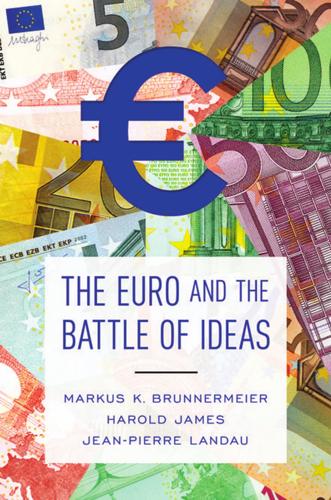
The Euro and the Battle of Ideas
by
Markus K. Brunnermeier
,
Harold James
and
Jean-Pierre Landau
Published 3 Aug 2016
In France, until the mid-1990s, there was a general consensus that in a unitary republic an independent central bank was undesirable because it would escape from the control of the central political authority that directly reflected the will of the people. In the early 1990s, the Treasury director Christian Noyer (who later became governor of the Banque de France) stated that central bank independence was incompatible with France’s republican traditions in that the Republic was “one and indivisible.”9 Centralized states such as France or Japan (which as he pointed out had an excellent record in fighting inflation) exercised political control over central banks, while independent central banks were fundamentally suited to federal states such as Germany, Switzerland, and the United States (and hence also, presumably, although he did not point this out at the time, the European Community or European Union).10 But it was those models—largely the German and perhaps also the US one—that offered the most promising blueprint for how to construct a new European Central Bank.
…
A conservative central banker can credibly stick to a specific inflation target, as he would not be tempted to engineer an inflation surprise to temporarily boost the economy.5 An institutional separation of authority was seen as a commitment tool to overcome the time-inconsistency problem. CENTRAL BANK INDEPENDENCE AND GERMANY’S EXPERIENCE IN THE 1970S In countries with independent central banks, inflation was less of a problem during the 1970s stagflation decade. The German Bundesbank acquired a reputation for achieving monetary stability at a time when the economy had to overcome two oil price shocks.
…
The idea of the fathers of the EMU was to transfer the stellar reputation of the independent Bundesbank to the new European Central Bank so that all euro-member countries could enjoy the same low-interest rate environment. Legally, the ECB became one of the most independent central banks in the world. Its president and the executive board are elected for eight years, without the possibility of renewal. Chapter 15 describes the institutional features of the ECB in detail. MONETARY AND FISCAL DOMINANCE Central bank independence should shield the ECB from undue fiscal influence. Splitting up the euro-area authorities into a single monetary and multiple (currently nineteen) fiscal authorities was considered a safeguard against high inflation. If the fiscal debt burden started to mount, an independent central bank would refrain from inflating the debt away and force the fiscal authorities to cut expenditures or raise taxes.
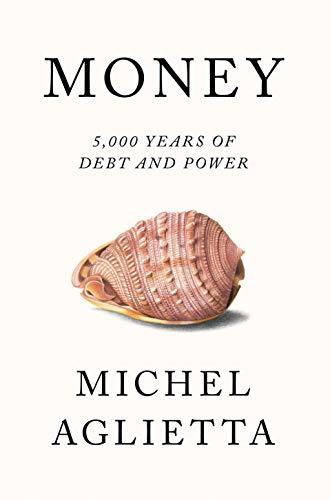
Money: 5,000 Years of Debt and Power
by
Michel Aglietta
Published 23 Oct 2018
Independence is a symbol that works if the central bank can adopt flexible policies to respond equitably to a variety of imbalances, without being suspected of threatening price stability. Central bank independence is by nature a symbolic guarantee, but its practice inserts it deep into the economy. For this reason, it is fundamentally important that a constitutional order is legally formalised that avoids any confusion between the levels of representation and of action. That is why we have to think about central bank independence in the form of an overlapping hierarchy. The central bank must be endowed with a mandate that guarantees its independent fulfilment of its mission, as well as the independence of its means.
…
The idea arose that in a universe that had become unmoored from metal convertibility, there needed to be some form of self-limitation on the power to issue money, in order to anchor confidence in the future development of money’s purchasing power. For this to be achieved, it was necessary to establish and preserve the independence of the central banks. The central bank’s independence guarantees it an external position on the basis of which it can exercise the monetary sovereignty of which it is the depository. It is this independence that makes the central bank appear as an impartial mediator between the opposing interests of society. Central bank independence does not postulate any particular form of political action. It establishes an attitude of constrained discretion, and draws on a variety of monetary doctrines in order to guide its action.
…
FROM THE INFLATIONARY GROWTH POLICIES UNDER ADMINISTERED FINANCE TO THE LOW-INFLATION POLICIES UNDER LIBERALISED FINANCE The transformations of finance have not only transformed the instruments of monetary control. They have also profoundly altered the key institution of monetary sovereignty, by ripening the ideological and political conditions that have underpinned central bank independence. Table 4.2. contrasts the regulatory consequences of administered and liberalised finance respectively. It is clear that the cyclical phenomena of the capitalist economy are not regulated in the same way. Administered finance has rigid interest rates. It is the inflation rate that fluctuates and regulates tensions on the markets of goods and credit.
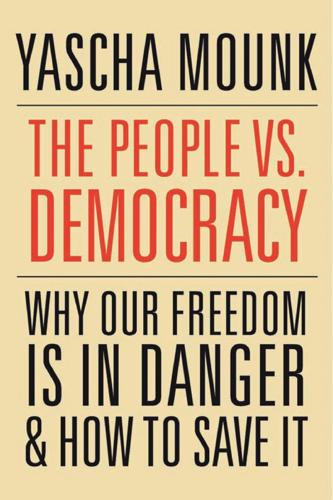
The People vs. Democracy: Why Our Freedom Is in Danger and How to Save It
by
Yascha Mounk
Published 15 Feb 2018
That is exactly what eventually came to pass: “The ECB,” according to Daniel Gros, “was the Bundesbank 2.0, but even a bit stronger in terms of its independence.”41 The whole point of its institutional design, writes Christopher Alessi, was to ensure that it would be “governed by unelected technocrats who fell outside the purview of political accountability.”42 The influence of the Bundesbank goes even further: Over the course of the 1970s and 1980s, economists began to make more far-reaching arguments for central bank independence on the German model. Since politicians who are up for election at regular intervals have a strong incentive to create short-term booms, leading scholars like Robert Barro and Robert J. Gordon argued, dependent central banks would boost inflation in the short run without sustainably decreasing unemployment in the long run.43 Making central banks independent would put decisions about interest rates in the hands of people who are insulated from such short-term incentives, and thereby boost long-term economic performance.
…
Each of these changes has prompted a shift of power away from national parliaments. To deal with the need for regulation in highly technical fields, bureaucratic agencies staffed with subject-matter experts began to take on a quasi-legislative role. To set monetary policy and resist political pressure to create artificial booms in election years, more and more central banks became independent. Finally, to do everything from setting rules about trade to negotiating agreements regarding climate change, an array of international treaties and organizations came into being. This loss of power for the people’s representatives is not a result of elite conspiracy. On the contrary, it has occurred gradually, and often imperceptibly, in response to real policy challenges.
…
The whole trouble, Frau Limens told our group of confused nine-year-olds, had started because “politicians were making all the decisions about money.” That is why, after the war, “we made the Bundesbank independent. Nowadays, we wouldn’t have that problem.” The real history of inflation and central bank independence is a little more complicated than Frau Limens had led us to believe. Faced with huge debt from World War I and a set of debtors highly determined to extract what they could from the country they had just defeated, the German government was desperate to find ways to acquire foreign currency.
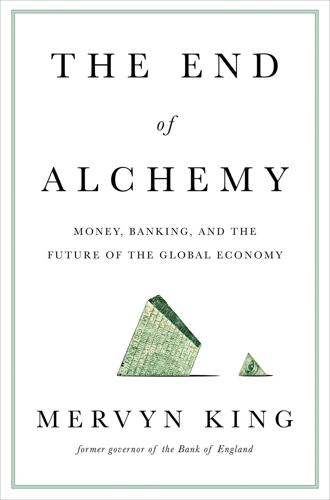
The End of Alchemy: Money, Banking and the Future of the Global Economy
by
Mervyn King
Published 3 Mar 2016
Unfortunately, the switch from a fixed rule, such as the gold standard, to the use of unfettered discretion led to the failure to control inflation, culminating in the Great Inflation of the 1970s. Attention turned to the idea of delegating monetary policy to independent central banks with a clear mandate to achieve price stability. Central banks were not born with independence, they had it thrust upon them – literally, in the case of Germany when, after the Second World War, the Allies imposed the model of an independent central bank. The movement towards independence gathered pace in the 1990s as a reaction to the Great Inflation. The Bank of England and the Bank of Japan were made independent in 1997, the Swedish Riksbank in 1999, and in the same year the independent European Central Bank was set up, influenced by the track record of the Bundesbank in Germany which had, since its creation in 1957, achieved lower inflation than in other industrialised countries.16 Of course central banks may themselves be tempted to court popularity.
…
But post-war confidence that Keynesian ideas – the use of public spending to expand total demand in the economy – would prevent us from repeating the errors of the past was to prove touchingly naive. The use of expansionary policies during the 1960s, exacerbated by the Vietnam War, led to the Great Inflation of the 1970s, accompanied by slow growth and rising unemployment – the combination known as ‘stagflation’. The direct consequence was that central banks were reborn as independent institutions committed to price stability. So successful was this that in the 1990s not only did inflation fall to levels unseen for a generation, but central banks and their governors were hailed for inaugurating an era of economic growth with low inflation – the Great Stability or Great Moderation.
…
When the two oil shocks of the 1970s – in 1973, when an embargo by Arab countries led to a quadrupling of prices, and 1979, when prices doubled after disruption to supply following the Iranian Revolution – hit the western world, the result was the Great Inflation, with annual inflation reaching 13 per cent in the United States and 27 per cent in the United Kingdom.7 Economic experiments From the late 1970s onwards, the western world then embarked on what we can now see were three bold experiments to manage money, exchange rates and the banking system better. The first was to give central banks much greater independence in order to bring down and stabilise inflation, subsequently enshrined in the policy of inflation targeting – the goal of national price stability. The second was to allow capital to move freely between countries and encourage a shift to fixed exchange rates both within Europe, culminating in the creation of a monetary union, and in a substantial proportion of the most rapidly growing part of the world economy, particularly China, which fixed its exchange rates against the US dollar – the goal of exchange rate stability.
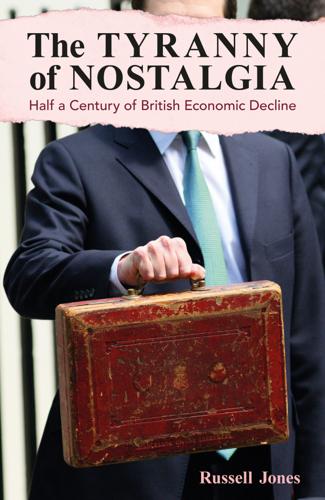
The Tyranny of Nostalgia: Half a Century of British Economic Decline
by
Russell Jones
Published 15 Jan 2023
For the French to voluntarily abandon Le Franc Fort after nine years of painful sacrifice would have amounted to a catastrophic political defeat for President Mitterrand, however, and it would also have guaranteed that the French Maastricht referendum vote would be lost. As for the Bundesbank, the German central bank considered its independence to be sacrosanct, and it was particularly reluctant to make public policy concessions in response to external pressure. Behind the scenes, meanwhile, Helmut Schlesinger and his colleagues were increasingly convinced that the UK’s worsening fundamentals were such that a sterling devaluation was unavoidable.
…
Furthermore, a group of seven independent advisors, or ‘wise men’, was appointed to provide supplementary analysis and forecasts to the government.15 After more than fifty years of playing second fiddle to the Treasury where monetary policy was concerned, the Bank of England’s influence was significantly increased by the changes ushered in after Black Wednesday. Indeed, influenced by Nigel Lawson’s brief flirtation with central bank independence in 1988, Lamont had wanted to go further still, but he was unable to convince Major, who thought that interest rate decisions ought to remain directly accountable to parliament. In addition, he was reluctant to see the Bank of England, rather than the government, receive the plaudits for defeating inflation.
…
Second, he expressed his desire to bring the proportion of GDP accounted for by public spending below 40% from its 1993 level of 46%. This was to be achieved in 1998, the year after the Conservatives left office. Where monetary policy was concerned, Clarke was, like Lamont, a supporter of greater central bank independence, so he took further steps to strengthen the authority of the Bank of England. It was agreed that once a decision had been taken to adjust official interest rates, the precise timing would be left to the Bank. He also ended the Treasury’s advance vetting of the Bank’s Inflation Reports, and from the spring of 1994 the minutes of the chancellor’s regular monthly meeting with the Bank’s governor were published after a six-week delay.
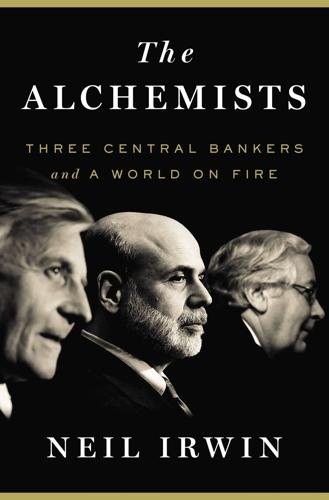
The Alchemists: Three Central Bankers and a World on Fire
by
Neil Irwin
Published 4 Apr 2013
The compromise that started to emerge seemed promising: Duisenberg would take the ECB presidency for some short length of time before handing it off to Trichet for a full eight-year term. Chirac suggested that Duisenberg retire on his sixty-fifth birthday, in June 2000. But the Dutch were angered at the idea of having their man forced out after a short period. So were the Germans, who saw it as an affront to the idea of central bank independence—after all, the whole purpose of giving the ECB president an eight-year nonrenewable term was so that politicians like Chirac couldn’t micromanage when a new leader takes over. “Who is this man who says we must waste all this time talking about a few weeks longer he stays in the job?” Chirac reportedly said at one tense point in the talks.
…
With the French threatening to veto Duisenberg, and the Dutch and Germans threatening to veto Trichet, Blair proposed a compromise: Duisenberg would make a personal and voluntary announcement that he would retire before his full term was out. (As it turned out, he stepped down and was replaced by Trichet in 2003.) The French would get their president within a reasonable time frame, and the Dutch and Germans would get at least the appearance of a central bank independent from politics. As he left the negotiations in Brussels that weekend, Helmut Kohl, among the great statesmen of the postwar period, looked bedraggled, and described the concluded talks as “the most difficult hours I have experienced in Europe.” • • • On January 1, 1999, the euro launched, first for electronic transactions, and three years later as a paper currency.
…
“Extreme policy mistakes were the primary cause of the Great Depression,” Bernanke said from the lectern at the Woodstock Inn. “And today in Japan one hears statements from policymakers that are eerily reminiscent of the 1930s. . . . There are strong reasons to believe that aggressive monetary expansion . . . could raise prices and stimulate recovery in Japan. But the downside of central bank independence is that, if for whatever reason the central bank seems determined not to take necessary policy measures, there is little that can be done, at least in the short run.” “Does the technical feasibility of preventing deflation imply that protracted deflation will never occur?” Bernanke asked, before giving his own answer.

Cogs and Monsters: What Economics Is, and What It Should Be
by
Diane Coyle
Published 11 Oct 2021
In 1985, though, when I started my first job back in the UK as an economist at the Treasury, I would have defended the kind of economics most deserving of the frequent criticisms. Indeed, my job, in the grand Whitehall building just across the square from Parliament, was in the division responsible for monetary policy (this was before the days of central bank independence). The monetarism originating with Milton Friedman’s work in the 1960s and implemented during the inflationary economic crises of the 1970s was the policy orthodoxy. We were also closely involved in the preparations for ‘Big Bang’, the removal of long-standing regulations governing the financial markets in the City of London.
…
Given the spread of institutions run by economists and embedding economic analysis in how they operate, such as central banks and industry regulators, this is a non-trivial point. It is why some commentators have begun to push back against the 1990s and 2000s trend toward making bodies like central banks and competition authorities independent; for instance, Tucker (2019) argues that they need to acknowledge they are not making technical but rather political or values-based choices. Economists generally take it for granted that our models are useful tools. We simultaneously assume that they are ‘true’ in the sense of not being systematically at odds with important features of the real world, and yet not true at all as a faithful description of reality.
…
As the short-run temptation is obvious, a political pledge to make the virtuous choice every time will not be credible. On the other hand, an independent central bank does not face the same short-run pressures, and indeed can be structured so that its reputation depends on long-term economic outcomes. This could include, for instance, term limits on appointments. Central bank independence has become part of the landscape in democracies, albeit undermined in some eyes by the length and scale of quantitative easing, requiring vast central bank purchases of government bonds. The UK’s Office for Budget Responsibility is a more recent institution addressing a credibility problem in commitment to fiscal policy.
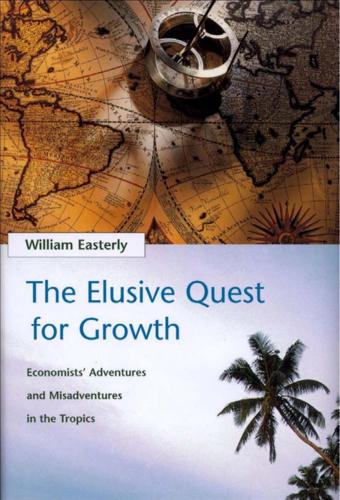
The Elusive Quest for Growth: Economists' Adventures and Misadventures in the Tropics
by
William R. Easterly
Published 1 Aug 2002
After all, a Polarized Peoples 279 society polarized by class or race will be less likely to create an independent central bank, an independent finance minister, and highquality institutions in the first place. But at least we have identified the incentives that government officials face in polarized societies as the root of bad policies. This is a big improvement over endless preaching at poor countries to change their policies. We know some institutional remedies that help matters, even if they are no panaceas. If only rule of law, democracy, independent central banks, independent finance ministers, and other good-quality institutions can be put place, in the endless cycle of bad policies and poor growth can come to an end.
…
In Africa, the interest group deadlock has still not been broken in many countries, as countries enter into their fourth decade after independence. Still, never at a loss for words, economists have proposed some institutional arrangements that will create incentivesfor the government to pursue betterpolicies. One, which is most relevant for countries struggling with high inflation, is central bank independence.Recall that a war of attrition between interest groups prolongs high inflation.A central bank that does not belongto either group is more likely to stand up to interest group pressure for the credit creation that fuels inflation. An independent central bank is morelikely to share the burdenof stabilization among interest groups.
…
Alesina, Alberto, and Roberto Perotti. 1995. ”Fiscal Expansions and Adjustments in OECD Countries.” Economic Policy 20:205-248. Alesina, Alberto, and Dani Rodrik. 1994. ”Distributive Politics and Economic Growth.” Quarterly Journal of Economics 109, no. 2 (May): 465-490. Alesina, Alberto, and Lawrence H. Summers. 1993. ”Central Bank Independence and Macroeconomic Performance: Some Comparative Evidence.” Journal of Money, Credit and Banking 25 (May): 151-162. Alfiler,Ma., and P. Concepcion. 1986. ”The Process of Bureaucratic Corruption in Asia: Emerging Patterns.” In Ledivina V. Carino, ed., Bureaucratic Corruption in Asia: Causes, Consequences, and Controls.

Restarting the Future: How to Fix the Intangible Economy
by
Jonathan Haskel
and
Stian Westlake
Published 4 Apr 2022
This tension presents a challenge because the classic method for resisting the kind of lobbying that we are worried about entails organisations binding themselves with inflexible rules. Economists Paul Milgrom and John Roberts published an important paper in 1988 describing how organisations could resist influence activities by putting rules in place to constrain their discretion, like Odysseus lashing himself to his mast.34 A classic example is central bank independence. For decades, governments had varied interest rates in response to short-term political pressures, even though this variability reduced economic growth in the medium term; putting rate setting in the hands of an independent central bank with a simple rule for setting rates took away the temptation and protected it from lobbying.
…
(The European Central Bank is currently using dual rates, along with negative interest rates.) And indeed, JaeBin Ahn, Romain Duval, and Can Sever’s study showed that intangible investment fell by less in countries where monetary policy makers cut interest rates to offset negative shocks.57 But such policies raise substantial questions about central bank independence. Passing money to commercial banks is nakedly fiscal policy, in that it guarantees the loss of a sum of public money in favour of a private entity and so might just as well be done by the government and not by an independent central bank.58 It would be better to devote energy to improving the conduct of fiscal policy directly.
…
Two independent agencies with considerable clout are the UK Office of Budget Responsibility and the US Congressional Budget Office. They are examples of institutional arrangements for finding commitment. One possibility is to give such a role to the central bank if its policy space becomes exhausted, whereby the central bank could become an independent voice on the quantum of fiscal policy required in a recession. A third possibility is to make fiscal policy more “automatic.” This type of policy is discussed by IMF economists Olivier Blanchard, Giovanni Dell’Ariccia, and Paolo Mauro and by James Smith at the Resolution Foundation.59 One automatic fiscal policy is a progressive tax system.

Angrynomics
by
Eric Lonergan
and
Mark Blyth
Published 15 Jun 2020
And with the rise of global financial markets that can punish states for policies that they don’t like by taking their money out of the country, devaluing the currency, and causing a crisis, the case for giving authority over monetary policy to an “independent” agency, which took the long view rather than allowing politicians that always took the short-term view to make policy, became compelling. And so, over the course of the 1990s, this hardware modification spread across almost all the machines running the software for v.3.0 as central bank independence, and the rise of the central banker as the most powerful policy-maker in the land, spread across the OECD and beyond.21 The result was a system that was once again similar across those countries that produced common outputs, but those outputs were the complete opposite of v.2.0. Comparing versions 2.0 and 3.0 in a table can clarify this.
…
Capitalism v.2.0 1945–80 Capitalism v.3.0 1980– Policy target: Policy target: Full employment Price stability (low inflation) Policy outcomes: Policy outcomes: Labour’s share of GDP at historic highs Capital’s share of GDP at historic highs Corporate profits low or stagnant Wages low or stagnant Inequality low Inequality high Markets mostly national Markets globalized Trade unions strong Trade unions weak Finance weak and immobile Finance strong and highly mobile Central banks weak and politicized Central banks strong and independent Legislatures strong Legislatures weak MARK: But as you stressed in the previous dialogue, Eric, one of the reasons v.3.0 lasted as long, if not longer, than v.2.0, was the fact that it worked. It restored the value of capital and crushed inflation. But in doing so, it set the system up for not one, but three bugs that would crash the system in 2008.
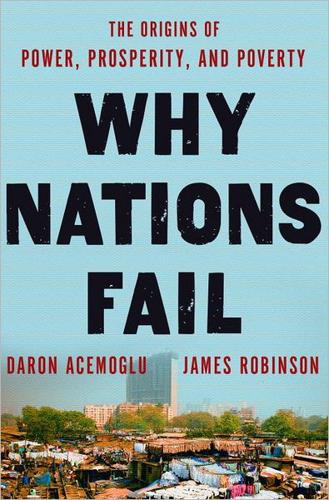
Why Nations Fail: The Origins of Power, Prosperity, and Poverty
by
Daron Acemoglu
and
James Robinson
Published 20 Mar 2012
The theory was that independent central banks, just like the Bundesbank in Germany, would resist political pressure and put a lid on inflation. Zimbabwe’s president Mugabe decided to heed international advice; he declared the Zimbabwean central bank independent in 1995. Before this, the inflation rate in Zimbabwe was hovering around 20 percent. By 2002 it had reached 140 percent; by 2003, almost 600 percent; by 2007, 66,000 percent; and by 2008, 230 million percent! Of course, in a country where the president wins the lottery (this page–this page), it should surprise nobody that passing a law making the central bank independent means nothing. The governor of the Zimbabwean central bank probably knew how his counterpart in Sierra Leone had “fallen” from the top floor of the central bank building when he disagreed with Siaka Stevens (this page).
…
The governor of the Zimbabwean central bank probably knew how his counterpart in Sierra Leone had “fallen” from the top floor of the central bank building when he disagreed with Siaka Stevens (this page). Independent or not, complying with the president’s demands was the prudent choice for his personal health, even if not for the health of the economy. Not all countries are like Zimbabwe. In Argentina and Colombia, central banks were also made independent in the 1990s, and they actually did their job of reducing inflation. But since in neither country was politics changed, political elites could use other ways to buy votes, maintain their interests, and reward themselves and their followers.
…
In reality, such reforms were foisted upon these countries in contexts where politics went on as usual. Hence, even when reforms were adopted, their intent was subverted, or politicians used other ways to blunt their impact. All this is illustrated by the “implementation” of one of the key recommendations of international institutions aimed at achieving macroeconomic stability, central bank independence. This recommendation either was implemented in theory but not in practice or was undermined by the use of other policy instruments. It was quite sensible in principle. Many politicians around the world were spending more than they were raising in tax revenue and were then forcing their central banks to make up the difference by printing money.
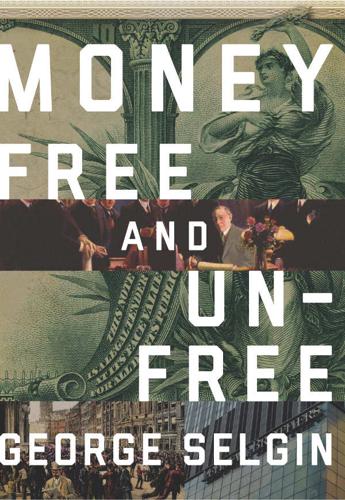
Money Free and Unfree
by
George A. Selgin
Published 14 Jun 2017
Cross-sectionally, our argument predicts that independent central banks—serving the need for a commitment device—should be found more commonly in pluralistic democracies than in autocratic states where a ruling lineage has secure tenure. This prediction is broadly consistent with evidence from the 1980s. In Cukierman’s (1992) ranking of 46 central banks, the 14 most independent were found in liberal democracies, with the sole exception of Hungary’s. Of the remaining 32 less-independent banks, 16 were in countries that were authoritarian for the entire 1980s, and 6 more were in countries that were authoritarian at the start of the decade.15 The fiscal hypothesis suggests that central bank independence is unlikely to be absolute, and predicts that independence is most likely to be withdrawn during periods of heavy fiscal demand.
…
The decision to form an independent monetary authority is most likely to be made when rival political parties have little to lose by cooperating to restore a depressed inflation-tax base, such as immediately following an inflation-based capital levy that has greatly increased the public’s estimate of the likelihood of future high inflation. Historically, then, central banks are most likely to be given independence by democratic governments in the wake of relatively severe inflations. The Reichsbank, for example, gained independence at the end of the German hyperinflation. In the United States, the “accord” giving the Federal Reserve greater independence from the Treasury came in the wake of the post–World War II inflation.
…
Because most system currencies did not become fully convertible at the new par values established for them in 1946 until the close of 1958, the system only became fully operative at the latter date. The Bretton Woods system was supposed to reproduce the most desirable features of the classical gold standard while nevertheless allowing participating central banks some freedom to pursue independent monetary policies. For a time, it seemed to achieve its purpose, by reestablishing a system of stable exchange rates accompanied by low inflation. However, the system’s apparent stability masked serious inherent flaws that became especially serious once the dollar emerged as its only “key” currency.
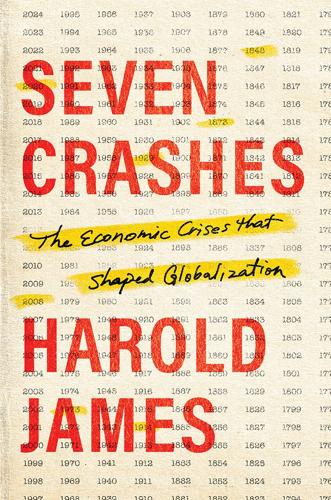
Seven Crashes: The Economic Crises That Shaped Globalization
by
Harold James
Published 15 Jan 2023
So, again, the risks are somewhat asymmetric in that it’s difficult to address those downside risks, whereas the upside risks of too rapid growth or too high inflation within limits can be addressed by raising interest rates.”129 The move to QE implied a much closer coordination between the Fed and the Treasury, in practice a partial reversal of the assertion of central bank independence that had figured so prominently in the anti-inflation mentality generated as a consequence of the experience of the 1970s. What is striking about the suggestion is the willingness to think that one of the channels through which the operation would succeed was the weakening of the dollar.130 To critics, especially in other countries, this looked like an aggressive act of economic nationalism, a return to the currency wars and competitive devaluations of the interwar Depression.
…
Simulations of the Fed’s main macroeconometric model suggest that the use of policy rules developed before the crisis would result in short-term rates being constrained by zero as much as one-third of the time.”140 This was a mirror image of the old model of central bank behavior, where the same classical analogy had been frequently used as the rationale for central bank independence, and policy made by a “conservative central banker.” Now the central banks needed to be tied—or to tie themselves—in order not to be too conservative. The result of the support operations across the globe was that there were—outside the limited cases of Ireland, Iceland, and Spain—no massive bank collapses.
…
By 2021, there was considerable skepticism about the outcome of the Japanese strategy that had been the response to stagnation: large-scale fiscal expansion and the expansion of the central bank balance sheet. A new Japanese prime minister, Fumio Kishida, pledged to steer the country away from Abenomics, whose emphasis on monetary expansion accompanied by deregulation was now castigated as “neoliberal.”143 The logic of undoing central bank independence (CBI) is appealingly, perhaps also unappealingly, obvious: if harmful levels of inflation require the remedy of CBI, do not dangerous deflationary tendencies require the reversal of CBI, more politely known as more fiscal-monetary coordination, and perhaps also a return to multifunctionality of central banks?
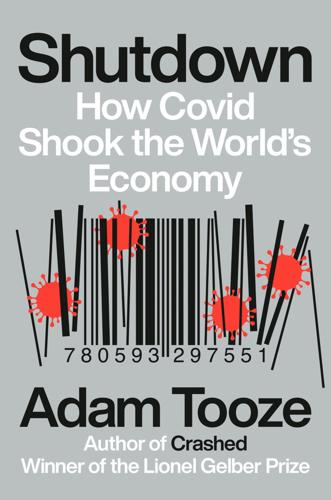
Shutdown: How COVID Shook the World's Economy
by
Adam Tooze
Published 15 Nov 2021
After 2008, it had become common to the euro area and the United States as well—though in the U.S. the deflationary tendency was less pronounced. The central bank policy of government bond buying became known as quantitative easing (QE). It was a disorienting scene, because while the central banks remained the key actor in the drama, they were doing precisely those things the prohibition of which was central to founding central bank independence in the 1970s and 1980s. In the era of the market revolution, the mandate of the central banks had been to fight inflation. In that struggle, it was taken as axiomatic that central bankers must refuse to monetize government deficits. Indeed, that prohibition was written into the founding statutes of the ECB.
…
That triggered a legal challenge that reached its culmination in the German constitutional court in May 2020. What it did not trigger was inflation. It took more than book entries on the central bank balance sheet to revive a general upward movement in prices and wages. The shift from a world in which central bank independence was founded on not buying government debt to one in which central banks around the world warehoused trillions of dollars in debt was bewildering. And it was all the more so because it happened tacitly, without frank acknowledgment of the transformation. As Paul McCulley, the former chief economist at the giant bond house PIMCO, put it, “We’ve had a merger of monetary and fiscal policy.
…
A central bank cannot fail.71 So far as local currency operations are concerned, it could in principle absorb huge losses and operate with no capital or even negative capital. The risk in absorbing losses is political and legal, not financial.72 Given parliamentary prerogatives over the budget, no central bank wants to be accused of abusing its independence by putting taxpayer funds at risk—“spending money”—without explicit approval from the legislature. So in an artificial, but nevertheless potent-looking gesture, the CARES Act explicitly authorized the Fed to act as a publicly backed emergency lender. Of the $2.3 trillion in funding originally approved under the CARES Act, $454 billion was reserved as a congressionally approved loss-absorbing fund for the Fed.
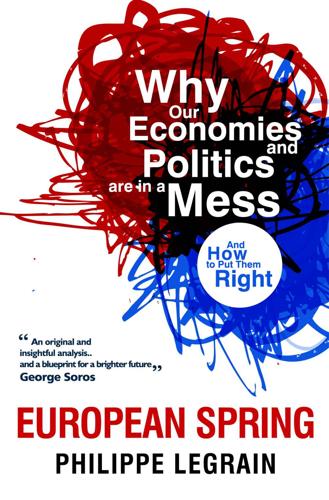
European Spring: Why Our Economies and Politics Are in a Mess - and How to Put Them Right
by
Philippe Legrain
Published 22 Apr 2014
Clearly, when its awesome power is put to good effect – as a lender of last resort to illiquid governments, for instance – it can be a force for good, but even so it urgently needs reform. The ECB is buttressed by a secular religion which holds that central-bank independence is sacred and ought to be inviolate. It is particularly beloved by federalists because it is a truly supranational European institution. Yet the general principle in a democracy is that power is exercised by elected authorities. When democratic authorities delegate power to unelected ones, that power ought to be exercised openly and accountably. Surely the ECB ought to be judged by its results? The conventional case for central-bank independence rests on three planks: common agreement that low inflation is a good thing; the absence of a trade-off between low inflation and other desirable goals such as low unemployment, high growth or financial stability; and the belief that independent central banks are better placed to deliver low inflation at lower cost than politicians are.
…
The panic in sovereign bond markets that resulted from the five policy mistakes revealed a major design flaw: that the ECB was not explicitly mandated to be a lender of last resort to governments in the EU treaties. It also revealed two important political constraints: a deep reluctance of the ECB to intervene to stabilise sovereign bond markets and a perception that a central bank that jealously guards its independence was in fact a prisoner of German politics. The overarching error was a misdiagnosis of the crisis as being primarily about excessive government borrowing and a lack of “competitiveness” in southern Europe for which the solution was immediate austerity and wage cuts. In fact, with the notable exception of Greece, it was primarily a banking crisis associated with excessive private borrowing for which the solution was bank restructuring, debt write-downs and policies to support investment and economic adjustment.
…
Last but not least, how does one prevent panic in government bond markets: will the ECB’s ad hoc, conditional OMT policy suffice, should it be formally mandated as a lender of last resort to illiquid but not insolvent governments, or is there another alternative? That brings us neatly to monetary policy. Most central banks now operate independently of governments day to day, but the ECB’s autonomy is exceptional. It decides both what its target should be – it has settled on consumer-price inflation of close to but under 2 per cent – and how it wants to try to achieve it. It can even choose to do nothing when it fails to meet its target: even though inflation has plunged to below 1 per cent, threatening deflation, it is sitting on its hands.
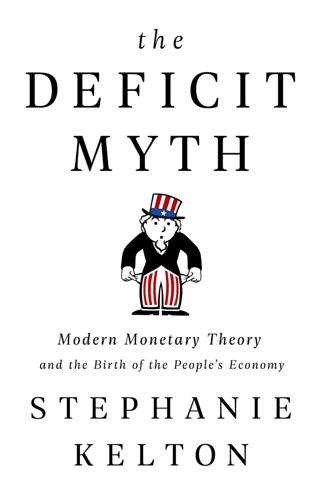
The Deficit Myth: Modern Monetary Theory and the Birth of the People's Economy
by
Stephanie Kelton
Published 8 Jun 2020
To keep inflation stable, Milton Friedman wanted the central bank to follow a strict rule. His rule dictated that the money supply (M) should be permitted to grow only as fast as the real economy (Y); that way, prices (P) would remain stable given (V), the assumption of constant income velocity of money. 8. For a further discussion of central bank independence, see L. Randall Wray, “Central Bank Independence: Myth and Misunderstanding,” Working Paper No. 791, Levy Institute of Bard College, March 2014, www.levyinstitute.org/pubs/wp_791.pdf. 9. The Federal Reserve targets PCE. If it hits its target exactly, then the average price of the basket of goods used to construct the PCE will rise by 2 percent per year.
…
How We Fight Inflation Today Since 1977, the Federal Reserve has operated under what is commonly referred to as a dual-mandate from Congress. The dual-mandate directs the Fed to pursue maximum employment and stable prices. Basically, Congress put the Fed in charge of jobs and inflation. Congress doesn’t tell the Federal Reserve how many jobs it’s expected to support or how much inflation is considered too much. The central bank is treated as independent in the sense that it gets to pick its own inflation target and decide for itself what maximum employment means.8 Like most central banks, the Federal Reserve has chosen a 2 percent inflation target.9 To keep from overshooting that rate, the Fed aims to keep just the “right” amount of unemployment in the system, much like Friedman prescribed a half century ago.
…
Paul Davidson and Jan Kregel, Full Employment and Price Stability in a Global Economy (Cheltenham, UK: Edward Elgar, 1999), cas2.umkc.edu/econ/economics/faculty/Forstater/papers/BookChaptersEnclopediaEntries/GeneralFrameworkAnalysisOfCurrenciesCommidities.pdf. 30. The Fed began targeting in 1942. See Jessie Romero, “Treasury-Fed Accord, March 1951” (webpage), Federal Reserve History, November 22, 2013, www.federalreservehistory.org/essays/treasury_fed_accord. 31. For an MMT description of what is meant by Fed independence, see L. Randall Wray, “Central Bank Independence: Myth and Misunderstanding,” Working Paper No. 791, Levy Economics Institute of Bard College, March 2014, www.levyinstitute.org/pubs/wp_791.pdf. 32. Even some officials at the Federal Reserve are reportedly beginning to consider the possibility of explicitly targeting the longer end of the yield curve.
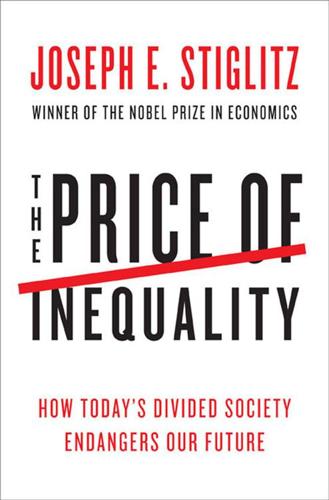
The Price of Inequality: How Today's Divided Society Endangers Our Future
by
Joseph E. Stiglitz
Published 10 Jun 2012
My own views are set out in a lecture in memory of one of the great economists of the twentieth century, and the (first) Nobel Prize winner in economics, Jan Tinbergen, delivered at the Central Bank of Netherlands, “Central Banking in a Democratic Society,” De Economist 146, no. 2 (July 1998): 199–226, esp. 28. See also Alex Cukierman, Central Bank Strategy, Credibility, and Independence (Cambridge: MIT Press, 1992); and J. Furman, “Central Bank Independence, Indexing, and the Macroeconomy,” unpublished 1997 manuscript. 25. See chapter 3 for more details. 26. Edward M. Gramlich not only anticipated the bubble and its breaking but also argued forcefully that something should be done to avoid the foreclosures.
…
Indeed, as we shall explain later, most of its board members probably truly believed that its policies—lax regulation, fighting inflation, helping banks that are so essential to the functioning of our economy—would promote growth from which all would benefit. But that’s just testimony to the extent to which the Fed was “captured” by the perspectives and worldview of the bankers. TOWARD A MORE DEMOCRATIC CENTRAL BANK24 A central thesis of current conventional wisdom is that central banks should be independent. If they are subject to political forces, so the thinking goes, politicians will manipulate monetary policy for their short-run advantage at a long-run cost; they will stimulate the economy excessively before an election, with the price—higher inflation—to be paid after the election.
…
If they are subject to political forces, so the thinking goes, politicians will manipulate monetary policy for their short-run advantage at a long-run cost; they will stimulate the economy excessively before an election, with the price—higher inflation—to be paid after the election. Moreover, with an independent central bank committed to low inflation, markets will not build inflationary expectations into their behavior, so inflation will be contained, and there will be better overall economic performance. The failure of independent central banks The independent central banks of the United States and Europe didn’t perform particularly well in the last crisis. They certainly performed far more poorly than less independent central banks like those of India, China, and Brazil. The reason was obvious: America’s and Europe’s central banks had, in effect, been captured by the financial sector.
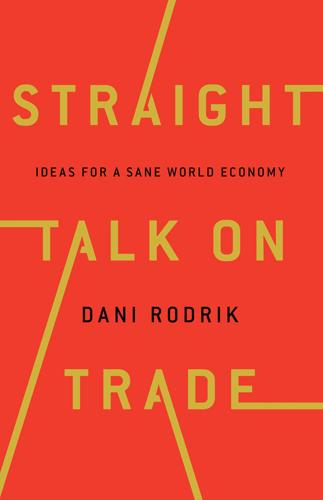
Straight Talk on Trade: Ideas for a Sane World Economy
by
Dani Rodrik
Published 8 Oct 2017
And even though I have focused on large-scale policy innovations that changed the course of nations, one can easily come up with a long list of others that are less revolutionary: the income tax, old-age pensions, the most-favored-nation principle in international trade, bank deposit insurance, work requirements for welfare recipients, conditional cash transfers, central bank independence, and marketable pollution trading. What these all have in common is that they unblock resistance to change to allow society to move closer to the efficient frontier. In cases like these, does greater efficiency always justify helping elites? Policy Ideas for Dictators? It might seem obvious that economists should lend their expertise to help develop policy ideas for political leaders.
…
Roosevelt uttered a famous call for “bold, persistent experimentation” in 1932: “It is common sense to take a method and try it: If it fails, admit it frankly and try another. But above all, try something.”23 To a much lesser extent, the inflationary crisis of the 1970s played a similar role, preparing the groundwork for new ideas in macroeconomics such as rational expectations and central bank independence. The recent financial crisis has made taxation and control of international capital flows more palatable, although the extent to which financial interests have been weakened remains debated. While the association between crises and new ideas seems plausible, much remains to be explained.
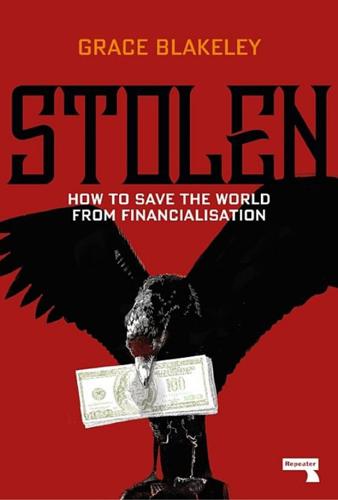
Stolen: How to Save the World From Financialisation
by
Grace Blakeley
Published 9 Sep 2019
Of course, what the rise of the expert really meant was the capture of policy-making by the powerful.35 In the absence of any accountability to voters, decisions about macroeconomic policy could be based on the returns such policies would provide to the wealthy. Perhaps the best example of how rule-by-experts facilitates policy capture has been the move towards central bank independence. Neoclassical economists argued that politicians exhibited an “inflationary bias”, which made them poor economic managers. Failing to consider the long-term implications of their actions, politicians would reduce interest rates and increase spending today in order to boost growth and secure re-election.
…
Ultimately, however, this would damage the economy in the long-run by raising inflation, which would erode consumers’ incomes. The solution was clear: this powerful tool had to be placed on the top shelf, away from the prying hands of the political toddlers focused only on their own electoral prospects. Some argued that central bank independence was supposed to bring about high interest rates, which would damage industrial capital and promote the interests of finance capital — but under the conditions of financialisation, the situation is much more nuanced. Histori- cally, there has been an assumed dichotomy between the interests of finance capital and those of industrial capital.36 The former has been assumed to prefer high interest rates to maximise the returns on lending, whilst the latter are assumed to prefer low interest rates to allow them to borrow cheaply.

Wall Street: How It Works And for Whom
by
Doug Henwood
Published 30 Aug 1998
Capital Choices: Changing the Way America Invests in Industry CWsish-ington: Council on Competitiveness, and Cambridge, Mass.: Harvard Business School). Posen, Adam (1995a). "Declarations Are Not Enough: Financial Sector Sources of Central Bank Independence," in Ben Bernanke and J. Rotenberg, eds., NBER Macroeconomics Annual 7995 (Cambridge: MIT Press). — (1995b). "Central Bank Independence and Disinflationary Credibility: A Missing Link?," Federal Reser\'e Bank of New York Staff Report No. 1 (May). Poterba, James M., and Andrew A. Samwick (1995). "Stock Ownership Patterns, Stock Market Fluctuations, and Consumption," Brookings Papers on Economic Activity 2, pp. 295-372.
…
Other analysts have argued that while ^ is a weak explanation of real investment, changes in stock prices do a better job (Barro 1990). But it may be that the stock market is simply a leading indicator of the business cycle, responding quickly to changes in interest rates and central bank policy, rather than being the independent cause of anything. Randall Morck, Andrei Shleifer, and Robert Vishny (1990) found that over the period 1960-1987, the stock market explained very little of the change in real investment once fundamentals like sales and profit growth were controlled for — relations that held for the stock market and economy taken as a whole, and for individual firms examined in detail.^° Introducing external financing — new stock and debt issues — added a bit of explanatory power to their equations, but not much, with new debt doing a better job than equity.
…
Unlike Britain and the United States, which suffer from loosely regulated financial systems and a shoot-from-the-hip stock market mentality, Japan and Germany have rather tightly regulated systems in which stock markets play a relatively unimportant role in both investment finance and corporate governance. Compared with these broader financial structures, the central bank's (in)dependence isn't quite so important. Populist critiques of the Fed tend to concentrate excessively on its autonomous powers while overlooking the influence of the financial markets on the central bankers: the Fed follows interest rate trends as well as leading them. The 1994 tightening offers a good example.
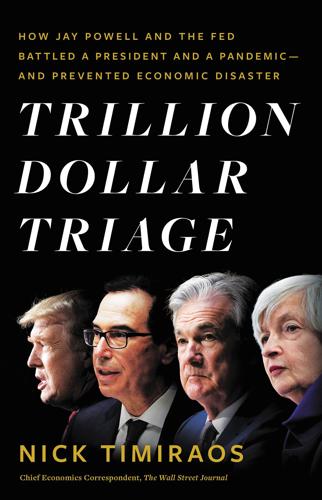
Trillion Dollar Triage: How Jay Powell and the Fed Battled a President and a Pandemic---And Prevented Economic Disaster
by
Nick Timiraos
Published 1 Mar 2022
Officials made a series of policy errors, standing by while hundreds of banks failed. The autonomy that the Fed would later carve out for itself took decades to build and featured high-stakes battles and some painful mistakes. A brief history of the Fed demonstrates why the modern central bank and Jay Powell never took this hard-won independence for granted. A centralized central bank The failures of the Fed in the first years of the Great Depression led to the most significant overhaul in its history. Franklin D. Roosevelt’s Fed chair, Marriner Eccles, was in many ways the embodiment of the American dream.
…
A 1949 recession helped cool inflation, but the next year, the prospect of a wider war in Korea drove new fears of inflation. The FOMC voted in June to increase the one-year rate, but the Treasury refused. The Fed’s purchases of securities soared.11 Eccles and New York Fed president Allan Sproul encouraged McCabe to dig in and defend the bank’s autonomy. If the central bank “expected to survive as an agency with any independence whatsoever, [it] should exercise some independence,” Eccles said.12 When the FOMC voted to raise rates in June 1950 to tamp down inflation, Snyder and Truman were completely opposed.13 Ralph Leach, who joined the Fed board as the head of the government finance section in 1950, later wrote about the confrontation: “The chasm that existed was unbridgeable.
…
The Canadians unfurled a similar unified action on Friday afternoon. Finance Minister Bill Morneau invited Bank of Canada Governor Stephen Poloz to appear alongside him in Ottawa at a press conference where he planned to announce a big fiscal package. Poloz was at first concerned that such a joint appearance might undercut the appearance of central-bank independence. But after discussing it with the bank’s governing council, the Canadian central bankers not only greenlighted the joint press conference but talked themselves into having Poloz announce a surprise rate cut at the same time. It all happened so fast that the press conference almost didn’t start on time; the bank had to rush to furnish Poloz with the French translation of his opening remarks.
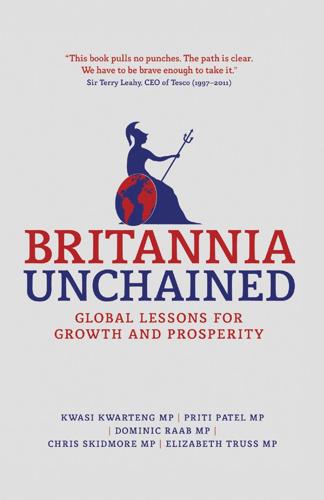
Britannia Unchained: Global Lessons for Growth and Prosperity
by
Kwasi Kwarteng
,
Priti Patel
,
Dominic Raab
,
Chris Skidmore
and
Elizabeth Truss
Published 12 Sep 2012
Index Compiled by Sue Carlton 9/11 terrorist attacks 29 Addison Lee minicabs 62, 63 Airbnb 98 Allensbach Institute 40 America see United States Amin, Idi 9 antisemitism 86 Antrobus, Lavern 75 AOL 81 Apple 60, 81, 91, 105 The Apprentice 75 apprenticeships 74 ArcelorMittal 73 Argentine military junta, defeat of (1982) 10 ARM 68 austerity measures 3, 36, 66 Australia 30, 32–3, 65, 88, 111 Bakewell, Joan 109–10 Balls, Ed 25–6, 27, 28, 29, 30, 31, 33 Balls, Michael 25 Bank of England independence 25 see also central banks bankruptcy 91, 92 see also business, and failure banks Australian 33 bailouts 12, 33 Canadian 4, 13, 33–5 Chinese 95 and mathematical knowledge 45, 47–8 Bar-Natan, Bernard 78–80, 84 Basel II regulations 47 Beleza Natural 103–4 Beuchler, Simone 102 Black Wednesday 25 Blair, Tony 17, 24, 27, 29, 115 Blanchflower, David 20 boom and bust, end of 25, 27, 30, 115 Branson, Richard 97 Brazil 5, 100–6, 112, 113, 115 crime 102–3, 105 democratic elections 104 demographics 104 education system 105 and global recession 101 and international investment 105 military coups 104 Olympic Games (2016) 101–2, 103 and optimism 5, 100–2, 103, 105, 106, 111 poverty and inequality 102, 104–5 productivity 105, 115 BRIC (Brazil, Russia, India, China) economies 10 see also emerging economies Britain see United Kingdom British Chamber of Commerce survey (2011) 87 British film industry 97 British Social Attitudes survey 109 Brittan, Samuel 20 Brown, Gordon 17, 24, 25, 26–9, 30, 33, 36 Buckley, Sir George 58 business 2, 3–4 enterprise zones 88 and failure 91–2, 95–6, 99 and informal economy 88–9 and regulation 87–8, 89 Callaghan, James 24, 114 Cameron, David 20 Campbell, Kim 16 137 138 Britannia Unchained Canada 4, 12, 13–19, 32, 33–7 banks 4, 13, 33–5 cutting deficits 4, 14–18, 30, 32, 37 diversified economy 34 education 36, 37 financial regulation 34–5 points-based immigration system 36 spending cuts 17–18 CDOs (collateralised debt obligations) 47, 48 CDSs (credit default swaps) 47 celebrity culture 4, 74–5, 76, 115 central banks independence 25, 27 see also Bank of England Centre for Economics and Business Research 101 Centre for Social Justice 67, 70, 73 Charles II, King of England 21 childcare, cost of 71 Chile 30, 32 China 10, 46, 53, 113, 115 aging population 106, 107 education 43, 44, 113 Chinese students in UK 58–9, 72 enterprise culture 95 informal economy 89 patent registration 54 Chrétien, Jean 16–18, 35, 36 chutzpah 81–2 Cidade de Deus slum 100 City of God (2002) 100 Clark, Joe 15 Clarke, Ken 27–8 Clinton, Bill 25 ComRes poll 87 Confederation of British Industry 74 Conservative Party (Canada) 35 consumer law 89 Cool Britannia 10, 115 Costa, Edivan 103 credit card debt 12, 30 Crosland, Anthony 26 Crow, Bob 63 Crowdcube 98 crowdfunding 98 Darling, Alistair 111 Day Care Trust 71 De Gaulle, Charles 8, 105–6 Deak, Lex 92 debt 10, 12, 19–24, 30–3, 115 debt delusion 19–20, 23 and default 21–2, 101 and economic growth 21, 22, 23–4 and financial crises 22–3 and future generations 67, 70 and responsible spending 24, 33 deficits 23–4 see also United Kingdom (UK), and deficit; Canada, cutting deficits; debt delayed gratification 71–2 demographics 106–11 population aging 32, 100, 101, 106–7 population growth 9, 113 Devey, Hilary 75–6 Dickson, Julie 35 Diefenbaker, John 15 dot com bubble 11, 29, 94 Dragons’ Den 75 Duncan, Arne 38 Duncan, Emma 57 Duncan-Smith, Iain 75 Dyson, , James 97 Economic Freedom of the World (Cato Institute) 36 economic growth 113 and demographic dividend 108 unsustainability of 9, 10 Economic Stabilisation Plan (Israel) 83 Edison, Thomas 91 education 4–5, 38–60 comparing school systems 38–41 cramming establishments 43–4 and graduate jobs market 44–5 and hard work 50, 57, 59 Index and parental aspiration 57, 59, 72–3 students choosing easier subjects 42–3, 45, 46–7 and work experience 43, 74 see also United Kingdom (UK), education; Programme for International Student Assessment (PISA) Edward III, King of England 21 emerging economies 3, 11, 113, 115 and scientific development 52, 53 and women 50 see also Brazil; China; India; Mexico; South Korea Enron 92 enterprise zones 88, 94 entrepreneurship Brazilian shantytowns 103–4 and courage 98–9 in US 90, 93–4, 96–7 and work ethic 67–8 see also Israeli entrepreneurial culture Erlich, Yigal 83, 84–5 Eurozone crisis 3, 12, 21, 37, 114 Exchange Rate Mechanism 24–5, 115 Facebook 55, 76, 95 failure as part of business 91–2, 95–6, 99 see also risk Famine, 1975!

Buying Time: The Delayed Crisis of Democratic Capitalism
by
Wolfgang Streeck
Published 1 Jan 2013
Italy has a tradition of government by a strong central bank – one which Mario Draghi, governor of the Bank of Italy from 2006, after his time at Goldman Sachs, until his appointment as president of the ECB, continues today at EU level.3 In the 1990s, it should be noted, the extensive transfer of government powers from the discredited party system to a central bank independent of it was possible in part because fulfilment of the entry conditions for the European Monetary Union was seen as an overarching national interest. In Europe as in the United States, crisis therapy based on artificial money could be successful in the short run: that is, bankers’ bonuses and shareholders’ dividends might recover, and the risk premiums required by ‘the markets’ for the purchase of government securities might again be affordable after the central bank takes over the risk.
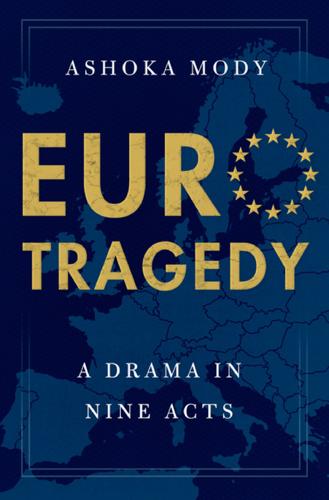
EuroTragedy: A Drama in Nine Acts
by
Ashoka Mody
Published 7 May 2018
He wrote that he had protested against the German obsession with fiscal “stability,” but his pushback “was not well-received by the super-orthodox Germans and Dutch.”122 The Germans also insisted that the new central bank be independent, a demand consistent with German tradition and the global trend at the time. The laudable goal was to minimize political interference in the central bank’s operations. But at Maastricht, in a significant departure from international practices, Europe’s proposed central bank was set up to be super-independent. Elsewhere, even “independent” central banks are accountable to elected representatives. In the United States, the General Accounting Office has “wide latitude to review Fed operations,” and the US Congress exercises oversight of the Fed’s operations to ensure that monetary policy is conducted “reasonably and in the national interest.”123 In principle, Congress can also change the Fed’s mandate.
…
The Lamfalussy appendix to the Delors Report had laid out the problems and the implications of the system being set up (Lamfalussy 1989). Only an outsider could question such sweeping independence for the ECB. In 1997, Paul Volcker, the legendary former chairman of the Fed and himself an uncompromising advocate of central-bank independence, emphasized that central banks needed nevertheless to be politically accountable. A central bank, he said, “must be able to justify its policies to the general public and to political leaders.”124 Volcker was, therefore, sympathetic to the French demand for regular communication between the ECB and an intergovernmental council; in such a forum, governments would convey their economic and political priorities to the ECB.
…
In an international context, where the countries adopting the single currency did not trust one another, the prime objective was to ensure that a member state could not hijack the central bank. On this matter, the Germans were unwilling to make concessions, especially as the French had made it clear that they would attempt to influence European monetary policy if they could. The German position won the day because there appeared to be no other legitimate option. The proposed central bank’s independence necessarily came with a simple rule to determine the conduct of monetary policy. Achieving price stability would be the only goal of the ECB. Unlike the Fed, which famously had a “dual mandate” of fostering both price stability and “maximum sustainable employment,” the ECB would not act specifically to improve employment prospects.
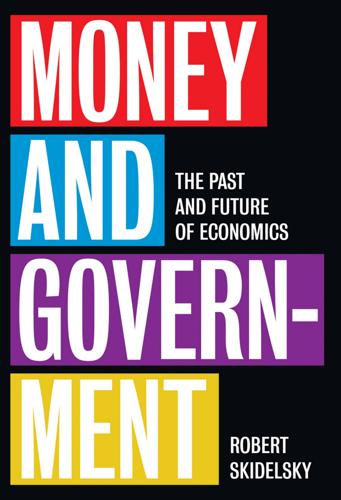
Money and Government: The Past and Future of Economics
by
Robert Skidelsky
Published 13 Nov 2018
T h e I n f l at ion P robl e m In 1984, the then British Chancellor, Nigel Lawson, announced that the object of macroeconomic policy was the ‘conquest of inflation’. This object came to be embodied in mandates given to nearly all central banks over the following years: to hit pre-set ‘inflation targets’ – usually in the region of 2 per cent annual inflation. To achieve these targets, central banks were given ‘operational independence’ over interest rates. Today, the urgent need is to ‘conquer under-employment’. In this situation, to be left with the ‘conquest of inflation’ as the only extant macro-policy aim is archaic, indeed nonsensical, when, for the last ten years, the problem has been deflation, not inflation.
…
Because fiscal policy is the more powerful weapon (and because governments, unlike central bankers, are accountable to voters), the government should be the senior partner in macro-policy. Specifically, the trade-off between inflation and unemployment at any one time, or over several years, should be a matter of political judgment. It cannot be outsourced to technicians, whose job should be to advise on the consequence of political choices, not to make them. 5. Central banks would lose their independent control of interest rates. Their mandates should be to support the economic policy of the government. They would advise governments on Bank Rate, not decide it, and they would, uniquely for a state agency, 360 r e i n v e n t i ng p ol i t ic a l e c onom y have the right to publish their dissent.
…
Hawtrey (1913), p. 260. Pigou (1913). Hawtrey (1925), p. 40. Ibid., p. 44. This would not be true if the government borrows funds which would otherwise have gone into foreign investment (p. 46), a view also championed by Keynes. Hawtrey’s argument presupposes that the central bank has it in its power to ‘create credit’ independently of the demand for credit. Winston Churchill, Budget speech of 1929, quoted in Peden (2004), p. 57. ‘The Means to Prosperity’, in Keynes (1978), pp. 335–66. Crafts and Mills (2013). One big difference between Nazi Germany and the UK was that Germany was much nearer to being a closed economy, from which the 402 No t e s 38 39 40 41 42 43 44 45 46 47 48 49 50 51 52 53 54 55 56 multiplier effect of public expenditure was prevented from seeping away through imports.
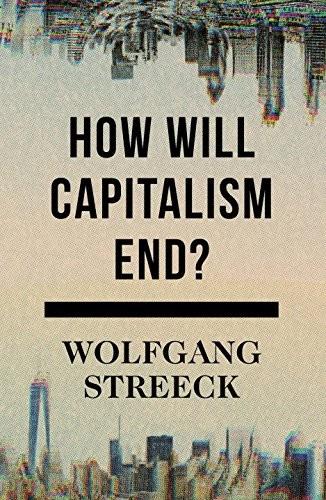
How Will Capitalism End?
by
Wolfgang Streeck
Published 8 Nov 2016
By providing its customers with liquidity, the financial industry establishes control over them, as is the very nature of credit. Financialization turns the financial sector into an international private government disciplining national political communities and their public governments, without being in any way democratically accountable. The power of money, wielded by central banks both independent from states and dependent for the success of their monetary policies on the cooperation of the private financial sector, takes the place of the power of votes, adding importantly to the decoupling of democracy from political economy that is the central requirement of the Hayekian model, if not of growth, then of profit growth.
…
The technical term is cumulative advantage. 4See Emmanuel Saez, ‘Striking It Richer: The Evolution of Top Incomes in the United States’, 2 March 2012, available via Saez’s personal web page at UC Berkeley; and Facundo Alvaredo, Anthony Atkinson, Thomas Piketty and Emmanuel Saez, ‘The Top 1 per cent in International and Historical Perspective’, Journal of Economic Perspectives, vol. 27, no. 3, 2013, pp. 3–20. 5Bank for International Settlements, 83rd Annual Report, 1 April 2012–31 March 2013, Basel 2013, p. 5. 6Even that may be less than promising in countries like the U.S. and U.K., where it is hard to see what neoliberal ‘reforms’ still remain to be implemented. 7See Armin Schäfer and Wolfgang Streeck, eds, Politics in the Age of Austerity, Cambridge: Polity 2013. 8Walter Korpi, The Democratic Class Struggle, London: Routledge and Kegan Paul 1983; and Crouch, Post-Democracy. 9This is the Public Choice view of fiscal crisis, as powerfully put forward by James Buchanan and his school; see for example Buchanan and Gordon Tullock, The Calculus of Consent: Logical Foundations of Constitutional Democracy, Ann Arbor: University of Michigan Press 1962. 10One often forgets that most central banks, including the BIS, have long been or still are partly under private ownership. For example, the Bank of England and the Bank of France were nationalized only after 1945. Central bank ‘independence’, as introduced by many countries in the 1990s, may be seen as a form of re-privatization. 11Of course, as Colin Crouch has pointed out, neoliberalism in its actually existing form is a politically deeply entrenched oligarchy of giant multinational firms; see Crouch, The Strange Non-Death of Neoliberalism. 12See Daniel A.

When the Money Runs Out: The End of Western Affluence
by
Stephen D. King
Published 17 Jun 2013
This was a reaction to the excess inflation of the 1970s, a period during which central banks were too often required to do the bidding of their political masters. For a while, inflation was endemic, leading to losses for those on fixed monetary incomes – most obviously pensioners – and huge distortions to the price mechanism – Adam Smith's ‘invisible hand’. By making central banks independent, and thus no longer subject to the temptations of the electoral cycle, the hope was that inflation would eventually be brought back under control, leaving the world a much happier place. The financial crisis has destroyed this separation of monetary church from state. By altering the yield on government debt, quantitative easing has, in effect, brought governments and central banks back together again.
…
The likely result is a rise in government bond yields as the central bank's underwriting comes to a conclusion. If, however, the economy is still weak, the rise in bond yields will surely be regarded as a threat to economic recovery. The government will then blame the central bank for undermining the nation's economic health and the central bank's independence will then be under threat. Far better, then, simply to continue with quantitative easing or even, perhaps, to expand the central bank's remit. There are two ways of doing so. The first is for the central bank to buy a much wider range of assets – not just government paper but also asset backed-securities, corporate bonds, foreign currency or maybe even equities.
…
Darling, Back from the Brink (Atlantic Books, London, 2011). 23. R. Paul, ‘Our Central Bankers Are Intellectually Bankrupt’, Financial Times, 2 May 2012. 24. M. Draghi, Introductory statement to the press conference (with Q&A) following the Governing Council meeting of the European Central Bank, Barcelona, 3 May 2012. 25. Although Scottish independence might change all that. 26. See my article ‘Rouble Poses Worrying Parallels for Euro Crisis’, Financial Times, 9 Aug. 2011. CHAPTER 5: THE LIMITS TO STIMULUS: LESSONS FROM HISTORY 1. J. M. Keynes, ‘The Economy Bill’ (Sept. 19, 1931)’, in Essays in Persuasion (Norton, New York, 1963). 2.
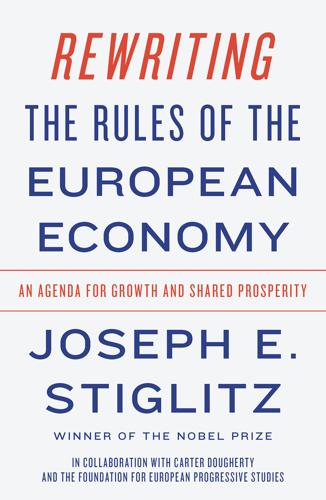
Rewriting the Rules of the European Economy: An Agenda for Growth and Shared Prosperity
by
Joseph E. Stiglitz
Published 28 Jan 2020
The issue of governance becomes even more important as central banks have taken on roles that go well beyond simply setting interest rates, such as we have seen in the context of the interventions in the euro crisis. Other countries have had independent central banks, but their central bank governors have realized that even though independent, there has to be some degree of political accountability and sensitivity. Echoing this sentiment, Paul Volcker, chairman of the Federal Reserve from 1979 to 1987, famously said, “Congress has created us, and Congress can un-create us.” Both during the crisis and in the run-up to it, some of the best-performing central banks included those with less independence, such as in India and Brazil. Here, what matters is not only de jure independence, but also how central bankers and governments behave (the norms and customs).
…
Moreover, the idea that good macroeconomic outcomes could be achieved without close coordination between fiscal and monetary policies, as well as between policies conducted at the European and the national levels, was also based on simplistic and unrealistic models. Deficiencies in ECB Governance There was another idea that was fashionable at the time that infected the governance of the ECB: a central bank should be “independent,” which in practice meant “free of political control.” The idea was to give the ECB a clear mandate (price stability) and leave the rest to technocrats. It also followed that if those lacking specialized knowledge would simply step aside, people trained in the task could steer monetary policy in an optimum direction.
…
Decisions are made by a council consisting of the six executive board members and, on a monthly rotating basis, the heads of four of the five largest Eurozone countries’ and 11 of the 14 smaller countries’ central banks. The executive board members, in turn, are appointed by the heads of government of the Eurozone countries for an eight-year, nonrenewable term. Each of the central banks within each country is required to be independent. The ECB was ensconced in Frankfurt, away from the hurly-burly of Brussels, with its politicians and Eurocrats. The bank assumed new quarters in a handsome twin-skyscraper construction designed by an avant-garde Austrian architect. The 1992 Maastricht Treaty legally ticked all the boxes to fence off the ECB from political pressure.
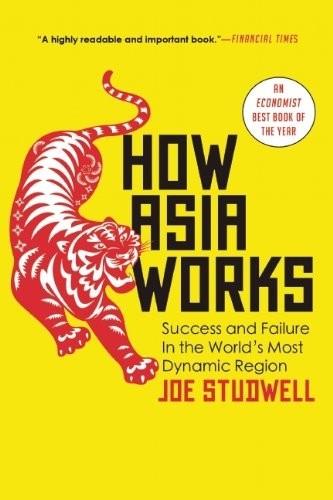
How Asia Works
by
Joe Studwell
Published 1 Jul 2013
It was in this shake-out that Chung Ju Yung’s Hyundai obtained control of Kia and, with it, unassailable dominance of the automotive sector.29 What was different to every preceding crisis was that on this occasion the Korean government heeded IMF advice about structural changes to the financial system. The country acquired north-east Asia’s most ‘orthodox’ financial system, with an independent central bank, wholly independent commercial banks, large foreign-controlled banks and much increased rights for independent investors in stock and other markets. Despite a financial sector wobble over increased consumer debt in the early 2000s, so far the deregulated system has not produced another crisis. However it remains to be seen precisely how well timed Korea’s transition to an Anglo-Saxon financial system was.
…
They funded whatever activities their owners saw fit – usually their own. Indonesia’s political and economic conditions deteriorated in the 1950s and Sukarno declared martial law in 1957, promising a more focused, state-led developmental effort. He removed remaining legal guarantees of central bank independence (just as Park Chung Hee would in 1961). He made the state banks almost completely dominant in the allocation of credit and focused them on supporting businesses that he nationalised from the Dutch. Bank Indonesia was told both to lend directly to favoured projects and to rediscount aggressively to the banking system.
…
The Nikkei 225 Index was 3.1 times higher at its peak of just under 39,000 at the end of 1989 than in September 1985. The Urban Land Price Index peaked in September 1990 at just under four times the September 1985 level. 15. See Woo, Race to the Swift, p. 43. It was the US advisers who also oversaw the creation of an independent central bank which Park made very un-independent. 16. The consumer price index increased an average 17 per cent annually in the 1960s and 19 per cent annually in the 1970s. The peak of rediscounting was during the HCI drive in the late 1970s. 17. See Woo, Race to the Swift, pp. 113 and 157. She cites a 1980 survey which suggests that 70 per cent of household savings at that point were kept with illegal kerb lenders.
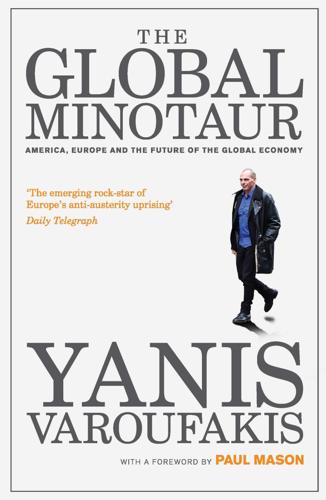
The Global Minotaur
by
Yanis Varoufakis
and
Paul Mason
Published 4 Jul 2015
However, as the price for carrying the German government with him, the ECB’s president, Mr Mario Draghi, also announced that these ‘operations’ (which are now known as outright monetary operations, or OMT) would be conditional on further austerity, vouched for by inspectors. Thus, surreptitiously, Europe’s central bank sacrificed, on the altar of keeping on Germany’s ‘right side’, its most prized principle: central bank independence.13 Many a reader may protest that I left out of my short list of significant changes the June 2012 Summit Agreement according to which Europe’s leaders, at the insistence of the Italian and Spanish prime ministers, agreed to separate the continent’s banking crisis from the debt crisis. How would that separation be achieved?
…
Mr Mario Draghi’s choice of words, by which to signal unambiguously that he was talking about the Eurozone’s dismantling, was that there was now a serious ‘convertibility risk’ – by which he meant that there was a risk that all prices in the eurozone would be ‘converted’ to other, new, national (one presumes) currencies! 13. This loss becomes clear the moment one realises that the ECB has chosen to conduct monetary operations that will stop not when the ECB judges they must but when Brussels or the IMF say it should cease and desist. This is, if nothing else, ample proof that the fabled central bank independence was never a real principle but, rather, a pretext for never financing anyone other than ‘needy’ bankers. Postscript 1. These words were conveyed to us by Ron Suskind in his article in the New York Times Magazine, October 2004. Though not attributed, many believe they were spoken in the summer of 2002 by Karl Rove, a senior aide to President George W.
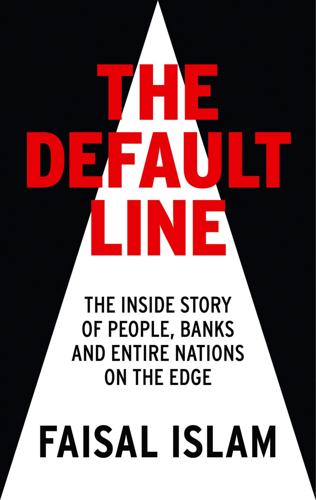
The Default Line: The Inside Story of People, Banks and Entire Nations on the Edge
by
Faisal Islam
Published 28 Aug 2013
Is Britain’s economic predicament credibly consistent with a target inflation exceeded for most of the past half-decade. Can the target be altered without igniting inflationary expectations? And does Bank of England independence really mean anything now it’s the largest purchaser and holder of UK government debt? Fiscal dominance is in fact more the norm than full central bank independence. The independent central bank doggedly pursuing an inflation target may turn out to be a two-or-three decade fad. QE is a policy that is massive, controversial, remarkably redistributive, uncertain in its effect, and is now resulting in a myriad unintended consequences. There are diplomatic and political impacts.
…
Germany’s sensitivity about its history in the first half of the twentieth century does much to explain its reluctance to assume an imperium in Europe in the early years of the twenty-first. German government officials point out that the main player in the crisis, the European Central Bank, although based in Frankfurt, is independent, not an organ of the German state. ‘We are not in the Troika,’ they insist, when asked if they are fed up with Greece. Ironically, no Germans today seem to remember the period of deflation and political extremism that accompanied Chancellor Brüning’s austerity policies of 1929–32, although there is a small exhibit on this at the Bundesbank museum.
…
Both nations had descended into financial bedlam, despite mainly sticking to the euro’s Stability Pact. The problems had come in the banking system. The ECB was willing to step up. Yet it had absolutely no experience of banking supervision. Suddenly the ECB’s democratic deficit threatens to turn into a chasm. The origins of the need for central-bank independence over monetary policy have strong foundations. But is a strong political independence appropriate when the central bank is the driving force behind labour-reform policies, fiscal plans, and now continent-wide banking policy? By 2014, the ECB will face its first of a series of huge new tests.
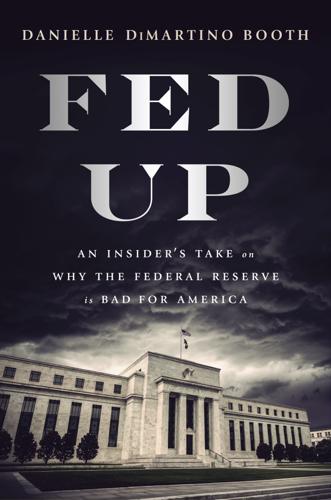
Fed Up: An Insider's Take on Why the Federal Reserve Is Bad for America
by
Danielle Dimartino Booth
Published 14 Feb 2017
But the “secret” loans made to Wall Street’s big banks in the aftermath of the financial crisis engendered deep suspicion. Paul’s bill would allow the GAO to question the Fed’s decision-making process. “I want to be completely clear. I strongly oppose ‘Audit the Fed,’” Yellen told Congress. “Central bank independence in conducting monetary policy is considered a best practice for central banks around the world. Academic studies, I think, establish beyond the shadow of a doubt that independent central banks perform better.” Can’t argue with those “academic studies.” (Except that devilish detail that most can’t be replicated.)
…
Central banking around the world has become a growth industry, populated with PhD economists and a few former investment bankers. These unelected men—and a few women, most notably Yellen—control the world’s economic system. They are arguably more powerful than the world’s political leaders chosen by voters. Under the banner of “central bank independence,” they manipulate the monetary system based on their models and their connections. And they are increasingly scary. In May 2016, Vitas Vasiliauskas, a Governing Council member of the ECB, told Bloomberg that central bankers still had tools to handle economic shocks despite negative interest rates.
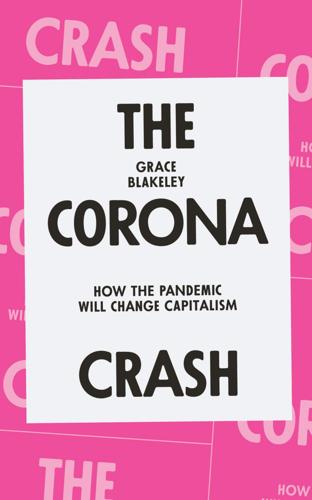
The Corona Crash: How the Pandemic Will Change Capitalism
by
Grace Blakeley
Published 14 Oct 2020
As we have seen, the foundation of this ideology is the separation between politics and economics.21 For this ideology to retain its credibility, certain areas of economic policy must be naturalised and their distributive implications hidden to support the fiction that outcomes in these areas are the inevitable result of the operation of market forces – for example, the idea that there is a ‘natural’ rate of interest determined by the demand for and supply of money has been a powerful force for legitimating central bank independence and the technocratic determination of monetary policy.22 But retaining this distinction has become much harder in an era where state intervention is necessary to ensure the continued functioning of markets. When states are targeting asset prices, providing wholesale bailouts to private corporations and buying up substantial portions of their own debt, it becomes far harder to argue that interventions to promote the public good are undesirable because they might disrupt the operation of the market mechanism.

The Hidden Half: How the World Conceals Its Secrets
by
Michael Blastland
Published 3 Apr 2019
Some economists whose formative experience was in this second period of rampant inflation during the 1970s acquired, said Sir Terry, a different searing memory and theoretical faith: that inflation was the first evil. Never again, they said. One result was a movement for independent central banks charged with controlling inflation.22 These independent central banks – like the European Central Bank, which committed a whole continent to an independent monetary policy enshrined in treaty, the Bank of Japan and the Bank of England – seemed to help in the fight against inflation. Where inflation had been high, it tended to fall sharply and stay low. . . which contributed, according to one account of the period, to falling interest rates on government securities. . . which caused a chase for returns on other investments. . . which led money to pour into sub-prime mortgages (which had also taken off as interest rates had fallen), and. . . well, you know the rest: a global banking crisis in 2008–9 and a deep recession.
…
Location shifts seem to be about time, not place (confusingly), and are sometimes used in the critique of economic models that try to take all relevant information today to form a ‘rational expectation’ of tomorrow, or to put a ‘present value’ on what might happen in future. Those models will be less valid, the thinking goes, if there is a location shift. 21 Mervyn King, The End of Alchemy, London, Little, Brown, 2016. 22 New Zealand’s Central Bank became independent in 1989. The European Central Bank was established in 1998. The Bank of England took independent control of UK monetary policy in 1997. 23 John L. Comaroff and Paul C. Stern, ‘New Perspectives on Nationalism and War’, Theory and Society, vol. 23, no. 1, 1994, pp. 35–45. 24 As Daniel Boorstin has written: ‘Much of what passes for history is a description in the past tense of the ghosts of the future.’
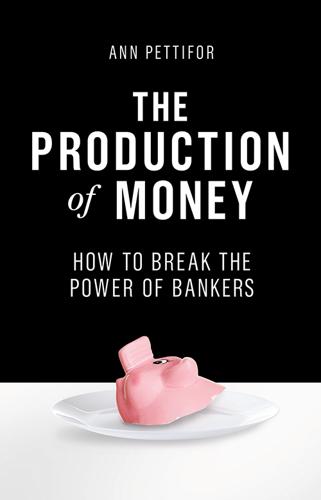
The Production of Money: How to Break the Power of Banks
by
Ann Pettifor
Published 27 Mar 2017
It is part of, and dependent on, the public infrastructure that makes up a nation’s monetary, economic, taxation, legal and criminal justice systems. In the first place, as explained above, all money is based on a currency, valued, authorised and issued by a country’s central bank, and backed by taxpayers via their government. While some central banks may be deemed ‘independent’ of the government or public sector, in reality all central banks depend, for their power and authority, and for the value of the currency, on the support of taxpayers within their sovereign boundaries. Central bankers also have different mandates. Some use their mandates to prioritise the interests of the private banking sector; the European Central Bank (ECB) is the most prominent in this regard.
…
Economic orthodoxy, Keynes and the Great Depression As of the 1919 Versailles conference after the First World War, financial interests dictated the economic terms for peace. With scarcely any recognisable difference from the gold standard, finance’s ‘economic terms’ back then were made up of the usual orthodoxies familiar today. They included a requirement that central banks remain independent, that government spending should be restrained, that the mobility of capital be unfettered, and that high real rates of interest should prevail. As soon as 1923, with Weimar hyperinflation, the economic arrangements collapsed with a rapidity and severity that is astonishing. Depression began first in Germany and then moved to include the United States after the Crash of 1929.
…
In other words, while governments may provide the backbone to public money, and be beneficiaries of the ‘People’s QE’, they are not in the driving seat. Central bankers are. These proposals place great power in the hands of these technocrats when, to my mind, elected representatives should be masters of this process with the central bank as servant – albeit an independent, open-minded and well-qualified servant. Donald Trump and ‘helicopter money’: the economic, social and political consequences It is also not acceptable, in my view, for central bankers or government representatives to be granted money-printing powers without clear, transparent checks and balances.

MegaThreats: Ten Dangerous Trends That Imperil Our Future, and How to Survive Them
by
Nouriel Roubini
Published 17 Oct 2022
If central bankers schooled in economics and boom-and-bust cycles are locked in a debt trap, it’s even harder to be sanguine without seasoned economists in command. The watch has changed. In 2021, former lawyers Christine Lagarde and Jay Powell ran the European Central Bank and the Federal Reserve. Martin Bailey at the Bank of England came from banking operations, not a background steeped in monetary policy. So what have central banks become when the fig leaf of their independence has been ripped off as debts mount? They have strayed from a rigorous focus on the long-term big picture. Instead, they take cues from politicians and leveraged investors who cater to every wind of change. When short-term goals dictate policy, they lean heavily on easy money and credit because that is what voters want and leveraged markets need to avoid crashing.
…
Because a valid public policy goal is to maintain maximum sustainable employment, Congress charged the Fed with a mandate on top of price stability: keeping a lid on unemployment.8 When inflation and unemployment both worsened during the 1970s, senior officials said wait a moment; very loose monetary policies cause high inflation. We’ve all seen the cost of inflation. Let’s make central banks independent and give them only one key goal: price stability. Stable prices blunt inflation and negative consequences that debase the value of fiat currencies. Chastened by stagflation that proved so hard to defeat, many central banks—but not the Fed—restored the focus on price stability only. They proposed an inflation target that would encourage lending without jeopardizing price levels.
…
And Congress, under both the Trump and Biden administrations, responded with massive outlays: under Trump two acts of stimulus, of $2 trillion and $900 billion in size in 2020; under Biden, a stimulus of $1.9 trillion, followed by an infrastructure plan of about $1 trillion and not-yet-legislated plans of further trillions of social infrastructure spending. A lot of that spending was effectively financed by the Fed via its QE policies, an effective form of MMT. A related unintended consequence: the convergence of fiscal and monetary goals signals the erosion of central bank independence. History teaches the essential importance of keeping politics out of monetary policy. Yet during the COVID-19 crisis, the direct monetization of fiscal deficits and debts became a de facto norm. The European Central Bank, launched in 1998 with a mandate to maintain price stability, has scrambled to redefine its purpose in an uncharted environment.

More: The 10,000-Year Rise of the World Economy
by
Philip Coggan
Published 6 Feb 2020
In the US, the inflation rate rose from 5.8% in 1970 to 11.1% in 1974 and 13.5% in 1980.77 In Britain the annual inflation rate rose from 6.5% in 1970 to 22.7% in 1975, and did not fall below 5% until 1983.78 In Japan, inflation reached 23% in 1974.79 What caused these price rises? This was an era before central banks had independence, and Arthur Burns, the chairman of the Federal Reserve, found it difficult to tighten monetary policy in the face of opposition from President Nixon. US money supply growth was above 12% in 1971 and 1972, while real short-term rates were negative (inflation was higher than the interest rate) from 1973 to 1979.
…
Consumers and business had to believe that the central bank could deliver low inflation. As a result, they would ask for limited wage rises and would only push the prices of products up slowly. The result would be that the target was delivered. State of independence Credibility required making central banks more independent, a trend that started with New Zealand in 1989 and saw Britain, Japan and the euro zone all following suit. These banks were given an inflation target and left to get on with the job of meeting it. Central banks hired vast hordes of economists, sought out new data, interviewed businesses and consumers for evidence of their outlook, and published detailed forecasts for growth, unemployment and inflation.
…
Nevertheless, to a prudent central banker, this sounds like the “monetisation” of budget deficits and is the sort of thing that leads to the hyperinflation seen in Weimar Germany, and, more recently, in Zimbabwe and Venezuela. If ever a government in a developed nation decides to pursue this theory, expect to see either a conflict with the central bank or (more likely) the end of central-banking independence. There is a fundamental problem about turning over policy decisions to central banks on the grounds of their expertise. Economics is a social science. Making precise forecasts is not possible in the way that it is in chemistry. There are too many variables to analyse, not least that the mere act of publicising economic forecasts can alter people’s behaviour.

The Rise and Fall of Nations: Forces of Change in the Post-Crisis World
by
Ruchir Sharma
Published 5 Jun 2016
In the late 1990s and 2000s, a new generation of leaders brought a new ethos of government spending responsibility and accountability to the emerging world. They began investing more wisely, including in supply networks, and stealing less. They also granted central banks more political independence, which they need to fend off easy-money populists. This movement got little public notice or support. There were no public movements to “Free the Central Banks!” Yet no single act could have done more to control basic prices for the man on the street. And now central bank independence has become an important measure of a national commitment to containing inflation. For much of the postwar era, in the political battles over central banks and easy money, the cause of fighting inflation often lost.
…
For much of the postwar era, in the political battles over central banks and easy money, the cause of fighting inflation often lost. Even in many emerging countries where the central bank was nominally independent—and the central bankers well understood the threat of inflation—they were not independent enough to resist public or private political pressure to keep interest rates and borrowing costs low. But the crises of the 1970s showed political leaders how painful inflation can be, particularly for poor- and middle-class voters, who are hit hardest by rising prices for basic staples. Those crises turned many politicians into anti-inflation warriors.
…
The global revolution that freed central banks to target inflation began in tiny New Zealand. As described by the journalist Neil Irwin, it was triggered by a kiwi fruit farmer turned central banker named Don Brash, who had seen his uncle’s life savings wiped out by inflation in the 1970s and ’80s. New Zealand passed a law in 1989 granting its central bank independence from the political process and directing it to set a target for inflation. Unions screamed that the move could destroy jobs if large businesses were not able to borrow at cheap rates. Manufacturers called it “undemocratic.” One real estate developer demanded to know Brash’s weight so he could test a rope to hang him on.
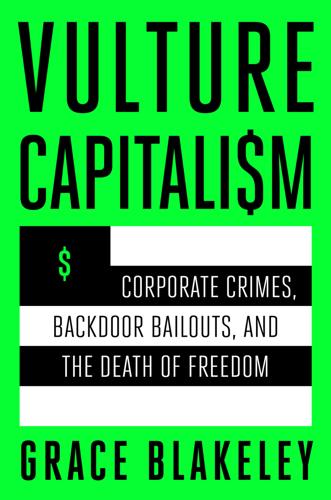
Vulture Capitalism: Corporate Crimes, Backdoor Bailouts, and the Death of Freedom
by
Grace Blakeley
Published 11 Mar 2024
It has now become very clear that our public economic institutions don’t work for us, they work for capital. This shift has, however, created some problems for the legitimacy of central banks. As the political economist Benjamin Braun has argued, the problem with QE is that it shows that central banks aren’t as “independent” as they claim to be.97 The idea behind central bank independence is that there is a natural long-term rate of interest—the rate at which supply and demand for money are in equilibrium, prices are stable, and full employment is maintained—and the job of central bankers is to align the central bank rate with this “real” interest rate.
…
Ukraine’s economy has been devastated over the course of successive rounds of structural adjustment: even before the Russian invasion, its GDP per capita was, in purchasing-power-parity terms, 20 percent lower than it was in 1990.173 As Joseph Stiglitz put it: “The results of the policies enforced by Washington Consensus have not been encouraging: for most countries embracing its tenets development has been slow, and where growth has occurred, the benefits have not been shared equally; crises have been mismanaged; the transition from communism to a market economy… has been a disappointment.”174 But the negative economic impact of structural adjustment should not have come as a surprise. Rather than promoting growth or development, structural adjustment was designed to signal the “predictability” of poor nations’ policies to investors and creditors.175 Much like the move to central bank independence, it was designed to insulate state policy from democratic accountability and ensure that “economic populism” did not undermine capital accumulation. In other words, the Western development agenda became a kind of “anti-politics machine,” in which the whims of “experts” substituted for democratic deliberation.176 Whether this new regime promoted development was, at best, a secondary consideration.
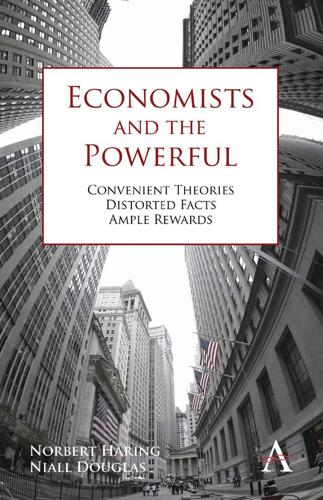
Economists and the Powerful
by
Norbert Haring
,
Norbert H. Ring
and
Niall Douglas
Published 30 Sep 2012
Why such a private institution can be in charge of disbursing trillions of taxpayers’ dollars with no political oversight is another matter. That such an institution should be put in charge of consumer protection in the banking business is hard to understand unless Congress has been captured by the interests of the banking industry. A key ingredient of any meaningful and lasting reform is to make central banks more independent from the private banking sector. MONEY IS POWER 89 Otherwise, it is only a matter of time until the politically independent technocrats at the central banks help the banking sector to undo or circumvent the restrictions that fleeting public outrage has prevented them from blocking.
…
There certainly was a time when autocratic governments might be less trusted than private banks to provide a stable supply of a paper currency, and therefore they had to cooperate with private bankers. Times have changed. Today, governments need not be dependent on the good will of financiers. Governments observe the rule of the law. They made their central banks independent and gave them a clear and credible mandate to limit inflation. If fulfillment of this mandate is currently in question, this is not because governments have decided to cheat, but rather because excessive credit creation by the private banking sector has caused a major crisis that ruined public finances.
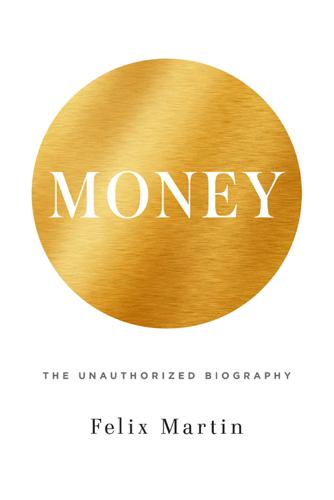
Money: The Unauthorized Biography
by
Felix Martin
Published 5 Jun 2013
Henceforth, governments should therefore confine their role to establishing a reasonable inflation target, and then delegate the job of setting interest rates to an independent central bank staffed by able technicians.26 On such grounds, the Bank of England was granted its independence and given a mandate to target inflation in 1997, and the European Central Bank was founded as an independent, inflation-targeting central bank in 1998. There is little doubt that under most circumstances, low and stable inflation is a good thing for both the distribution of wealth and income, and the stimulation of economic prosperity. But in retrospect, it is clear that “monetary stability” alone was far too narrow a policy objective as it was pursued from the mid-1990s to the mid-2000s.
…
So yes: I think the time has come to abandon the cult of inflation-targeting and revert to a broader idea of what monetary policy has to achieve—and to allow the central bankers a larger set of tools to attempt these more difficult goals.” “Give a bunch of unaccountable bureaucrats an even larger set of tools? Only a socialist could come up with that!” “Not so—that brings us to the second policy. Central banks shouldn’t be independent. Or at least, not like they are now. “On the alternative view of money, the question of who decides who should issue money and on what standard is, as we discovered, a vital one. And since money is the ultimate technology for the decentralised organisation of society, there is only one answer that works—the one given by Solon.
…
Mehrling cites this as an example of how diametrically opposed the worldviews of academic macroeconomics and academic finance had become by the mid-1990s, calling it “[f]or a macroeconomist … a shocking statement.” 25. High and volatile inflation is a macroeconomic ill in New Keynesian models essentially because in the presence of sticky prices, it generates inefficient relative price changes which reduce output to below its potential. 26. The idea of central-bank independence, unlike inflation targeting, is not associated specifically with New Keynesian theory—its origins lie in an earlier literature, notably Rogoff, 1985—though it was only once the New Keynesian approach had become the most widely used framework for policy-making that it achieved a concrete institutional impact. 27.
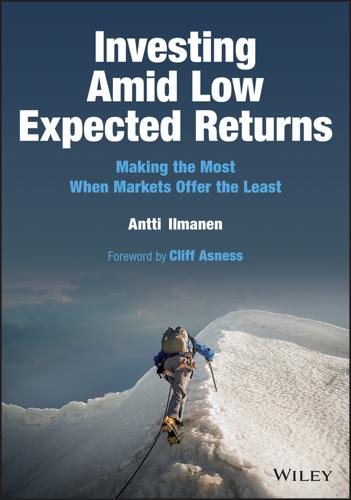
Investing Amid Low Expected Returns: Making the Most When Markets Offer the Least
by
Antti Ilmanen
Published 24 Feb 2022
The Great Moderation era since 1982 was characterized by lower macroeconomic volatility, disinflation, and global convergence toward 2% inflation. Inflation expectations also became less sensitive to labor market conditions and short-term inflation. It remains debated how much these benign developments reflected greater central bank independence and credibility (gravitational pull to their targets) versus mere luck.6 The Global Financial Crisis triggered widespread inflation concerns, given all the stimulus, yet the 2010s turned out to be a very disinflationary decade. A slow recovery led to worries of secular stagnation (growing debt and easier monetary policies were needed to sustain even moderate economic growth) and of “global Japanification” (Japan led the world by a couple of decades in demographics, excess savings, and its central bank's inability to generate inflation despite trying hard).
…
The story of the past 25 years is that US (and UK) inflation drifted from near 3% to near 2%, while staying below 2% in the euro-area, and below 1% in Japan despite the BoJ's efforts to achieve a higher inflation. Main explanations include the disinflationary impact of globalization (cheaper labor), technology, as well as central bank independence. A few decades after major central banks won the war against inflation, their concern flipped toward insufficient inflation and the dangers of deflationary recessions. Turning to expected real cash rates, they have sometimes been negative amid high inflation (around the two world wars and the first oil crisis), but being recently negative amid low inflation is exceptional.3 Globally, the long-run average real cash rate has been near zero but nearer +1% in the US since 1900 (see Figures 4.2 and 4.3).
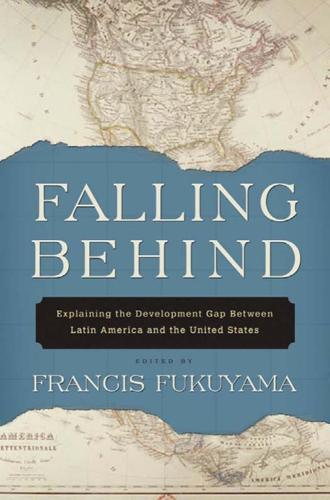
Falling Behind: Explaining the Development Gap Between Latin America and the United States
by
Francis Fukuyama
Published 1 Jan 2006
How each formal set of institutional rules plays out in practice is thus highly dependent on the local social context, tradition, history, and the like. The fact that we cannot specify an optimal set of formal institutions does not mean that we have no knowledge of the likely impact of changes to formal institutional rules. A number of institutional reforms, like a central bank or judicial independence,33 have a clear logic and are broadly accepted as being desirable. Changes in electoral rules have broadly predictable effects. For example, there are a number of recent cases where electoral reform has produced desired results: • Chile, which always had a coherent party system, has been operating since 1988 under an electoral system that was designed to force the country’s four or five large parties into two broad Left-Right coalitions, which has in fact happened. 210 Institutional Factors in Latin America’s Development • Japan changed its single nontransferable vote (SNV) system to a mixture of single-member constituencies and proportional representation in 1994.
…
It was noted earlier that few Latin American countries have sought to return to the poor monetary and fiscal policies of the 1970s and 1980s; this has been underpinned by greatly increased institutional capacity both on the part 284 Conclusion of central banks and on the part of finance ministries and budgeting authorities. Central bank independence has increased; the professionalism and levels of education of economic policy officials are in general substantially higher than a generation ago. Decentralization and Federalism Many countries, including Bolivia, Venezuela, Colombia, Peru, Argentina, and Brazil, have undertaken major reforms to shift responsibility and authority from central governments to local, municipal, and state governments.

The Corruption of Capitalism: Why Rentiers Thrive and Work Does Not Pay
by
Guy Standing
Published 13 Jul 2016
So it should be no surprise that, throughout history, banks have been vehicles for amoral behaviour, fraud and corruption. However, three new features have emerged in the globalisation era. First, governments have ended democratic control of central banks and monetary policy. Since 1980, dozens of countries have given their central bank independence. Indeed, among the triumphs of neo-liberalism was persuading even social democratic governments to privatise their central banks in all but name. One of Gordon Brown’s first acts on becoming Chancellor in 1997 was to give the Bank of England independence to set monetary policy. The surprise decision was greeted with delight by the Conservative opposition and the City of London.
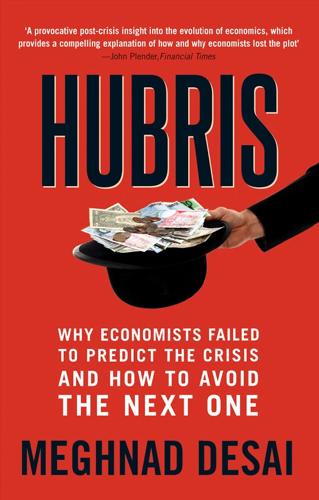
Hubris: Why Economists Failed to Predict the Crisis and How to Avoid the Next One
by
Meghnad Desai
Published 15 Feb 2015
The task of the monetary authority was to regulate the money supply so that, given aggregate supply, the price level would not show any sustained inflationary tendency. This was the policy package of the Great Moderation. The anti-inflation stance of the Central Bank entailed making it independent of the fiscal authority. Central Bank independence became a mark of the sincerity of a government. Gordon Brown, on taking office as Chancellor in the New Labour government in 1997, immediately gave the Bank of England autonomy in determining interest rates in pursuit of an inflation target. We had come a long way from the euthanasia of the rentier.
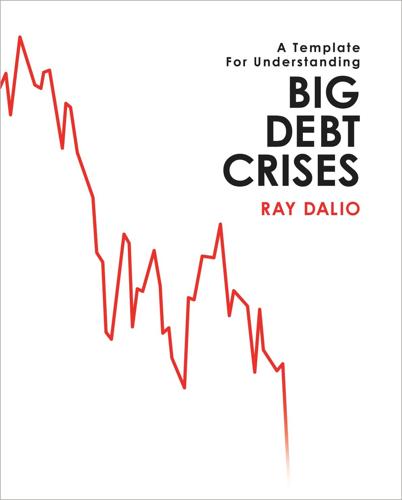
Big Debt Crises
by
Ray Dalio
Published 9 Sep 2018
The Rentenbank faced a difficult challenge as it attempted to gain credibility in the fall of 1923, but it succeeded because its fundamentals were solid. 4) Ending Monetization In order to build confidence in a new currency, countries in inflationary deleveragings need to stop monetizing debt. As long as the government can force the central bank to print to cover its liabilities, there is a risk that the new currency will be debased and its supposedly hard backing abandoned. That is one of the reasons it is important that central banks be independent of the political system. Reassurance that monetization would stop came in the form of two major announcements—one initially private and one quite public. First, on August 18, 1923, the Reichsbank informed the Weimar government that, beginning in 1924, it would not discount any additional government debt.145 Though this memo was private, it quickly circulated among the industrial elite, and it spurred policy makers to seriously reconsider the need for fiscal reforms.146 The second piece of reassuring news came on October 15, 1923, when central bank officials publicly stated that the new Rentenbank would cap total government credits (in this case at 1.2 billion rentenmarks).
…
After all, the Rentenbank lent the government the entirety of its 1.2 billion rentenmark allocation almost immediately.148 And, by December 1923, the government had already requested an additional 400 million rentenmarks.149 When officials at the Rentenbank stood firm, however, they successfully signaled the beginning of a new era of central bank independence—and the end of a long period of unchecked monetization. 5) Closing the Deficit When the central bank stops monetizing debts during an inflationary deleveraging, the government can either find new creditors to finance its deficits, close those deficits, or take control over the central bank and continue monetizing debt.
…
Ultimately, these high debts and Turkey’s dependence on foreign financing created an unsustainable situation. The Depression Phase Eventually the cycle turned, producing a self-reinforcing bust and a balance of payments/currency crisis, which ran from 1993 to 1994. High debt levels left Turkey vulnerable to a shock—which came in the form of moves by the govern- ment to undermine central bank independence. Turkey suffered a fall in foreign funding (with capital inflows falling by 8% of GDP), leading to a tightening (policy makers hiked short rates by 203%) and a meaningful decline in the currency (real FX fell by 26%)—which coincided with self-reinforcing declines in GDP (falling by 12%), and in stock prices (falling by 70%).
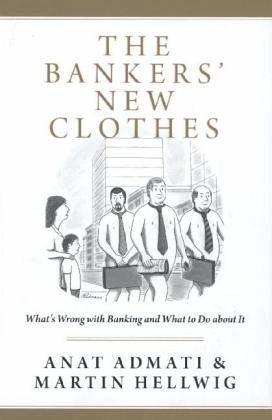
The Bankers' New Clothes: What's Wrong With Banking and What to Do About It
by
Anat Admati
and
Martin Hellwig
Published 15 Feb 2013
The relevance of this risk is made all too clear by the data that Reinhart and Rogoff present. The government debt crises in the euro area provide a vivid example. There the debt is denominated in euros. The euro is the currency of the member states of the euro area, but this currency is issued (“printed”) by the European Central Bank, a supranational institution that is independent of national governments. If the government can pay its debt by means of money creation, there is no risk of default, but the money creation is likely to cause inflation that will make the money itself lose value in real terms. The risk of inflation might lead investors to prefer real estate or stocks.
…
Reinhart and Rogoff (2009) emphasize the use of the printing press and the inflation it induces as a means by which governments can devalue their domestic debt. 39. Some of these safeguards and rules concern the status of the central bank, others the kinds of securities that central banks are allowed to accept as collateral or to buy. The most important institutional safeguard is to make the central bank independent of the government (see, e.g., Grilli et al. 1991, and Alesina and Summers 1993). Rules of conduct involve, for example, prohibitions against direct lending to governments, against buying shares in the stock market, or against lending to banks without collateral. The independence of the ECB and of the national central banks that are members of the European System of Central Banks, as well as a prohibition of direct central bank lending to governments, are central elements of the European Monetary Union, laid down in Articles 130 and 123 of the Treaty on the Functioning of the European Union.
…
“The Market for “Lemons”: Quality Uncertainty and the Market Mechanism.” Quarterly Journal of Economics 84 (3): 488–500. Akerlof, George A., and Paul M. Romer. 1993. “Looting: The Economic Underworld of Bankruptcy for Profit.” Brookings Papers on Economic Activity 1993 (2): 1–73. Alesina, Alberto, and Lawrence J. Summers. 1993. “Central Bank Independence and Macroeconomic Performance: Some Comparative Evidence.” Journal of Money, Credit, and Banking 25 (2): 151–162. Alessandri, Piergiorgio, and Andrew G. Haldane. 2009. “Banking on the State.” Paper presented at the Federal Reserve Bank of Chicago’s 12th Annual International Banking Conference, September 25.
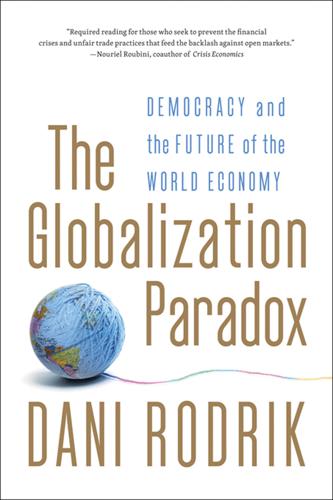
The Globalization Paradox: Democracy and the Future of the World Economy
by
Dani Rodrik
Published 23 Dec 2010
It wasn’t enough to slash import tariffs and eliminate barriers to trade; open trade policies had to be underpinned by extensive reforms in public administration, by labor market “flexibility,” and by international trade agreements. Macroeconomic stability had to be cemented by reforming fiscal institutions, giving central banks independence, and of course by better politics. Property rights required extensive reforms in governance and legal regimes. Free capital flows added their own long list of regulatory, supervisory, and macroeconomic prerequisites. Policy makers received a veritable laundry list of reforms, many of which required institutional changes that had taken developed countries decades, if not centuries, to accomplish.
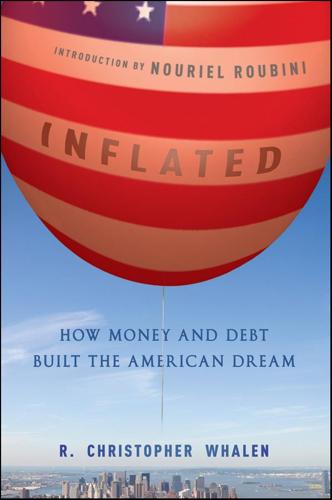
Inflated: How Money and Debt Built the American Dream
by
R. Christopher Whalen
Published 7 Dec 2010
While the 12 regional reserve banks had been chartered by the Congress in 1913, it was only with the creation of the Board of Governors of the Fed in 1927 that the central bank became a permanent fixture in Washington among the other agencies of the federal government. Once the Board was made part of the incestuous political community that is Washington, any notion that the central bank was independent of the Executive Branch of Government was quickly dispelled. And given the significant degree of political influence that the large New York banks have exercised over the political workings of Washington, the Fed Board quickly became entirely politicized. The significance of this development for the central bank and the independence of U.S. monetary policy will be discussed further in Chapter 6. A final point with respect to the Federal Reserve during this period has to do with the influence of the House of Morgan and its de facto agent Benjamin Strong, who served as the first governor of the Federal Reserve and chief executive of the Federal Reserve Bank of New York from 1914 until his death in 1928.
…
But Fed Chairman Thomas McCabe, who had replaced Marriner Eccles in 1948 when Truman declined to reappoint Eccles as Fed chairman, refused and thereby won back the independence of the central bank.9 The heroic faceoff between Eccles and McCabe against the populist political bullying from Treasury Secretary Snyder and Harry Truman was one of the great standup moments of the American central bank as an independent agency. Eccles in particular bore the full brunt of Truman’s populist anger, but refused to resign as a Fed governor. Though not reappointed as chairman, Eccles remained on the board and fought for the Fed’s independence during the remainder of his term as governor until he resigned in 1951.
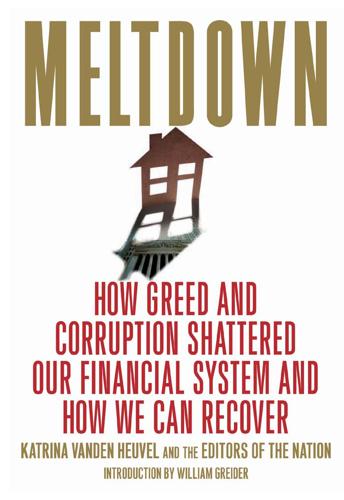
Meltdown: How Greed and Corruption Shattered Our Financial System and How We Can Recover
by
Katrina Vanden Heuvel
and
William Greider
Published 9 Jan 2009
Unlike Britain and the United States, which suffer from loosely regulated financial systems and a shoot-from-the-hip stock market mentality, Japan and Germany have rather tightly regulated systems in which stock markets play a relatively unimportant role in both investment finance and corporate governance. Compared with these broader financial structures, the central bank’s (in)dependence isn’t quite so important. Populist critiques of the Fed tend to concentrate excessively on its autonomous powers while overlooking the influence of the financial markets on the central bankers; the Fed follows interest rate trends as well as leading them. For example, creditors began selling their bonds, driving up long-term interest rates, several months before the Fed jacked up the short-term rates last February.
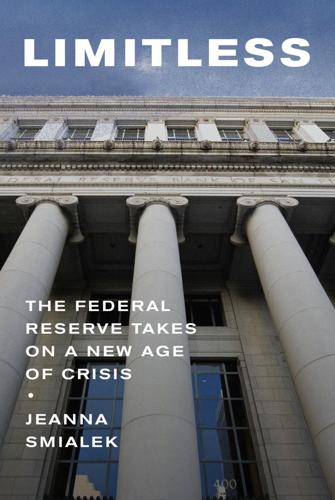
Limitless: The Federal Reserve Takes on a New Age of Crisis
by
Jeanna Smialek
Published 27 Feb 2023
The economy was chugging along at a respectable pace and Yellen’s track record was widely regarded as positive by late 2017, as the end of her first term approached. Despite that, Trump decided to replace her, bucking a long-standing practice in which willing Fed chairs were reappointed even by presidents of the opposite party in a show of respect for the central bank’s independence from partisan politics. When Trump had met Yellen for a job interview, a short woman with an elvish face and a white bob haircut sat across the desk from him. She did not, The Washington Post would later report, look the way the president thought a Fed chair should. Powell, a man with flawless gray suits and an extra eight or nine inches, evidently fit the mold better.
…
Carter Glass, by then an aging senator, maneuvered to reserve five voting seats for his beloved reserve banks, which would include a constant vote for New York, but the public appointees now held the majority.[91] America’s experiments in central banking had long been a balancing act between centralized control in the hands of the government and dispersed control in the hands of bankers, and the 1935 reform heavily tilted the scale toward the public. At the same time, the reform began to establish the central bank’s independence from more political bodies. Meetings were moved from the Treasury Department to a new building on Constitution Avenue in Washington, D.C., which runs parallel to the stretch of grass and monuments called the National Mall. The comptroller and Treasury secretary lost their seats at the Fed’s decision-making table.
…
People in power didn’t like the Fed, and at least some especially didn’t like Bernanke’s version of it. The idea that the Fed needed to be “audited” went from crackpot suggestion to rallying cry, with Representative Ron Paul and his son, Senator Rand Paul of Kentucky, repeatedly introducing bills that would review central bank monetary policy decisions. Bernie Sanders, the Vermont Independent, championed the movement on the political left. The Fed’s financial statements were already audited, but the movement to subject its monetary policy decisions and other internal deliberations to review captured the deep ill will. In a rare moment of bipartisan cooperation, one version of the bill passed the House in 2014 with votes from both parties—333 lawmakers voted for it, 106 of them Democrats.
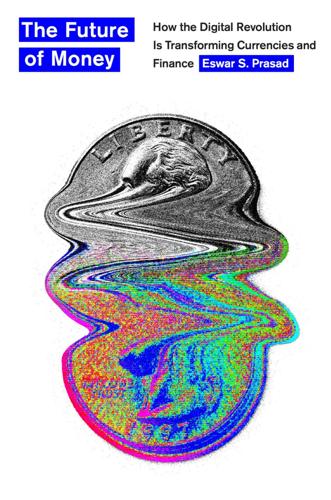
The Future of Money: How the Digital Revolution Is Transforming Currencies and Finance
by
Eswar S. Prasad
Published 27 Sep 2021
There are good reasons for fiscal and monetary policy to be pulling in the same direction, especially amid a deep recession or financial crisis. Nevertheless, the longer-term costs of becoming seen as an agent of government policies might undercut the very features that have made central banks effective—their independence, credibility, and willingness to take actions not swayed by shifting political winds. Other Advantages of a CBDC Beyond its monetary policy implications, a CBDC offers a variety of advantages relative to cash; some are common to both rich and poor economies, while others tend to be relevant to specific types of economies.
…
A central bank becoming directly involved in operations to counter corruption, money laundering, or terrorism financing that involves the usage of a CBDC would make it harder to maintain an arm’s-length relationship with the government. Moreover, an expanded monetary policy tool kit enabled by a CBDC might lead government officials to impose even greater burdens, in terms of both economic and social policies, on central banks. This would be corrosive to a central bank’s independence and effectiveness in discharging its core functions. In Chapter 7 I will review how central banks that are experimenting with CBDC are striving to mitigate these risks. Later in the book (Chapter 9), I will analyze some additional complications that CBDC, and new financial technologies more broadly, could introduce in the conduct of monetary policy and maintenance of financial stability.
…
Currencies that are dominant stores of value, such as the US dollar, will remain so because that dominance rests not just on the issuing country’s economic size and financial market depth but also on a strong institutional foundation that is essential for maintaining investors’ trust. For all its flaws, the US institutional framework—including a trusted and autonomous central bank, an independent judiciary that maintains the rule of law, and a system of checks and balances that restrains the unbridled power of any branch of government—has stood the test of time. While the dollar’s dominance as a payment currency might erode, it will remain the dominant global safe-haven currency for a long time to come.
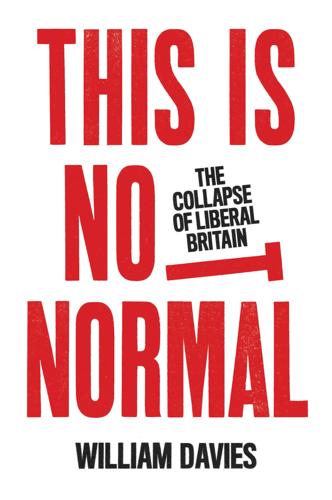
This Is Not Normal: The Collapse of Liberal Britain
by
William Davies
Published 28 Sep 2020
This problem has been especially acute in the era of neoliberal globalisation that emerged after the 1970s, as nation states have constantly sought to reassure international investors that they will stick to predictable regulatory, monetary and fiscal frameworks. Various instruments have been invented to achieve this, from central bank independence, which removes monetary policy from the domain of democratic politics, to the ‘stability and growth pact’ that has limited European Union member states’ fiscal freedoms since 1999, to Gordon Brown’s self-imposed ‘Golden Rule’, which stipulated public borrowing limits. Business investors can cope with various models of capitalism, involving a wide range of tax rates, corporate governance systems and regulatory frameworks.
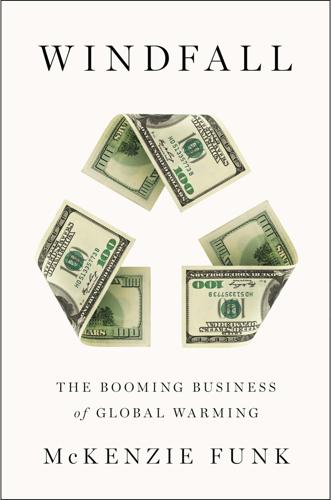
Windfall: The Booming Business of Global Warming
by
Mckenzie Funk
Published 22 Jan 2014
“If we’re in a Mad Max world, when things are increasingly dangerous and it’s survival of the fittest,” he said, “it’s not implausible to argue that our future is bound to the United States.” He was playing devil’s advocate. It worked. The class erupted. “Integration is a slippery slope,” said McKeown. A student on the far side of the room agreed. “We could lose our central-banking independence, our monetary independence, our social democratic Canadianism,” he said. “Our sovereignty is us, right? Without it we lose independent policy all over the board.” “Has anyone here been to Puerto Rico?” Byers asked. “Is it part of the United States?” The students answered that it was a commonwealth, a protectorate.

After Europe
by
Ivan Krastev
Published 7 May 2017
Despite the deep public mistrust of politicians, it is perplexing why people are nonetheless ready to elect parties eager to dismantle any constraints on government power. This is the conundrum that will help us unpack the Central European paradox. The decision of the populist governments in Hungary and Poland to take control over their respective constitutional courts, to curb the independence of central banks, and to declare war on independent media and civil society organizations should be alarming for those who are mistrustful of their politicians. But contrary to expectations, the vast majority of Hungarians and a sizable number of Poles were not concerned by their governments’ decisions to concentrate power in the hands of each country’s executive.
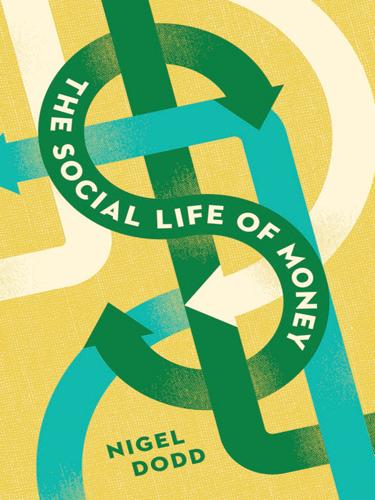
The Social Life of Money
by
Nigel Dodd
Published 14 May 2014
According to Goodhart, for example, the Eurozone project was shaped by assumptions about the nature of money that were consistent with (and arguably, derived from) Menger’s theory from the outset. By design, the euro entailed breaking up the relationship between money and political authority by assigning the task of monetary creation to a central bank that would be rigorously independent (Goodhart 1998: 425). This method is meant to treat money as if it were a commodity: a creature of the market, not of sovereignty, law, or society. According to Goodhart, the euro’s design was informed by the theory of “optimal currency areas,” in which it is assumed—consistent with Menger’s theory—that money’s spatial domain can evolve on the basis of the progressive minimization of transaction costs (Goodhart 1998: 419).
…
Writing in the wake of the Bretton Woods collapse, Aglietta suggested that gold—specifically—had been the monetary analogue to religion.42 In this sense, Nixon’s decision to decouple the dollar from gold could be seen as an act of desacralization. Without a religious analogue such as gold, the global monetary system could not operate well because it is built on sovereignty, and therefore the threat of violence. Once gold loses its key role and money is desacralized, the central bank’s independence is judged in terms of its distance from private interests (creditors and debtors). Stable money depends on the central bank, whose role is to conceal the arbitrary nature of the monetary sign (Grahl 2000). According to Carlo Tognato, money retained its quasisacred character even after the demise of gold.
…
Indeed, the ideal of stable money whose value is objective and above any such struggle is only ever a working fiction whose construction and maintenance is the outcome of a complex configuration of institutional and epistemological arrangements. Monetary policy and policy makers, central banks, and economists must appear to operate independently of political and class conflict. In other words, they must do everything in their power to obscure the social life of money: to wit, by acting as if the prevailing monetary standard were an objective thing. So who exactly are the creditors and debtors involved in this struggle?

Fully Automated Luxury Communism
by
Aaron Bastani
Published 10 Jun 2019
The primary site for this is central banks, however, whose decisions – despite claims to being impartially technocratic – are based on political priorities for inflation, employment and asset prices. Private banks perform something similar on a smaller scale, deciding what projects are to receive a share of society’s resources and enforce the ‘judgement of the market’ on those which lose money. The claim of central bank ‘independence’, a favoured policy at the apogee of capitalist realism during the 2000s, is as absurd a conjecture as the end of history itself. Here the pivotal actors within modern capitalist economies, who make specific choices that privilege certain groups at the cost of others, think of themselves as neutral with ‘common sense’ prevailing rather than ideology.
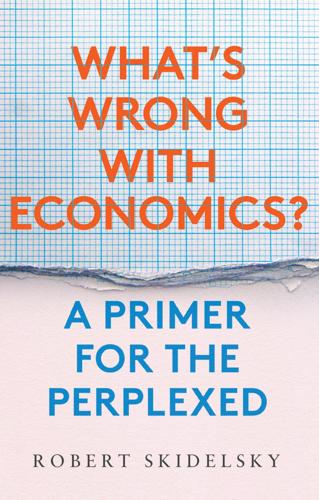
What's Wrong With Economics: A Primer for the Perplexed
by
Robert Skidelsky
Published 3 Mar 2020
Economics, say Marxists, serves the interests of the capitalist class by disguising the true nature of things by means of its scientific pretension. This causes people to think of it not as connected to ideology or politics but to something objective like physics or chemistry. It is surely no coincidence that the policy of central bank independence depends largely on the acceptance that economics is a science, and thus the decisions of a central bank are technical, rather than political, in nature. The idea of a technocratic ruling group, above ‘class’ and ruling in the interests of the whole society, is strongly challenged by those in the Marxist tradition.

An Extraordinary Time: The End of the Postwar Boom and the Return of the Ordinary Economy
by
Marc Levinson
Published 31 Jul 2016
The growing number of urban workers and factory owners had interests very different from those of the wheat growers and sugar barons who had traditionally dominated political life, and the conflict grew explosive. Seeing himself as an apolitical specialist in economic policy, Prebisch failed to understand that his diplomatic activities associated him with a government widely accused of electoral fraud and corruption. In 1943, following a coup d’état, the central bank’s independence from the government proved illusory. Prebisch, accused of being too close to the United States and too hostile to Germany, was driven from office.14 With no personal wealth and no income, the famed central banker was forced to sell his Packard, rent out his house, and move into a small cottage.
…
Quelling inflation, which was running at a 12 percent rate, previously experienced only when wartime price controls were removed, seemed likely to require much higher interest rates than the United States had ever known. If the Fed openly made interest rates the target of its policy, announcing that it was raising short-term rates to 15 or 20 percent, then auto dealers, construction workers, and corporate executives would cry foul and enraged members of Congress might strip the central bank of its independence. If, however, high interest rates were merely the byproduct of its much-praised shift to the monetary policy rules the monetarists were demanding, the Fed would have some protection from its critics. As Volcker put it to his colleagues at that Saturday meeting, “It’s an easier political sale.”3 “WHO’S PAUL VOLCKER?”
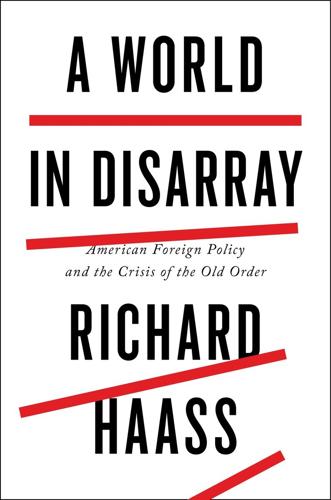
A World in Disarray: American Foreign Policy and the Crisis of the Old Order
by
Richard Haass
Published 10 Jan 2017
What also occurred was a falling off of domestic political support for trade pacts in the United States and many other countries, casting uncertainty over future efforts to promote a more open world trading system. There was arguably less formal governance but still significant coordination on the monetary side. The principal characteristics of the era were floating exchange rates, central bank independence, and dollar dominance. The IMF assessed (“surveilled”) economies and gave them public report cards but had no power to insist on reforms other than when it was involved in extending loans to governments in financial difficulty. In the banking arena, the so-called Basel Committee established standards (for example, for the amount of capital required to be kept on hand) that banks were encouraged to follow.
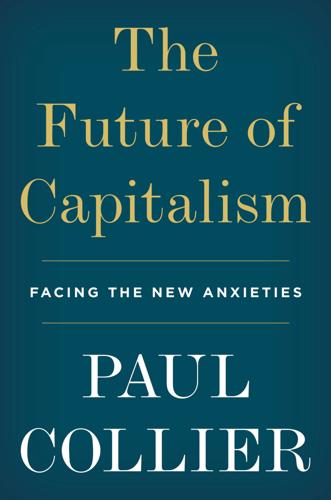
The Future of Capitalism: Facing the New Anxieties
by
Paul Collier
Published 4 Dec 2018
In order to benefit from making credible commitments, it may be necessary for a person to shed some power. Being able to make commitments was an instance of enlightened self-interest. Fancily expressed, a ‘commitment technology’ solved the ‘time-inconsistency problem’: the discoverers received the Nobel Prize. The commitment technology to solve inflation was to give central banks independence; that which solved child-rearing was marriage. Paradoxically, over the same period that Western societies were establishing the commitment technology that tamed inflation, they were systematically tearing up the commitment technology that had defended the right of children to be brought up by the people who conceived them.

Termites of the State: Why Complexity Leads to Inequality
by
Vito Tanzi
Published 28 Dec 2017
Import duties and import restrictions on goods, in general, were gradually reduced, in part due to trade agreements and the action of the World Trade Organization. Controls over financial market operations were reduced, and financial capital was allowed to move more freely, within and across countries, than in the past. Controls over the use of deposits by banks and other financial activities in general were also reduced. Central banks became more independent from direct political influences. Government controls over wages and over the prices of particular goods and services became rare, and rationing became a policy of the past, except in rare occasions. Especially in the 1990s, in spite of the high taxes and the new externalities-related regulations, faith in the market returned, and trust in its operations and acceptance of its outcomes reached high levels.
…
The answer was that in a centrally planned economy it would have required three workers: one to do the work, one to supervise the operation, and one to write a report on the operation. In a market economy nobody would be required, because the market would do it! Clearly the market was assumed to have magical power. Central banks became more politically independent than they had been, reducing the opportunities that governments had had in the past to allocate credit to preferred sectors; occasionally to resort to “inflationary finance” to finance their public spending; or to fix the rates of interest to favor particular sectors. However, central banks became more accommodating to the market with their monetary policies, believing in the rationality and the honesty of those who could get and use easy credit from the banks.
…
Also, the control of the growth of the money supply has come to be considered less meaningful in a world in which the meaning of “money” seems to have changed dramatically and the creation of virtual money (bitcoins) is frequently discussed. In the future monetary policy may become totally different than it is today. These changes are likely to have increased systemic risk. Termites in Stabilization Role 243 The campaign some decades ago to make central banks politically independent had been based on the belief that the goals of central banks were the aforementioned ones. In the 1990s and in the first few years of the new millennium some economists concluded that central banks had in fact become so efficient and wise, and monetary policy so powerful, that they had been responsible for the “great moderation,” a relatively long period of economic expansion without major fluctuations or inflation that had lasted until the middle of the first decade of the new century.
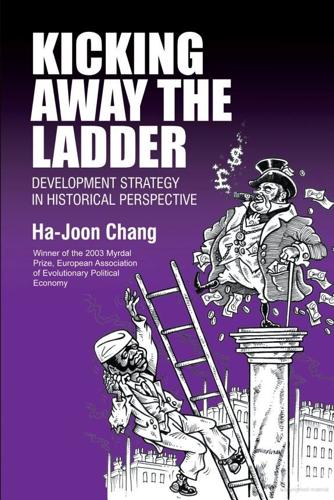
Kicking Awaythe Ladder
by
Ha-Joon Chang
Published 4 Sep 2000
Some of these institutions may even be beneficial for most, if not necessarily all, developing countries, although the exact forms that they should take is a matter of controversy. For example, central banking is necessary to manage systemic financial risk, but it is debatable whether the central bank should have near-absolute political independence and focus exclusively on inflation control, as the current orthodoxy has it. Indeed, given that many potentially beneficial institutions have only developed after painful economic lessons and political struggle, it would be foolish for developing countries to forego the advantages of being the latecomer which stem from the possibility of 'institutional catch-up'.
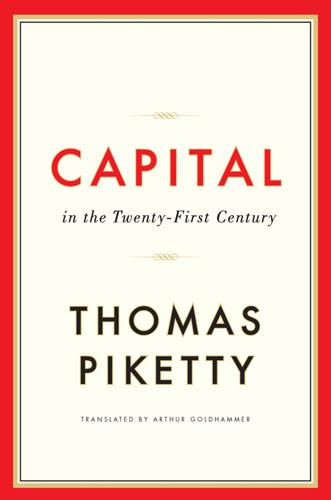
Capital in the Twenty-First Century
by
Thomas Piketty
Published 10 Mar 2014
In practice this was a source of considerable difficulty.17 If large deposits of gold or silver were suddenly discovered, as in Spanish America in the sixteenth and seventeenth centuries or California in the mid-nineteenth century, prices could skyrocket, which created other kinds of problems and brought undeserved windfalls to some.18 These drawbacks make it highly unlikely that the world will ever return to the gold standard. (Keynes referred to gold as a “barbarous relic.”) Once currency ceases to be convertible into precious metals, however, the power of central banks to create money is potentially unlimited and must therefore be strictly regulated. This is the crux of the debate about central bank independence as well as the source of numerous misunderstandings. Let me quickly retrace the stages of this debate. At the beginning of the Great Depression, the central banks of the industrialized countries adopted an extremely conservative policy: having only recently abandoned the gold standard, they refused to create the liquidity necessary to save troubled banks, which led to a wave of bankruptcies that seriously aggravated the crisis and pushed the world to the brink of the abyss.
…
If Europe created a stateless currency in 1992, it did so for reasons that were not simply pragmatic. It settled on this institutional arrangement in the late 1980s and early 1990s, at a time when many people believed that the only function of central banking was to control inflation. The “stagflation” of the 1970s had convinced governments and people that central banks ought to be independent of political control and target low inflation as their only objective. That is why Europe created a currency without a state and a central bank without a government. The crisis of 2008 shattered this static vision of central banking, as it became apparent that in a serious economic crisis central banks have a crucial role to play and that the existing European institutions were wholly unsuited to the task at hand.
…
No one wants to empower a head of state to replace university presidents and professors at will, much less to define the content of their teaching. By the same token, there is nothing shocking about imposing tight restrictions on the relations between governments and monetary authorities. But the limits of central bank independence should also be precise. In the current crisis, no one, to my knowledge, has proposed that central banks be returned to the private status they enjoyed in many countries prior to World War I (and in some places as recently as 1945).25 Concretely, the fact that central banks are public institutions means that their leaders are appointed by governments (and in some cases by parliaments).
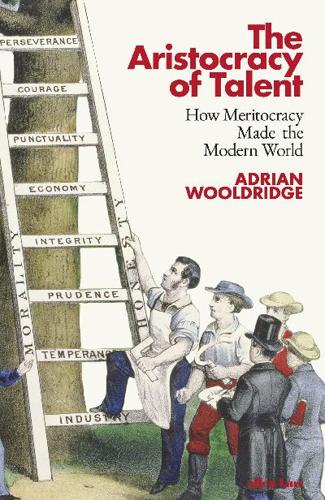
The Aristocracy of Talent: How Meritocracy Made the Modern World
by
Adrian Wooldridge
Published 2 Jun 2021
15 April 2020, https://medium.com/@jameskanagasooriam/a-brave-new-world-563c05e34f3d 2 Adrian Wooldridge, ‘Northern Lights: Special Report, The Nordic Countries’, Economist, 31 January 2013 3 OECD, ‘A Family Affair: Intergenerational Social Mobility across OECD Countries’, https://www.oecd.org/economy/public-finance/chapter%205%20gfg%202010.pdf 4 Nicholas Bloom and John Van Reenen, ‘Measuring and Explaining Management Practices across Firms and Countries’, Quarterly Journal of Economics 122 (4) (2007), pp. 1351–408; Nicholas Bloom, Raffaella Sadun and John Van Reneen, ‘The Organization of Firms across Countries’, Quarterly Journal of Economics 127 (4) (2012), pp. 1663–705; Schumpeter, ‘Measuring Management’, Economist, 18 January 2014 5 Chang-Tai Hsieh et al., ‘The Allocation of Talent and US Economic Growth’, Econometrica 87 (5) (September 2019), pp. 1439–474 6 Bruno Pellegrino and Luigi Zingales, ‘Diagnosing the Italian Disease’, https://faculty.chicagobooth.edu/-/media/faculty/luigi-zingales/research/pellegrinozingalesdiagnosingtheitaliandisease512019.pdf. I am most grateful to Professor Zingales for sending me this paper 7 Alberto Alesina and Lawrence H. Summers, ‘Central Bank Independence and Macroeconomic Performance: Some Comparative Evidence’, Journal of Money, Credit and Banking 25 (2) (1993), pp. 151–62 8 Garett Jones, 10% Less Democracy: Why You Should Trust Elites a Little More and the Masses a Little Less (Stanford, Stanford University Press, 2020), pp. 78–17 9 Randall Mock et al., ‘Management Ownership and Market Valuation: An Empirical Analysis’, Journal of Financial Economics 20, (January–March 1988), pp. 293–315; Nicholas Bloom, Raffaella Sadun and John van Reneen, ‘Family Firms Need Professional Management’, Harvard Business Review, 25 March 2011, https://hbr.org/2011/03/family-firms-need-professional 10 Edward B.
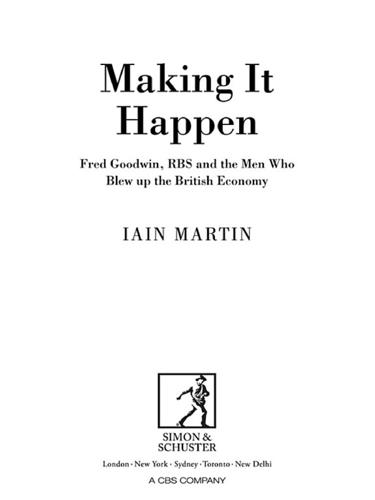
Making It Happen: Fred Goodwin, RBS and the Men Who Blew Up the British Economy
by
Iain Martin
Published 11 Sep 2013
Number 10 civil servants who offered to work up papers examining the potential consequences and implications were rebuffed. Blair simply asked Brown if it was the ‘right thing to do’. His Chancellor responded that it was. On Monday 5 May, Brown squared ‘Steady Eddie’, the Governor of the Bank of England, Eddie George.8 The Chancellor handed him two letters, the first dealing with central bank independence. The chain-smoking George, a Bank of England lifer who joined in the early 1960s, was delighted as it meant a strengthening of powers for the institution he loved. He paid less attention to the second letter. The other letter would eventually have grave consequences many years later, in the period running up to the financial crisis of 2008.
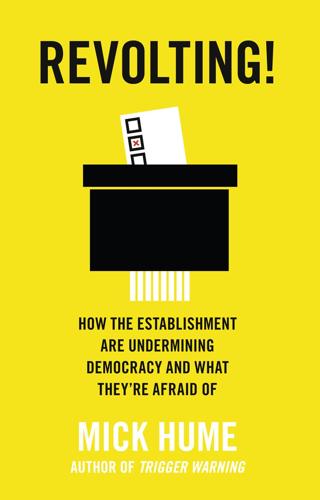
Revolting!: How the Establishment Are Undermining Democracy and What They're Afraid Of
by
Mick Hume
Published 23 Feb 2017
(This is, of course, the fault of those same elected politicians who have freely outsourced such authority to the central bankers in order to avoid being held accountable. A state of affairs that, in the UK, is due to the actions of the New Labour government, which gave the Bank these powers to set interest rates while floating above democratic politics.) When technocrats talk about ‘independent’ central banks, the key thing is that they should be independent of any democratic interference by the millions who pay the price for their policies. They seriously believe that they are the guv’nors of our economic lives. We can see the same cool disdain for popular democracy flourishing in the ‘Serious’ section of the bookshop, where a leading European academic’s latest work Against Elections is only trumped by an American professor’s even more starkly entitled tome, Against Democracy.16 Both do little more than rehash old prejudices.
…
Never mind that millions of people’s lives will be directly affected by whatever the bankers decide to do about interest rates. Democracy is all very well in its place, but its place is apparently not at the financial top table with the City money-men and Euro-bankers. The important thing about ‘independent’ central banks is that they are supposed to be independent of any political interference – otherwise known as democratic control. The central banks were handed these powers by politicians trying to offload democratic accountability for economic decisions. It is a sign of how the Left has submitted to this dogma that in the UK, the ability to take ‘independent’ decisions on setting interest rates was granted to the Bank of England as the first act of Gordon Brown, seen as a left-wing chancellor of the exchequer, after Labour won the 1997 general election.
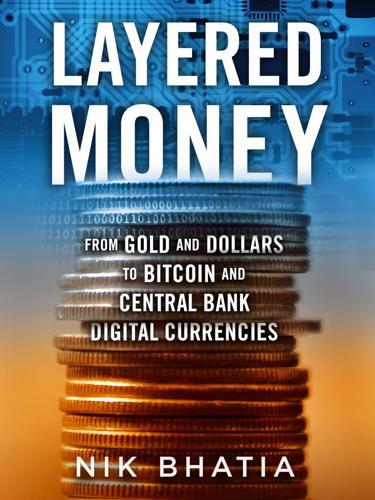
Layered Money: From Gold and Dollars to Bitcoin and Central Bank Digital Currencies
by
Nik Bhatia
Published 18 Jan 2021
With a CBDC, the Fed could issue second-layer money directly to people in the form of digital helicopter money; the phrase “helicopter money” comes from Milton Friedman, who in 1969 provided the imagery of dropping cash out of a helicopter in order to stimulate economic demand. The Fed wouldn’t necessarily be able to provide this type of economic stimulus without a larger political debate; a CBDC blurs the line between the central bank’s independent monetary policy and government-controlled fiscal policy. Helicopter money has been explored as a monetary policy tool for decades, and with the popularity of political ideas such as Universal Basic Income, CBDCs are the ideal vehicle to transmit direct payments to citizens in the future.
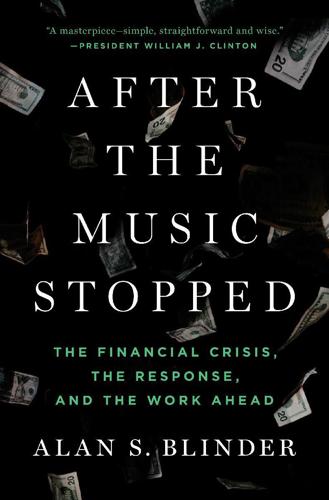
After the Music Stopped: The Financial Crisis, the Response, and the Work Ahead
by
Alan S. Blinder
Published 24 Jan 2013
Unlike a private bank, a central bank can even conduct its normal business with negative net worth. A few have actually done so. But a central bank with no capital cushion is potentially vulnerable if, in some year, it doesn’t earn enough revenue to pay its expenses. In such a case, the bank becomes beholden to its government for funds, and, if the government is hostile, central bank independence could be threatened. Needless to say, the Federal Reserve is unlikely to encounter such a problem for the foreseeable future. Its current net worth exceeds $55 billion, and its net profits (most of which it turns over to the Treasury) have lately been running around $75 billion to $80 billion per year.* That’s comparable to the combined profits of the entire oil and chemical industries.
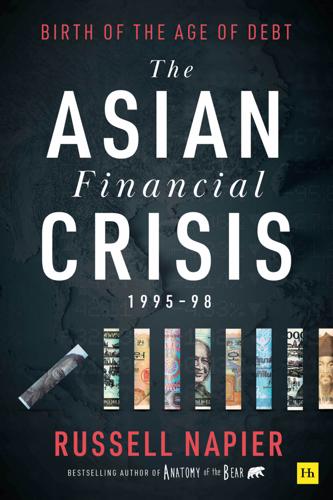
The Asian Financial Crisis 1995–98: Birth of the Age of Debt
by
Russell Napier
Published 19 Jul 2021
They did not take the opportunity to do so even though such a move would clearly have ended the economic and asset price boom and would have been a very bold step. The opportunity was there in 1995 to take the punchbowl away from this particular party, but no Asian policy maker took that audacious path. In choosing the exchange rate management target, central bank independence had been surrendered. The central banks were forced to adjust the size of their balance sheets according to the pressure on the exchange rate. To change the managed exchange rate policy was not within the remit of the central bank. The implications of such a move were so profound that they required the endorsement of the politicians.
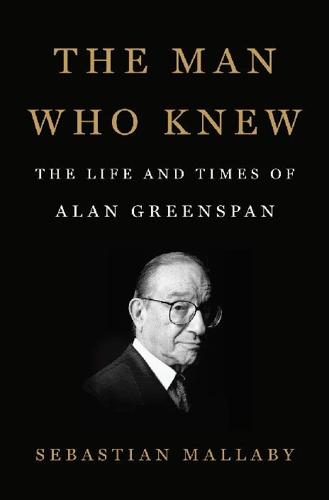
The Man Who Knew: The Life and Times of Alan Greenspan
by
Sebastian Mallaby
Published 10 Oct 2016
While the committee chairman was gone, a sympathetic senator hoped that Greenspan would “have the iron will to resist pressure from anybody in any form that you think is wrong.” With the exception of Senator Gramm, the politicians were urging Greenspan to stand up to the politicians. The case for central-bank independence, which came to be accepted internationally over the next decade, had clearly penetrated the Senate. The hearing wound on, and Greenspan gave a comprehensive tour of his views on credit and money. He believed that monetary growth would determine the inflation rate in the long term, but that it was no guide to price stability in the short term.
…
Now, if it was not returning to the earlier anchors, the Fed needed a new one. It should announce an explicit inflation target. Hoskins was airing an idea that would come to be embraced by central banks the world over. Only a few months later, at the end of 1989, New Zealand became the first convert, enshrining an inflation target in law and granting the central bank the independence from political interference that would make the target achievable.41 Given the pressure on the Fed from the Bush administration, the attractions of a New Zealand–style bargain were obvious: if the Fed formally committed to an inflation target, it would have a potent excuse to ignore White House demands for lower interest rates.
…
It would be a lot easier to go for deficit reduction if Greenspan offset the drag on the economy by lowering interest rates. “We need to set our economic priorities,” Clinton told Greenspan. “I’m interested in your outlook on the economy.”5 It was good that he was muddying his real question.6 He respected the central bank’s independence enough not to pitch for lower interest rates explicitly. Greenspan felt immediately comfortable. Presidents and presidential aspirants had been asking him about economic priorities for twenty-five years, since before Clinton had graduated from college. And with one slightly shaming exception—his time inside the Ford White House—Greenspan had argued consistently for budgetary restraint.7 The national debt had ballooned to the point where interest payments had become the third-largest federal expense after Social Security and defense, he now told Clinton.
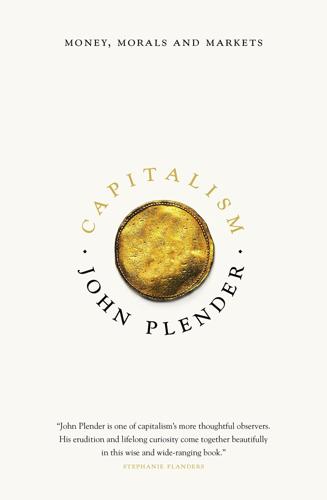
Capitalism: Money, Morals and Markets
by
John Plender
Published 27 Jul 2015
This is a salutary warning for central bankers in the aftermath of the crisis, since they are now committed to macro-prudential policymaking, which entails imposing counter-cyclical increases and decreases in banks’ capital buffers, as well as other forms of intervention such as quantitative controls on lending. The timing of such action is exceptionally difficult to judge. As for the regulators – whether sitting in central banks or existing independently outside them – they were struggling in the run-up to the crisis to understand huge changes in the structure of the financial system. Paid far less than the rocket scientists in the big banks who were devising new and complex financial instruments, they were, as always, one step behind and less well paid than the people they were trying to regulate.
…
The result was inflation without much addition to economic growth. While inflation helped reduce the debt, it caused widespread discontent – more shades of Faust, Part Two – not least because, as Milton Friedman remarked, inflation is taxation without legislation. So Keynesian policies became discredited and central banks, granted independence from the politicians, focused on low and stable inflation as their primary objective. Yet government deficit spending continued, thereby confirming the homespun wisdom of US President Calvin Coolidge, touched on in Chapter One, who warned: ‘Nothing is easier than spending the public money.

The Ascent of Money: A Financial History of the World
by
Niall Ferguson
Published 13 Nov 2007
Inflation has come down partly because many of the items we buy, from clothes to computers, have got cheaper as a result of technological innovation and the relocation of production to low-wage economies in Asia. It has also been reduced because of a worldwide transformation in monetary policy, which began with the monetarist-inspired increases in short-term rates implemented by the Bank of England and the Federal Reserve in the late 1970s and early 1980s, and continued with the spread of central bank independence and explicit targets in the 1990s. Just as importantly, as the Argentine case shows, some of the structural drivers of inflation have also weakened. Trade unions have become less powerful. Loss-making state industries have been privatized. But, perhaps most importantly of all, the social constituency with an interest in positive real returns on bonds has grown.
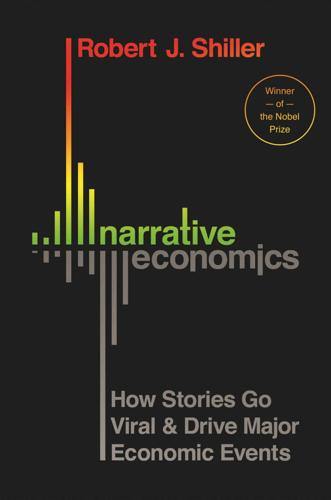
Narrative Economics: How Stories Go Viral and Drive Major Economic Events
by
Robert J. Shiller
Published 14 Oct 2019
The dynamics of this worldwide narrative epidemic likely provide the best explanation for these epochal changes in trend of the two major economic variables, inflation and interest rates. The end of the wage-price spiral narrative was marked by changes in monetary policy and the advent of newly popular ideas: the independent central bank5 and inflation targeting6 by central banks. The independent central bank was designed to be free from political pressures, which organized labor tries to exploit. Inflation targeting was designed to place controlling inflation on a higher moral ground than appeasing political forces. The moral imperative here was strong. On its face, the wage-price spiral may seem purely mechanical.
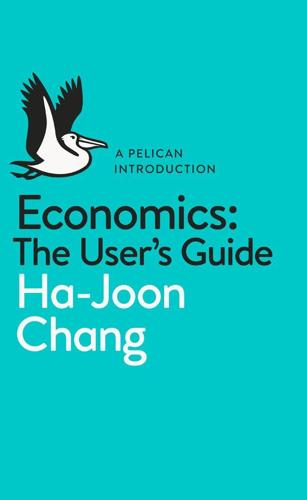
A Pelican Introduction Economics: A User's Guide
by
Ha-Joon Chang
Published 26 May 2014
In those few areas in which we still need the government, such as the provision of monetary stability or the regulation of natural monopolies, the policy process should be insulated from politics by granting political independence to the government agencies that actually do these things. An independent central bank and independent regulatory authorities of natural monopolies (e.g., gas, telecommunications) are the most frequently recommended examples. Market and Politics Government failures need to be taken seriously, but with a large pinch of salt Government failures are real and need to be taken seriously.
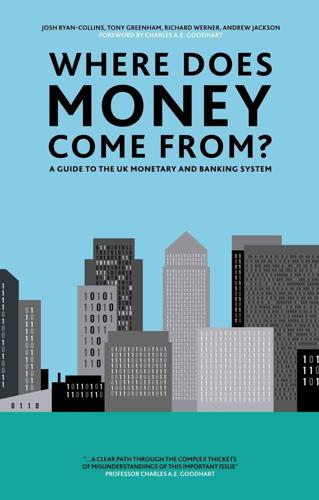
Where Does Money Come From?: A Guide to the UK Monetary & Banking System
by
Josh Ryan-Collins
,
Tony Greenham
,
Richard Werner
and
Andrew Jackson
Published 14 Apr 2012

People, Power, and Profits: Progressive Capitalism for an Age of Discontent
by
Joseph E. Stiglitz
Published 22 Apr 2019
Every schoolchild knows that one of the key criticisms of Andrew Jackson was his introduction of the “spoils system.” 15.It is worth noting that most conservatives support an independent monetary authority, worrying about the economic dangers of politicization of the determination of the money supply. For an excellent account of the principles and controversies surrounding central bank independence, see Paul Tucker, Unelected Power: The Quest for Legitimacy in Central Banking and the Regulatory State (Princeton: Princeton University Press, 2018). 16.Two tweets after the terrorist attacks in New York City reflect Trump’s low regard of the judiciary: “We need quick justice and we need strong justice—much quicker and much stronger than we have right now.
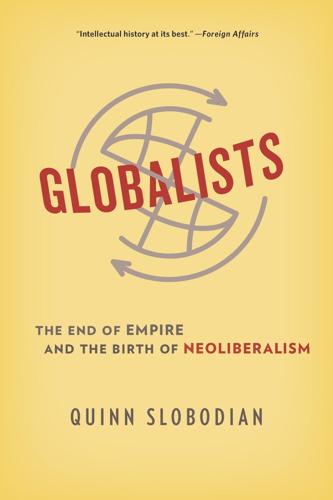
Globalists
by
Quinn Slobodian
Published 16 Mar 2018
One calls it the “constitutional protection of capitalism.”16 Another calls it the “Hayekian economic constitution” aimed at the “immunization of expanding capitalist markets against egalitarian-interventionist democratic politics.”17 In an influential coinage, Stephen Gill calls it the “New Constitutionalism” striving to “allow dominant economic forces to be increasingly insulated from democratic rule and popular accountability.”18 As summarized by scholars, this constitutionalization “establishes a worldwide institutional grid that offers transnational capital multiple exit options.”19 Others have written the history of the neoliberal fix in different ways. One scholar writes of the “nonmajoritarian” models of governance in port authorities and the idea of central bank independence.20 Still others have seen this strain in the European Central Bank and the governance structure of the European Union.21 Other scholars have described the creation of an “offshore world” of tax havens through which nations compete to offer the least possible corporate tax, the greatest possible secrecy, and the best incentives for individuals and corporations to flee the clutches of their own redistributive states.22 Discussions in the 1990s and beyond have been dominated by “locational competition” and the idea of “policy competition.”23 At the root of the neoliberal idea of international order is the notion of so-called competitive federalism, with the possibility of capital following opportunities across borders wherever they arise.
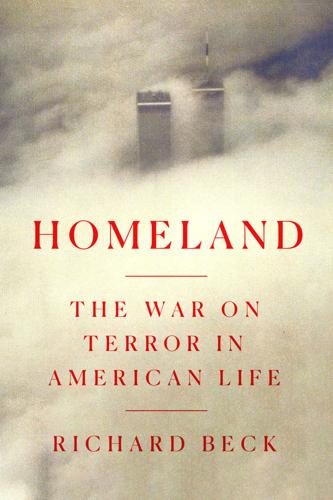
Homeland: The War on Terror in American Life
by
Richard Beck
Published 2 Sep 2024
These established ministries and departments in areas of government neglected by Saddam, and they also brought the shape of Iraq’s new government more in line with that of its American protector. Order 7, on the penal code, suspended capital punishment and prohibited torture, both hallmarks of Saddam’s grim rule. Order 18 remade the Iraqi central bank in the image of the Federal Reserve, allowing it to independently set interest rates and make other decisions on monetary policy without needing the approval of the country’s politically appointed finance minister.[49] Order 44 established the Ministry of Environment and provided it with a mandate to “address environmental concerns” in a number of areas.
…
The 100 Orders were not designed to turn Iraq into a source of profits for the United States; they were meant to turn Iraq into a source of profits for the whole developed world. By the twenty-first century, America’s national self-interest was much more internationalized than the blood-for-oil partisans understood. Individual Orders regarding seemingly mundane issues such as central bank independence, requirements that company board members act in the company’s best interest rather than their own, free repatriation of profits, the suspension of tariffs and duties on imports and exports, dispute resolution, and adjustments to copyright and trademark law take on a deeper resonance when considered alongside one another.
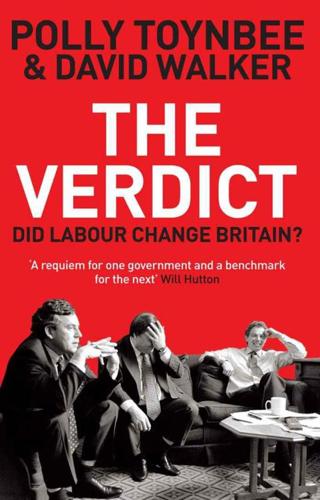
The Verdict: Did Labour Change Britain?
by
Polly Toynbee
and
David Walker
Published 6 Oct 2011
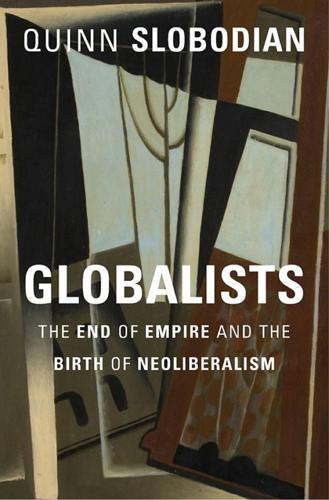
Globalists: The End of Empire and the Birth of Neoliberalism
by
Quinn Slobodian
Published 16 Mar 2018
One calls it the “constitutional protection of capitalism.”16 Another calls it the “Hayekian economic constitution” aimed at the “immunization of expanding capitalist markets against egalitarian-interventionist demo cratic politics.”17 In an influential coinage, Stephen Gill calls it the “New C o n cl u sio n 267 Constitutionalism” striving to “allow dominant economic forces to be increasingly insulated from democratic rule and popular accountability.”18 As summarized by scholars, this constitutionalization “establishes a worldwide institutional grid that offers transnational capital multiple exit options.”19 Others have written the history of the neoliberal fix in different ways. One scholar writes of the “nonmajoritarian” models of governance in port authorities and the idea of central bank independence.20 Still others have seen this strain in the European Central Bank and the governance structure of the European Union.21 Other scholars have described the creation of an “offshore world” of tax havens through which nations compete to offer the least possible corporate tax, the greatest possible secrecy, and the best incentives for individuals and corporations to flee the clutches of their own redistributive states.22 Discussions in the 1990s and beyond have been dominated by “locational competition” and the idea of “policy competition.”23 At the root of the neoliberal idea of international order is the notion of so-called competitive federalism, with the possibility of capital following opportunities across borders wherever they arise.

Radical Uncertainty: Decision-Making for an Unknowable Future
by
Mervyn King
and
John Kay
Published 5 Mar 2020
It will come as a surprise to many that the forecasting models used by most central banks had no ability to explain borrowing or lending as the models had no place for banks, ignored most financial assets, and assumed that all people were identical. In short, these models assumed an economy shorn of a financial system, and an economic crisis originating in the financial system was therefore impossible. Such a small-world model might generate insights into the role of central bank independence and inflation targets, but it could not sensibly answer the question ‘What is going on here?’ in the financial crisis. 23 The pretence that every important macroeconomic issue could be explained in terms of a single model was a major error. Radical uncertainty and non-stationarity go hand in hand.
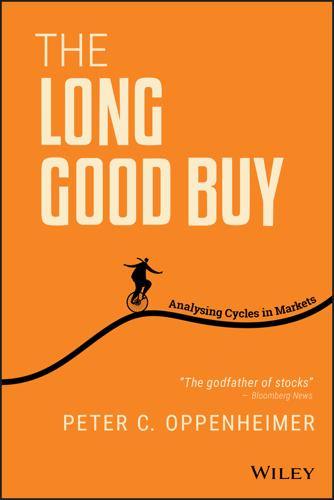
The Long Good Buy: Analysing Cycles in Markets
by
Peter Oppenheimer
Published 3 May 2020
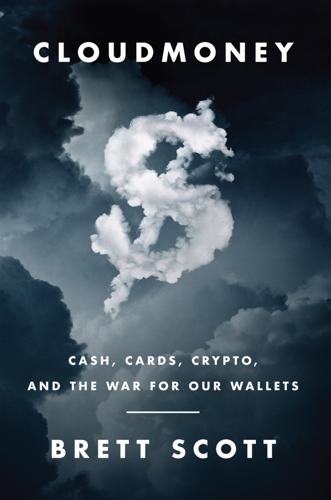
Cloudmoney: Cash, Cards, Crypto, and the War for Our Wallets
by
Brett Scott
Published 4 Jul 2022
One side is the money issuer, and the other is us – the money user. The primary money issuer in our society is the state, which issues money via the treasury and central bank (the main exception to this being the Eurozone, in which a ‘meta-state’ central bank issues money). Many central banks present themselves as being ‘independent’ of governments, and many countries do have laws that grant the central bank a degree of immunity to act as a quasi-autonomous institution. But in the final analysis a central bank is granted its power by governments and occupies a crucial position between the government and the banking sector: it is the ‘government’s bank’, but also the ‘bank for banks’ (where commercial banks gather), and therefore functions like a membership club, mediating between the state and the banking sector.
…
The Royal Mint’s presence at the Currency Conference was unusual, however, because the event is primarily intended to be a global forum at which banknote companies pitch their services to central bankers. In many countries, the central bank is the issuer of banknotes, while the treasury is the issuer of coins. There is an academic debate about whether that makes any difference – and big debates about the extent to which central banks are truly ‘independent’ of government treasuries – but when central bankers want notes manufactured, they call on banknote specialists (different companies are responsible for the paper, the security features, and the inks) while the treasury contracts a mint. Regardless of these behind-the-scenes nuances, we experience coins and notes as interchangeable state money, and both carry the same legal-tender status, being legally guaranteed to extinguish tax obligations and debts.
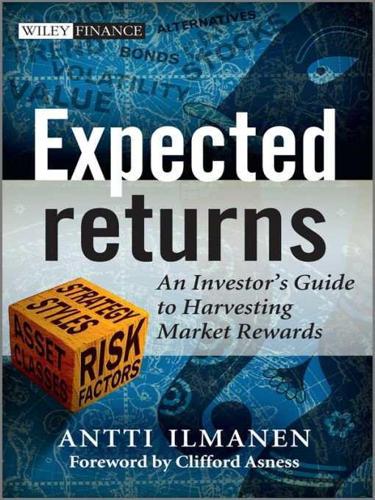
Expected Returns: An Investor's Guide to Harvesting Market Rewards
by
Antti Ilmanen
Published 4 Apr 2011
Thus, central bankers always worry about an unhinging of inflation expectations that could reverse virtuous developments in recent decades. Some of this concern is self-serving but justifiable. Well-anchored inflation expectations depend crucially on central bank actions and credibility. In the past two decades, a growing number of central banks have become independent and/or have begun to explicitly or implicitly target a particular inflation rate. Inflation management is not the only goal for central banks, however [3]. Evolving inflation process For our understanding of inflation expectations and the IRP in the past 50 years it is important to note that the mountain shape of inflation levels since the mid-20th century was matched by similar uptrends and downtrends in inflation uncertainty and inflation persistence.
…
As always, the bubble would have a rational precipitating factor, but investors should remember that the link between economic growth and equity market returns is quite tenuous (see Chapter 16). The Scylla and Charybdis of deflation and inflation The disinflationary tailwinds of recent decades—from improvements in central bank independence and credibility as well as from deregulation, globalization, and the massive entry of Chinese workers into the competitive global labor market—may weaken and even turn into headwinds. Moreover, the solutions to some of the major challenges of the 21st century—global warming and the aging population of many countries—are arguably inflationary.
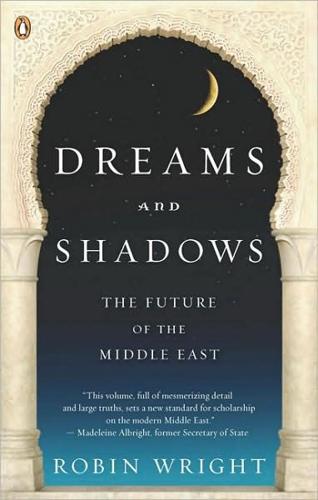
Dreams and Shadows: The Future of the Middle East
by
Robin Wright
Published 28 Feb 2008
The Kurds relied heavily on the United Nations, which under the sanctions arrangement channeled thirteen percent of Iraq’s oil revenues back into the north and provided a daily food ration for every Kurd (and every Iraqi). The income helped rebuild the villages that Saddam had destroyed. It paid for new schools, clinics, a justice ministry, and a Central Bank independent of Baghdad. It helped develop agriculture, pave roads, and plant three million trees. The Kurds, however, did figure a way to generate revenue by turning the tables on Saddam, who also relied on illicit trade to circumvent international sanctions. The Kurds taxed smugglers bringing sanctions-busting goods across from Turkey and Iran, through Kurdistan, into the rest of Iraq—to the tune of one million dollars a day.
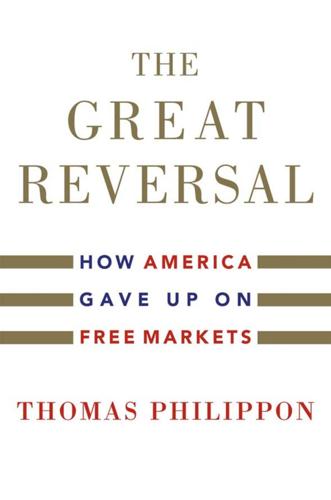
The Great Reversal: How America Gave Up on Free Markets
by
Thomas Philippon
Published 29 Oct 2019
This is true of the two leading supranational institutions: the European Central Bank is not subject to the same level of parliamentary oversight as the Federal Reserve Board, and DG Comp is more independent than the DoJ or the FTC. This is surprising because it appears to contradict the conventional wisdom about European and American preferences. Did Europeans make the European Central Bank fiercely independent because they studied Milton Friedman’s writings more than Americans? Did they make DG Comp more independent because they trusted in free markets? That does not seem plausible. Instead, we argue that bargaining among sovereign nations leads to supranational institutions that are more politically independent than what the average politician would choose.
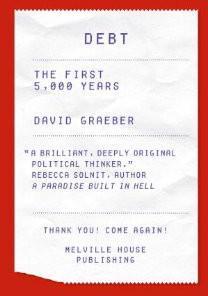
Debt: The First 5,000 Years
by
David Graeber
Published 1 Jan 2010
Compare this to the deficit/military chart above, on page 366—the curve is effectively identical. 18. See dailybail.com/home/china-warns-us-about-debt-monetization.html, accessed December 22, 2009. The story is based on a piece from the Wall Street Journal, “Don’t Monetize the Debt: The president of the Dallas Fed on inflation risk and central bank independence” (Mary Anastasia O’Grady, WSJ, May 23, 2009.) I should add that in popular usage nowadays, “to monetize the debt” is generally used as a synonym for “printing money” to pay debt. This usage has become almost universal, but it’s not the original sense of the term, which is to turn the debt itself into money.
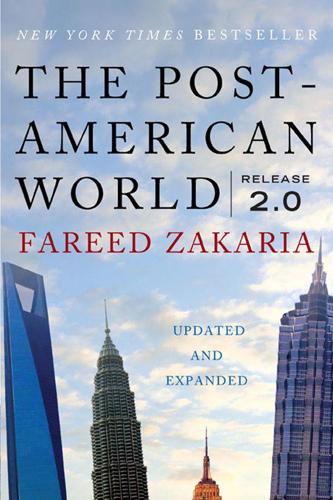
The Post-American World: Release 2.0
by
Fareed Zakaria
Published 1 Jan 2008
India has a remarkably modern administrative structure—in theory. It has courts, bureaucracies, and agencies with the right makeup, mandate, and independence—in theory. But whatever the abuses of power, this basic structure brings tremendous advantages. India has not had to invent an independent central bank; it already had one. It will not need to create independent courts; it can simply clean up the ones it has. And some of India’s agencies, like its national Election Commission, are already honest, efficient, and widely respected. If the Indian state has succeeded on some dimensions, however, it has failed on many others. In the 1950s and 1960s, India tried to modernize by creating a “mixed” economic model between capitalism and communism.
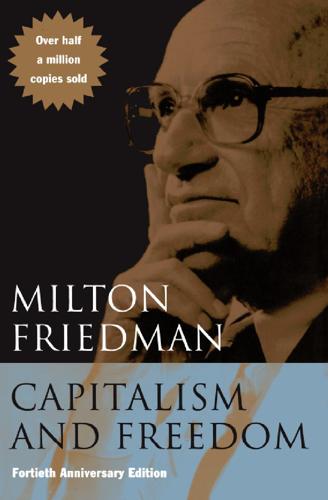
Capitalism and Freedom
by
Milton Friedman
Published 1 Jan 1962
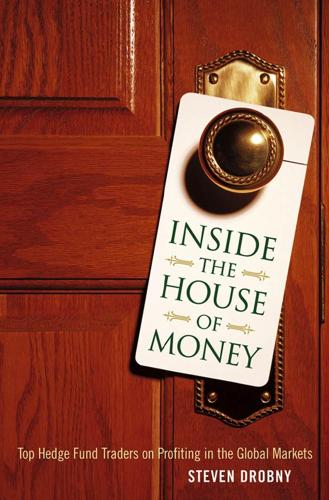
Inside the House of Money: Top Hedge Fund Traders on Profiting in a Global Market
by
Steven Drobny
Published 31 Mar 2006
Every once in a while something like the Indonesian recap market or DROBNY GLOBAL CONFERENCE, MARCH 2003 Jim Leitner’s Favorite Trade: Inflation Index–Linked Housing Bonds from Iceland Where can you get high real yields in an economy with a budget and trade surplus, an independent central bank, and with inflation and interest rates coming down? Leitner pointed to Iceland, which has been largely neglected by the financial community. After five years of strong growth, the Icelandic economy is cooling fast.The central bank, made independent in 2001, has started cutting rates. The krona, which depreciated sharply a few years ago, is still pretty competitive despite having recovered by some 15 percent from the lows, and a very high trade deficit of a few years ago has been transformed into a surplus. On top of all this is the “Alcoa Project,” where a good deal of capital investment and capital inflow is scheduled to begin in the next year or so.

Tower of Basel: The Shadowy History of the Secret Bank That Runs the World
by
Adam Lebor
Published 28 May 2013
Morgan, the First National Bank of New York, and the First National Bank of Chicago. The real purpose of the BIS was detailed in its statutes: to “promote the cooperation of central banks and to provide additional facilities for international financial operations.” It was the culmination of the central bankers’ decades-old dream, to have their own bank—powerful, independent, and free from interfering politicians and nosy reporters. Most felicitous of all, the BIS was self-financing and would be in perpetuity. Its clients were its own founders and shareholders—the central banks. During the 1930s, the BIS was the central meeting place for a cabal of central bankers, dominated by Norman and Schacht.
…
The BIS’s assets may remain untouchable, but as more activists understand the bank’s role in the global financial system, its secrecy and elitism, they will increasingly question its operations, role, and need to exist. Such a shift in global perception of the BIS, and the demands to make it more accountable, will bring pressure on politicians, which will then be passed on to the central bank governors, who are independent but still appointed by governments. The controversy over the Argentine reserves could, in turn, corrode the basis of the bank’s soft power: its regulation and supervisory frameworks. Commercial banks, might, for example, ask why they should adhere to the Basel Committee’s banking rules, when the host bank itself is arguably protecting a central bank against its creditors?
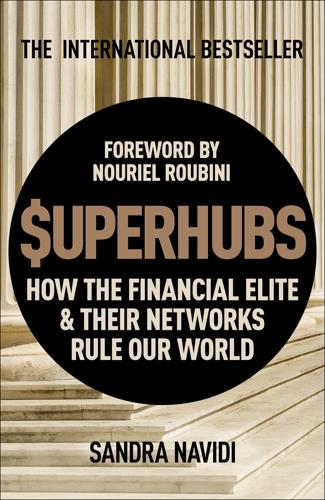
SUPERHUBS: How the Financial Elite and Their Networks Rule Our World
by
Sandra Navidi
Published 24 Jan 2017
The global financial system rests on several key pillars: central banks, “regular” banks, nonbank financial firms—the so-called “shadow banks”—and other financial institutions such as the Bank for International Settlements and the IMF. Many of these entities hold regular conferences where their executives maintain their ties. The Printing Presses: Central Banks Today almost all countries have central banks, which are independent government agencies, such as the Federal Reserve, the European Central Bank, or the Bank of England. Their mandate is to attain stable growth at low inflation and maintain the stability of the financial system. To achieve these goals, they use monetary policy: setting interest rates, regulating and supervising financial institutions, and providing liquidity in times of crises.
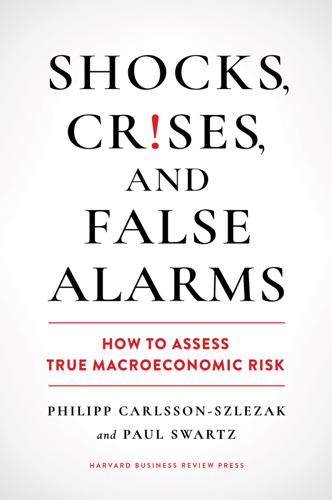
Shocks, Crises, and False Alarms: How to Assess True Macroeconomic Risk
by
Philipp Carlsson-Szlezak
and
Paul Swartz
Published 8 Jul 2024
In contrast, Europe’s lack of a significant unified government debt market has been a limiting factor in its ascent—once widely predicted—to being the primary reserve asset.4 Credible institutions: Related to the point above, the reserve currency must be backed by institutions with a history of stability and credibility. This includes both financial institutions, such as the central bank, and legal institutions, such as independent courts that fairly adjudicate disputes between creditors and debtors. These underpin faith in the rule of law and the belief that foreigners can sell their reserve assets without friction or doubt. The United States has built a reputation of legal security and essentially unfettered capital mobility.
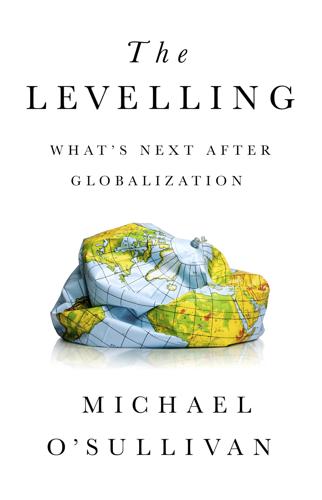
The Levelling: What’s Next After Globalization
by
Michael O’sullivan
Published 28 May 2019
Under this option there will be plenty of talk of “adding to the toolbox,” that is, inventing new measures to try to coax growth out of sluggish economies.21 The results may simply be more market distortion, a dwindling sense of urgency among politicians as to their task lists, and an undermining of the credibility of central banks as independent public institutions. If anything, recent pronouncements from central bankers suggest that, in the case of a recession, the consensus view among monetary economists supports more aggressive bouts of monetary stimulus rather than the disengagement of central banks in favor of fiscal-policy-led solutions to low growth.22 Public discussions by central bankers in the United States and Europe, for example, point toward a mind-set that is now set on zero and negative rates as the default policy stance of major central banks.
…
I have already argued (chapter 7) that central banks are too powerful and that far too much policy lifting has been left to them. Their overlordly roles in markets and economies should be pared back. Yet this is not a given, and in a multipolar world some players may have a different view. One dimension that may complicate the need for less central bank intervention and diminish their independence is the quest by the large poles for financial dominance over each other. Central banks could become a vital instrument in such pursuits. Echoing Carl von Clausewitz’s view that “war is the continuation of politics by other means,” in a multipolar world central banks could become the monetary battleships of the large regions, with currency wars shadowing trade wars.16 Indeed, the epidemic of countries sanctioning each other in 2018 (Saudi Arabia sanctioning Canada and the United States sanctioning Turkey, Russia, and China, for instance) suggests that finance is a key part of the geopolitical arsenal.
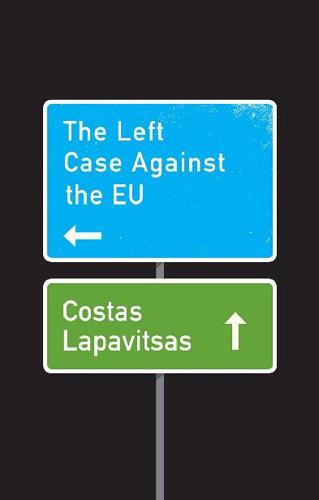
The Left Case Against the EU
by
Costas Lapavitsas
Published 17 Dec 2018
In some fairly obvious ways the ‘architecture’ of the euro has been deficient from the start.27 Mainstream economists have long been aware that the Eurozone has lacked important institutional mechanisms: for instance, a unified mechanism of fiscal transfers among states and a banking union.28 Others have pointed to the lack of ‘mutualization’ of public debt – that is, allowing the debt of one member state to be considered as an obligation of another – and proposed to correct it through the issuing of Eurobonds.29 The fundamental institution of the EMU is the ECB, the capital for which has been contributed proportionately by all EMU member states. The ECB is part of the Eurosystem, a complex structure comprising the National Central Banks of the member countries, which have ceased to act independently with regard to designing and delivering monetary policy.30 Nonetheless, the National Central Banks retain formal and legal responsibility over their assets and liabilities. The ECB is the pivot of the Eurosystem and is obliged by its statutes to keep inflation below 2%.
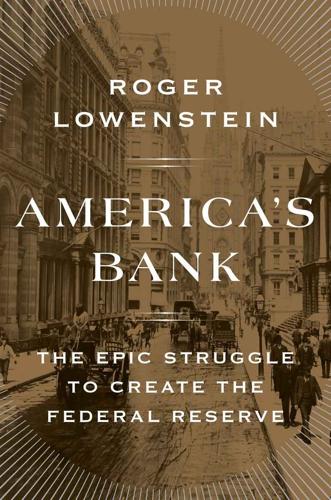
America's Bank: The Epic Struggle to Create the Federal Reserve
by
Roger Lowenstein
Published 19 Oct 2015
To a people for whom local autonomy was sacrosanct, the notion of a powerful bank, joined to the even more powerful federal government, was deeply unnerving. Opposition to central authority had animated the minutemen at Lexington and Concord, and the battle to establish the Fed resembled a second American revolution—a financial revolution. America had, of course, experimented with central banking early in its history. After the War of Independence, a military success but a financial disaster, the government was saddled with debt. When in due course the Constitution was ratified, providing a greater degree of political unity, Alexander Hamilton proposed a financial equivalent, a Bank of the United States, modeled after the Bank of England.
…
Currency questions had always stirred the imagination of cranks, but a genuine intellectual ferment swirled around the topic of a central bank. The most interesting proposal was that of Victor Morawetz, a railroad lawyer, who argued that the United States was too big and diverse a territory for a single central bank. Instead, Morawetz proposed a system of independent regional banks. President Taft did not get more than superficially involved in the issue, though his occasional comments were supportive. In the fall of 1909, he spent some of his dwindling political capital on Aldrich, expressing his full confidence that whatever remedy the Monetary Commission proposed would be free of “Wall Street influences.”
…
Each set up a system of bank examinations and check clearing. Willis even mimicked the Aldrich bill’s phraseology. Of course, the plans also differed in important respects. The biggest was that Aldrich and Warburg had conceived of “branches” around the country subservient to a central organ. Glass was proposing regional “banks” with greater local independence—although arguably, this was a matter of degree. Another distinction was that Glass-Willis compelled the banks to shift their reserves to the new Reserve Banks, ending the perilous “pyramiding” of reserves from the farm to the city to New York. Aldrich, not wanting to offend his banker colleagues, had been mum on this important point.
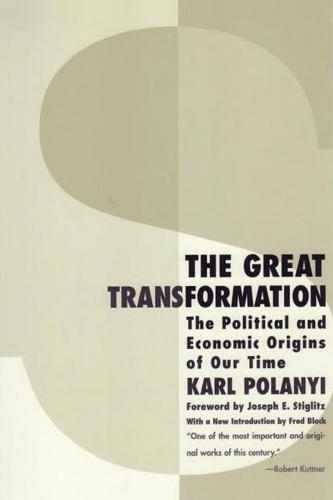
The Great Transformation: The Political and Economic Origins of Our Time
by
Karl Polanyi
Published 27 Mar 2001
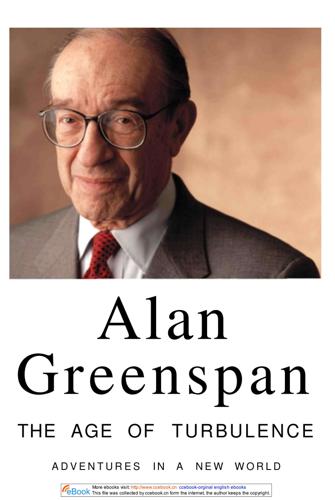
The Age of Turbulence: Adventures in a New World (Hardback) - Common
by
Alan Greenspan
Published 14 Jun 2007
Finally I studied my calendar and suggested adding a honeymoon to the tail end of an international monetary conference meeting in Interlaken, Switzerland, in June, two months after our wedding. At the monetary conference, German chancellor Helmut Kohl gave a predictably dry luncheon speech. Central-bank independence and the revaluation of Germany's gold reserves were the topics. Afterward Andrea and I avoided flocks of reporters who wanted comments about the U.S. economic outlook and the prospects for the continuation of the Internet boom on the stock market. Even though they knew it was my policy not to give interviews, some asked Andrea to serve as a go-between, figuring that as a fellow journalist she might be willing to help.
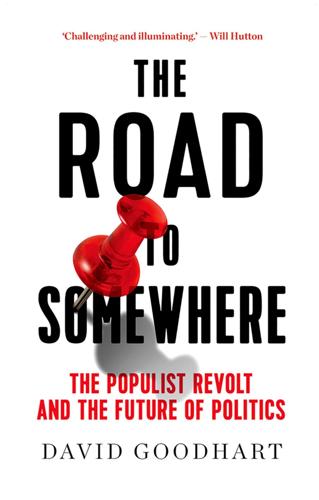
The Road to Somewhere: The Populist Revolt and the Future of Politics
by
David Goodhart
Published 7 Jan 2017
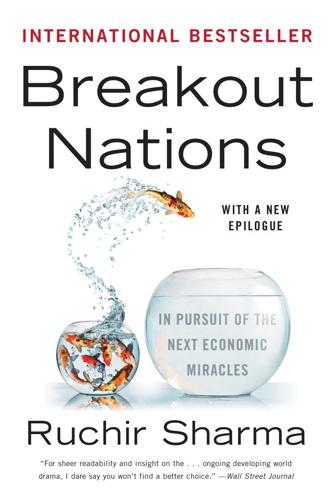
Breakout Nations: In Pursuit of the Next Economic Miracles
by
Ruchir Sharma
Published 8 Apr 2012
In recent years it has developed a strong education system that produces a talented workforce; a growing cadre of small to medium-sized companies that are competitive across Europe; well-run banks far stronger than those of its old nemesis, Russia; and good-quality consumer companies. The central bank is genuinely independent of political interference. In many ways these rising stars in the East look more solid than their Western models. With a population of thirty-eight million, Poland is the only nation in Eastern Europe with a domestic market large enough to generate economic growth, regardless of troubles in the rest of the world.
…
Erdogan is clearly ambitious to complete his basic project—freeing moderate Islam to be itself in Turkey—and he understands that strong economic growth has provided him the political power to promote that goal. The risk is that to achieve his grand aim he may now be pushing too hard to grow too fast, by continuing to invest public funds heavily and to keep interest rates low during a new boom. (Though the central bank is supposed to have independent control of interest rates, in countries like Turkey, signals from the top political leader are tough for the bankers to ignore.) The growth targets that made sense in 2002, when Erdogan took power, no longer make sense now that Turkey’s per capita income is over $10,000. Today confidence in Istanbul is sky high because of the economy’s admirable performance after the Great Recession of 2008.

The Blockchain Alternative: Rethinking Macroeconomic Policy and Economic Theory
by
Kariappa Bheemaiah
Published 26 Feb 2017
Fractional reserve banking and debt-based money To understand the concept of fractional banking it is important to first acknowledge that although central banks and governments belong to the same ilk and work in unison with respect to the issuance of sovereign coin, it is the central bank that actually influences how much money to create based on the inflation targets and the interest rate. The reason for highlighting this distinction is because the central banks of most countries are independent enterprises and their monetary policy decisions do not have to be approved by a president or anyone else in the executive or legislative branches of government6 . The working model, which is identical for more advanced countries, is based on the model of the Bank of England, which was established in 1694 as a joint stock company to purchase government debt.7 Under this model, when a government needs money for carrying out its functions, they exchange bonds with the central bank.
…
Such a monetary model would destroy the private banks’ debt-based deposit-funded model and change their function in society. They would still function as direct intermediaries between lenders and borrowers and offer investment products to households and corporations, but the broad money supply would now be more directly controlled by the central bank, making it independent of private lending decisions. The greater the quantity of broad money supply, in the form of sovereign digital cash or fiat money on a Blockchain, the greater the ease with which a central bank can use tools such as negative interest rates or helicopter drops (discussed in detail in the section on Universal Basic Income).

23 Things They Don't Tell You About Capitalism
by
Ha-Joon Chang
Published 1 Jan 2010
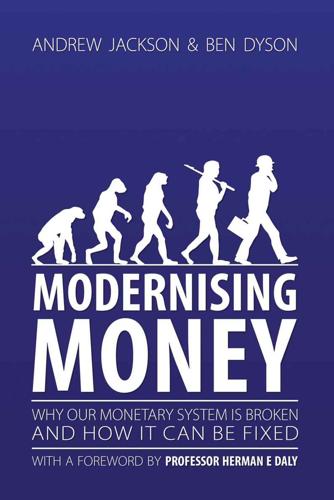
Modernising Money: Why Our Monetary System Is Broken and How It Can Be Fixed
by
Andrew Jackson (economist)
and
Ben Dyson (economist)
Published 15 Nov 2012
I.1 - One hundred trillion Zimbawean dollar note So, while the hyperinflation was made possible by the printing of money, it is not the case that money printing always leads to high or hyper-inflations. Rather, it was the printing of money to finance expenditure, with no regard for the inflationary consequences, and following a collapse in the productive capacity of the economy, which pushed Zimbabwe into hyperinflation. Had Zimbabwe’s central bank been independent of politicians, and focused on price stability rather than facilitating government spending (with more careful control over the money supply), the hyperinflation would have been impossible. Two conclusions can be drawn from the Zimbabwe experience: There is a danger when those with the power to create money can also benefit from its creation.
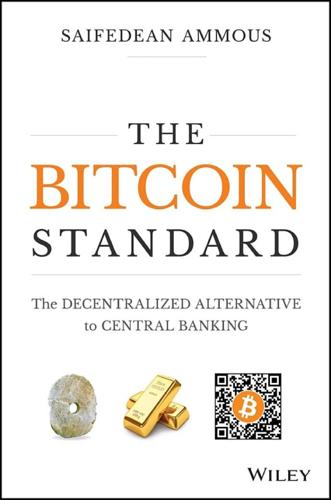
The Bitcoin Standard: The Decentralized Alternative to Central Banking
by
Saifedean Ammous
Published 23 Mar 2018
—Satoshi Nakamoto, 6/17/2010 Bitcoin's resilience has so far not been restricted to successfully repelling attacks; it has also ably resisted any attempt at changing it or altering its characteristics. The true depth of this statement and its implications has not yet been fully realized by most skeptics. If Bitcoin's currency were to be compared to a central bank, it would be the world's most independent central bank. If it were to be compared to a nation‐state, it would be the most sovereign nation‐state in the world. The sovereignty of Bitcoin is derived from the fact that, as far as anyone can tell, the way its consensus rules operate makes it very resistant to alteration by individuals.
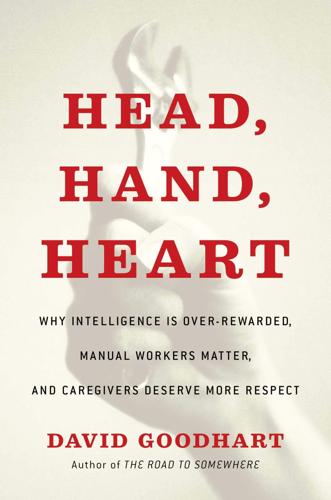
Head, Hand, Heart: Why Intelligence Is Over-Rewarded, Manual Workers Matter, and Caregivers Deserve More Respect
by
David Goodhart
Published 7 Sep 2020
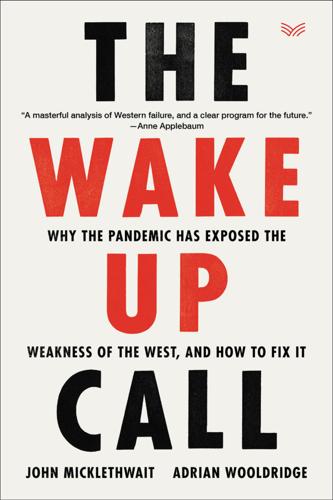
The Wake-Up Call: Why the Pandemic Has Exposed the Weakness of the West, and How to Fix It
by
John Micklethwait
and
Adrian Wooldridge
Published 1 Sep 2020

In FED We Trust: Ben Bernanke's War on the Great Panic
by
David Wessel
Published 3 Aug 2009
All Fed officials speak English as a first language; the ECB does business in English, which is a second language for most of its leadership, and then has to translate its decisions into twenty-one other languages. The ECB has the advantage of clarity of mission: its legal mandate is to resist inflation and ensure stable prices. Period. The Fed’s legal mandate is broader and during a crisis more flexible: maximum employment and price stability. Both central banks are designed to be independent. The ECB’s independence is enshrined in a treaty, but it gets frequent, often hostile, public advice from European heads of state and finance ministers about what it should be doing with interest rates and whether it should be trying to talk the euro down to help European exports.
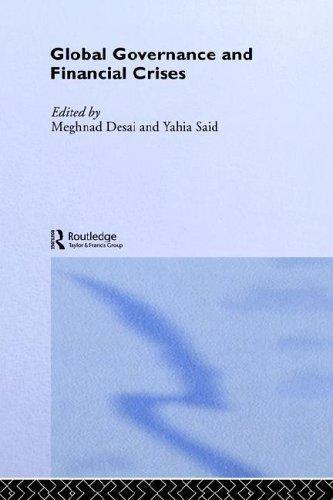
Global Governance and Financial Crises
by
Meghnad Desai
and
Yahia Said
Published 12 Nov 2003
In an international context with separate national regulatory and supervisory bodies, the micro–macro potentially disruptive interactions raise problems which point to an institutional cooperation between the IMF and several committees, forums and task forces working under the auspices of the Committee of the Governors of central banks in Basle. Cooperation is needed because one cannot get altogether independent national prudential policies, minimum cost of capital and volatility of financial variables no higher than the volatility of fundamentals in international competitive markets. There exists an unescapable tradeoff between national prudential independence, global financial safety and market efficiency in allocating savings.
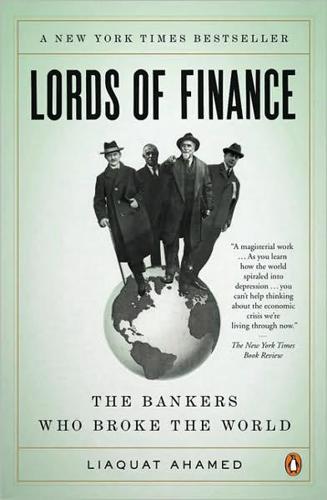
Lords of Finance: The Bankers Who Broke the World
by
Liaquat Ahamed
Published 22 Jan 2009
In the summer of 1927, still weak from his recent illness, Strong decided that rather than go to Europe as he usually did, he would invite Norman, Schacht, and Moreau to the United States.39 Before the war, when the gold standard had worked automatically, the system had simply required all central banks, operating independently, to follow the rules of the game. Collaboration had not needed to go beyond occasionally lending one another gold. Ever since the war, as the gold standard had been rebuilt and evolved into a sort of dollar standard with the Federal Reserve acting as the central bank of the industrial world, Strong had found it useful to consult frequently with his colleagues—he generally used his summers in Europe as an occasion to meet all of his European counterparts.
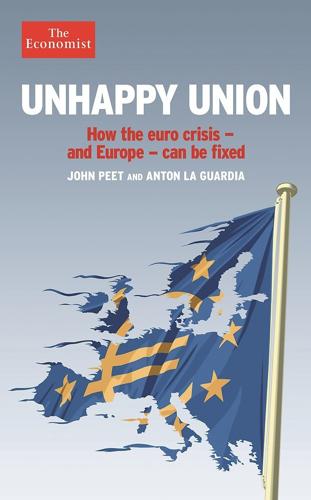
Unhappy Union: How the Euro Crisis - and Europe - Can Be Fixed
by
John Peet
,
Anton La Guardia
and
The Economist
Published 15 Feb 2014
Viktor Orban’s centre-right Fidesz party won a smashing electoral victory in 2010 after the outgoing Socialist government became discredited. But Orban proceeded to rewrite the constitution in ways that cemented Fidesz’s dominance over Hungary’s institutions and its intimidating control of the country’s media. Although the EU has managed to get the government to rewrite provisions impinging on central-bank and judicial independence, it has found its leverage over the government worryingly limited. As was discovered as long ago as 2000, when the EU tried to freeze relations with an Austrian government that included the far-right Jörg Haider as a coalition partner, a country that is a full member is much less susceptible to outside pressure than an applicant.

Jared Bibler
by
Iceland's Secret The Untold Story of the World's Biggest Con-Harriman House (2021)
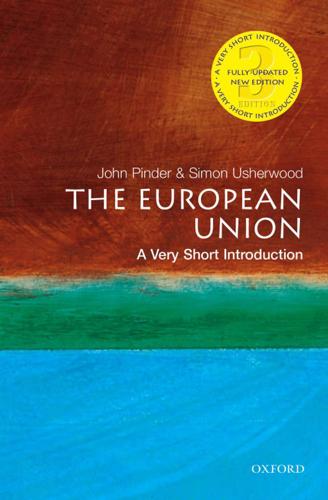
The European Union
by
John Pinder
and
Simon Usherwood
Published 1 Jan 2001
However, the possibility of building a similar system across the Union was clearly an important motivating factor for an export-driven economy such as Germany’s; if other states would accept the logic of macroeconomic coordination alongside the currency itself, then this would ultimately serve Germany’s interests. The aim of economic and monetary union The Maastricht Treaty, in providing for economic and monetary union (Emu), established the European Central Bank (ECB) to be, like the Bundesbank, completely independent. The ECB and the central banks of the member states are together called the European System of Central Banks (ESCB). The six members of the ECB’s Executive Board, together with the governors of the other central banks, comprise the Governing Council of the ECB; and none of these banks, nor any member of their decision-making organs, is to take instructions from any other body.

Losing Control: The Emerging Threats to Western Prosperity
by
Stephen D. King
Published 14 Jun 2010
Nevertheless, policymakers were keen to stick to simple macroeconomic rules in the pursuit of underlying economic stability. Monetary targets were replaced by other targets, the most enduring of which have proved to be inflation targets (in the developed world) and exchange-rate targets (in the emerging world). Meanwhile, to rid policymakers of undue political influence, many central banks were granted independence, to a greater or lesser degree, from their ultimate political masters. Central bankers have become the high priests of price stability and pursue their beliefs with a theocratic orthodoxy. They believe not only that price stability is good but that its achievement is the single best ‘top-down’ way of delivering overall economic well-being.
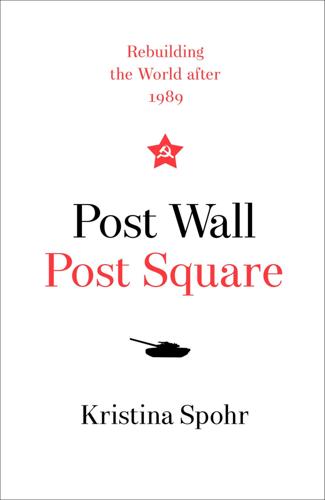
Post Wall: Rebuilding the World After 1989
by
Kristina Spohr
Published 23 Sep 2019
France had extracted reassurance on Bonn’s commitment to Europe and the single currency. Kohl had been given the green light to press on with German unification, which would give him new leverage over Mitterrand. And now that he had fully embraced the principle of monetary union, he intended to make Mitterrand pay a price in return: acceptance of European central-bank independence (on the Bundesbank model) and of political union with strong federalist characteristics. For Kohl, his actions at Strasbourg had been governed by politics. Explaining his reasoning to Secretary of State James Baker, he said he was ‘happy to grant France the glory of Strasbourg’, but without him, he added wrily, ‘the thing would not have happened’.
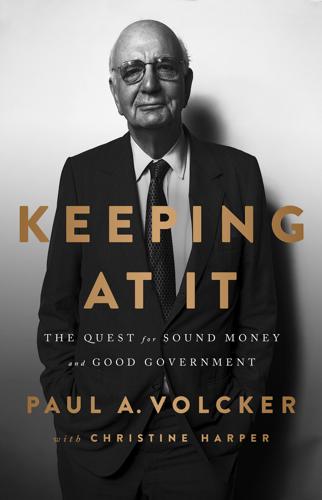
Keeping at It: The Quest for Sound Money and Good Government
by
Paul Volcker
and
Christine Harper
Published 30 Oct 2018
So much seems familiar: then, as now, central banks too often hesitated to deal with inflation pressures at early stages. As I write this, the Fed is presented with that recurrent question. In my Princeton ivory tower I was unsympathetic to those concerns. The thesis ended with a strong plea to recognize price stability as the central bank’s core objective and to make it independent of partisan politics. Subconsciously, my career path was set. Harvard My first priority after Princeton was to get a job. I had eight or nine months before graduate school, so some kind of internship seemed useful. Naïvely, I took a train down to Washington and spent a day or two knocking on the doors of federal agencies that might conceivably be interested in a brand new potential economist.
…
Several members of the commission staff, especially Eli Shapiro of MIT and Larry Ritter of New York University’s Stern School of Business, became close friends. The comprehensive commission report has been lost in the mists of time. It did, however, help bolster the case for Federal Reserve independence, which had come into question in parts of the Congress. (At the time, after the turmoil of World War II, a number of leading central banks had lost their independence.) Within Chase, I was also given the responsibility (and privilege) of preparing a summary of the weekly briefing of the twenty or so most senior Chase officers. While my formal status wasn’t high, I became known by top management, even John J. McCloy, the esteemed former public servant and US high commissioner for Germany who was then serving as Chase chairman.
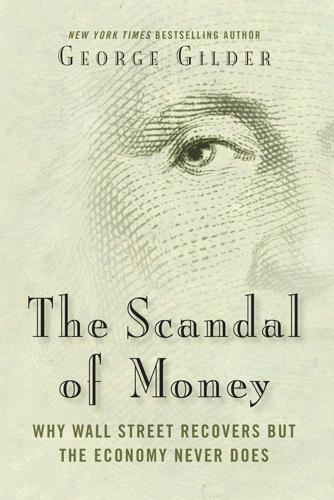
The Scandal of Money
by
George Gilder
Published 23 Feb 2016
The government sold off its airlines, railways, airports, seaports, bus lines, banks, hotels, insurance firms, maritime insurance companies, radio spectrum, printing facilities, forests, and irrigation schemes and an array of other holdings. It abolished farm programs that in 1985 were supplying 45 percent of all agricultural income. The central bank was privatized, made independent of the government, and restricted to a role of containing inflation. Maurice McTigue, a former minister of transportation, sums up the results: “A decade later, New Zealand had one of the most competitive economies in the developed world. The government share of GDP had fallen to 27 percent, unemployment was a healthy 3 percent, and the top tax rate was 30 percent.”4 Eliminated were taxes on capital gains, inheritances, and luxuries, and excise duties were removed.
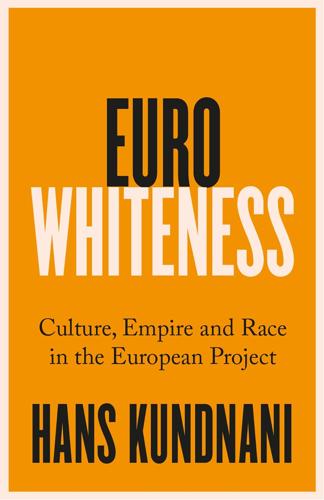
Eurowhiteness: Culture, Empire and Race in the European Project
by
Hans Kundnani
Published 16 Aug 2023
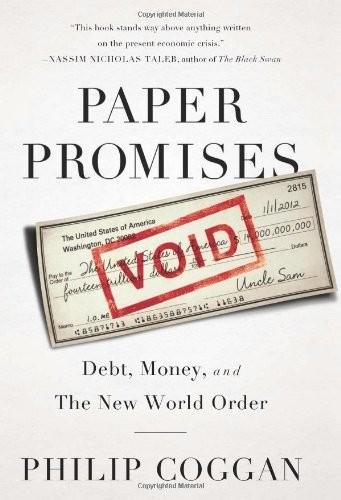
Paper Promises
by
Philip Coggan
Published 1 Dec 2011

The Quiet Coup: Neoliberalism and the Looting of America
by
Mehrsa Baradaran
Published 7 May 2024
Clarifying, in case it was not obvious, that this would include “non-democratic” ones, he suggested a “possible route” of restricting the “franchise to property owners, educated classes, employed persons, or some such group.” Buchanan tested some of these possibilities in Chile in the 1970s and 1980s. Alongside Friedman and the so-called Chicago Boys, he helped Augusto Pinochet create a new constitution that would lock in his own dictatorial power, limit majority rule, give the central bank absolute independence, and overrepresent the right-wing minority. The law also punished anyone advocating “class conflict,” “Marxism,” or anything “anti-family” with exile (or worse) without due process.11 Chileans were given only a yes or no vote in an emergency election to ratify their new constitution, which was written so as to be practically unchangeable.
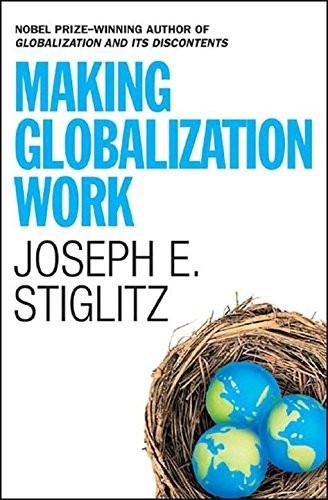
Making Globalization Work
by
Joseph E. Stiglitz
Published 16 Sep 2006
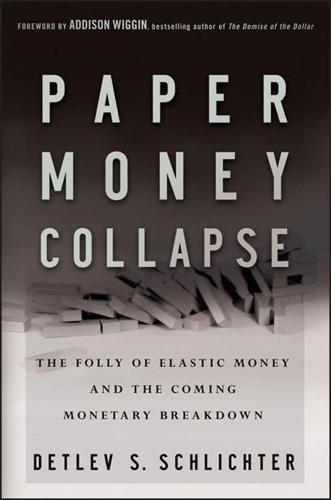
Paper Money Collapse: The Folly of Elastic Money and the Coming Monetary Breakdown
by
Detlev S. Schlichter
Published 21 Sep 2011
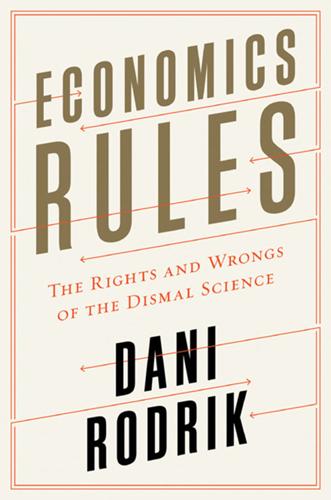
Economics Rules: The Rights and Wrongs of the Dismal Science
by
Dani Rodrik
Published 12 Oct 2015
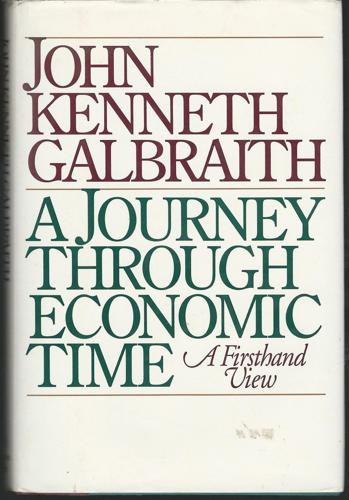
World Economy Since the Wars: A Personal View
by
John Kenneth Galbraith
Published 14 May 1994
Their power, moreover, was not won by the crude, uncouth and uncertain process of soliciting votes. It was the direct reward of financial achievement and wealth. Not only did monetary policy belong to the banking community, but specific steps were taken to safeguard the exercise of this authority from the intervention or intercession of politicians. The central bank was kept "independent" of the government and in degree above it. Such was the case for two centuries with the Bank of England. It is still so, nominally, of the Federal Reserve System in the United States. This independence, though extensively celebrated in the conventional wisdom, would not long sustain determined opposition to the wishes of the American Executive and the Congress.
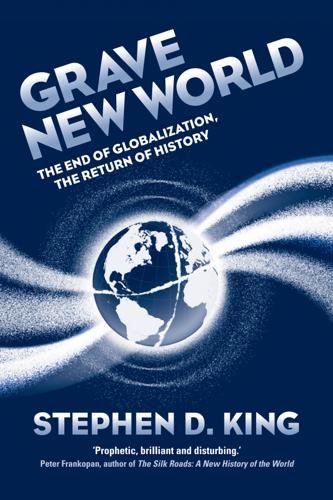
Grave New World: The End of Globalization, the Return of History
by
Stephen D. King
Published 22 May 2017
The more they do so, however, the greater the degree of twenty-first-century ‘clipping’, creating a divisive world in which it is increasingly a case of ‘heads I win, tails you lose’. And, to the extent that this ‘winner takes all’ approach is recognized, it will become a rallying call for all those who wish to push back on globalization. Our central banks may be independent, but their actions can no longer be regarded seriously as being totally ‘neutral’. THE ART OF THE IMPOSSIBLE The three twenty-first-century challenges – migration, technology and money – suggest that globalization will come under increasing pressure from disruptive forces. Political narratives will dominate conventional economic narratives.
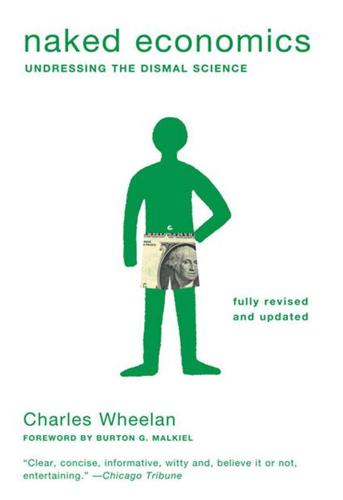
Naked Economics: Undressing the Dismal Science (Fully Revised and Updated)
by
Charles Wheelan
Published 18 Apr 2010
That does not give them the same lifetime tenure as Supreme Court justices, but it does make it unlikely that any new president could pack the Federal Reserve with cronies. It is notable—and even a source of criticism—that the most important economic post in a democratic government is appointed, not elected. We designed it that way; we have made a democratic decision to create a relatively undemocratic institution. A central bank’s effectiveness depends on its independence and credibility, almost to the point that a reputation can become self-fulfilling. If firms believe that a central bank will not tolerate inflation, then they will not feel compelled to raise prices. And if firms do not raise prices, then there will not be an inflation problem.

No Ordinary Disruption: The Four Global Forces Breaking All the Trends
by
Richard Dobbs
and
James Manyika
Published 12 May 2015
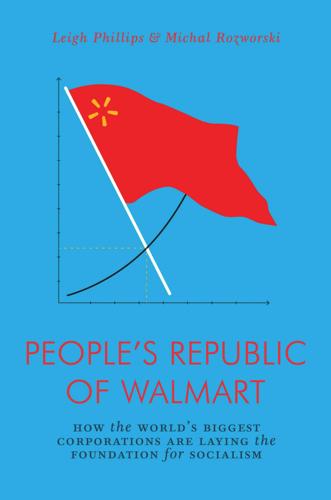
The People's Republic of Walmart: How the World's Biggest Corporations Are Laying the Foundation for Socialism
by
Leigh Phillips
and
Michal Rozworski
Published 5 Mar 2019
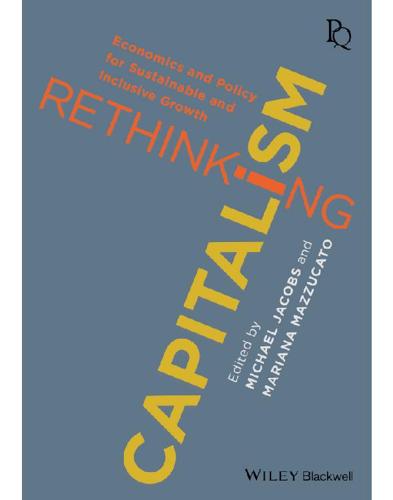
Rethinking Capitalism: Economics and Policy for Sustainable and Inclusive Growth
by
Michael Jacobs
and
Mariana Mazzucato
Published 31 Jul 2016
Maintaining that trust is particularly crucial in the case of a nation and a currency that has been, and still is, at the heart of the international financial system.’14 Since the dollar is not backed by any ‘real’ commodity, the entity that controls its quantity must be committed to price stability to ensure that citizens and businesses continue to accept their paper money. Today, having been given greater independence in the overall conduct of monetary policy, most central banks are explicitly committed to the pursuit of price stability as part of their constitutional mandates. Despite what many commentators may believe, central banks do not independently and directly inject money into the economy. Almost all of the money we use today has been created by private banks through their lending. Central bank money in the form of reserves is held only by commercial banks and cannot get into the economy; central bank money in the form of paper notes does get into the economy, but only to satisfy the public’s demand for cash (as bank deposits are converted at ATM machines—changing the form of the money but not the quantity in the hands of the public).
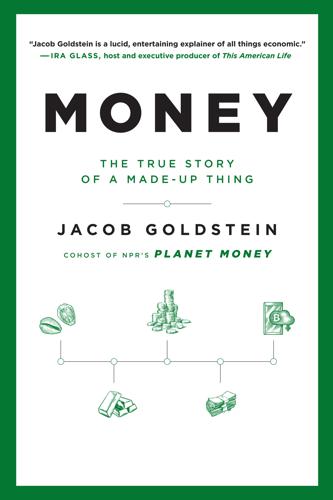
Money: The True Story of a Made-Up Thing
by
Jacob Goldstein
Published 14 Aug 2020
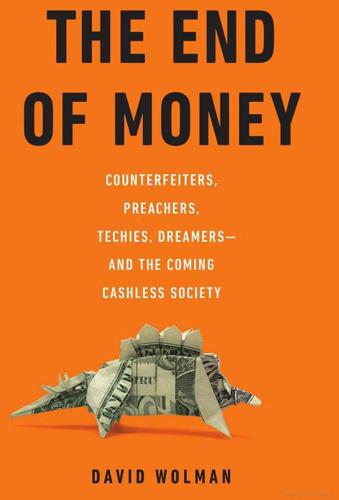
The End of Money: Counterfeiters, Preachers, Techies, Dreamers--And the Coming Cashless Society
by
David Wolman
Published 14 Feb 2012
As Steil and his sympathizers see it, countries with their own currencies invariably walk in monetary step with their major trading partners: Mexico’s currency generally tracks to the U.S. dollar, Sweden’s krona closely follows the value of the euro, and so forth, and this is the case no matter how autonomous those countries’ central banks may think they are, and no matter how patriotic the artwork adorning their banknotes may be. As Olafur Isleifsson, a professor of business at Reykjavik University, told me: “We didn’t have monetary independence before. The central bank moves were all forced moves, like in chess. Monetary independence is a phantom.” I kept hearing this basic idea whenever I spoke with people about ending small sovereign currencies in favor of regional ones, but the debt fiascos in Europe show that this is anything but a definitive forecast of what lies ahead. For economists, this dispute cuts to the core of the most macro question there is: what monetary system offers the best route to a more prosperous future for the most people?
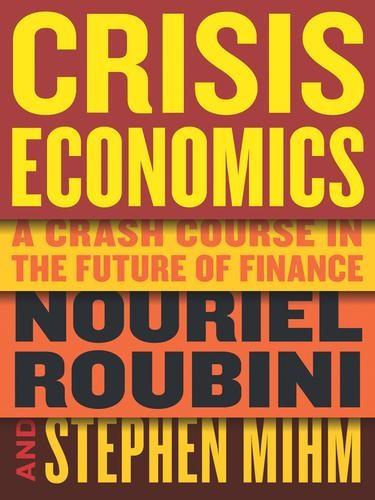
Crisis Economics: A Crash Course in the Future of Finance
by
Nouriel Roubini
and
Stephen Mihm
Published 10 May 2010
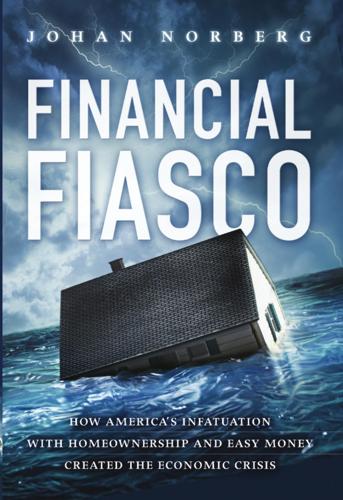
Financial Fiasco: How America's Infatuation With Homeownership and Easy Money Created the Economic Crisis
by
Johan Norberg
Published 14 Sep 2009
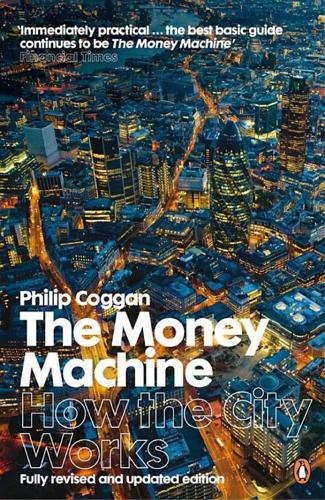
The Money Machine: How the City Works
by
Philip Coggan
Published 1 Jul 2009
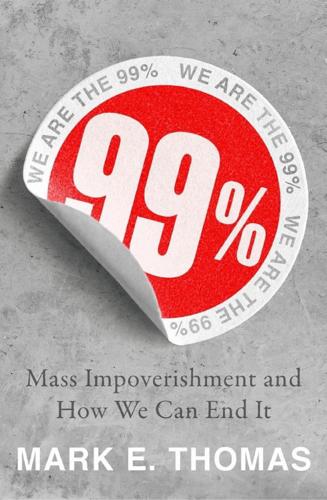
99%: Mass Impoverishment and How We Can End It
by
Mark Thomas
Published 7 Aug 2019
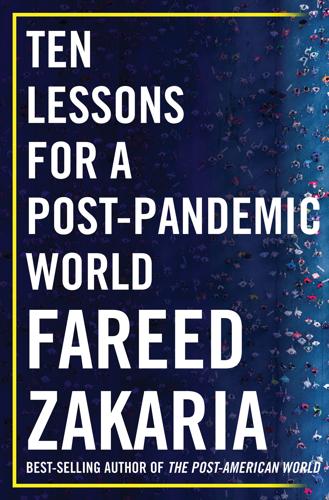
Ten Lessons for a Post-Pandemic World
by
Fareed Zakaria
Published 5 Oct 2020
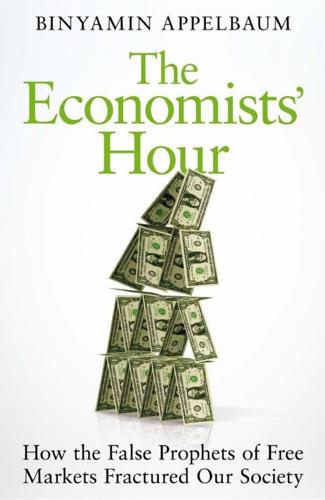
The Economists' Hour: How the False Prophets of Free Markets Fractured Our Society
by
Binyamin Appelbaum
Published 4 Sep 2019
New Zealand reaped the benefits in the form of lower interest rates, which fell by half between 1987 and 1997. Central bankers are members of a small and intimate fraternity — they gather every other month at the opulent offices of the Bank for International Settlements in Switzerland97 — and other countries soon moved to emulate New Zealand, granting their central banks the same combination of operational independence and an inflation target. By 1994, Australia, Canada, Chile, Israel, Spain, and Sweden were doing it. Brash took particular pleasure in advising Britain on the overhaul of its monetary policy regime in 1997. When the European Central Bank opened in 1998, it, too, adopted a 2 percent inflation target.
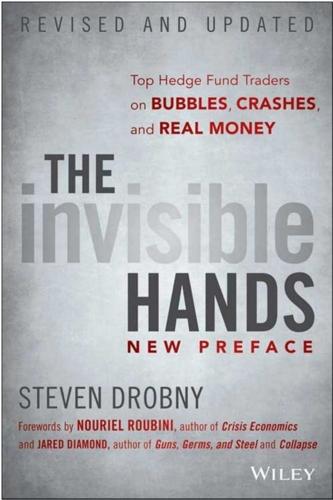
The Invisible Hands: Top Hedge Fund Traders on Bubbles, Crashes, and Real Money
by
Steven Drobny
Published 18 Mar 2010
So you have multiple scenarios that you are tracking: (A) the world is okay; (B) the Great Depression; and (C) bad inflation? These are all possible scenarios. There is the inflation scenario and the deflation scenario. There is a protectionist scenario. There is a too much stimulus scenario, which is an inflationary scenario. There is a central banks getting less independent scenario. Since there are many different ingredients out there right now, many forces that we are not used to evaluating, we have to be patient. For the first time in centuries, Asia is the most important economic player on the margin. Right now, China is more important for the global economy than the U.S.
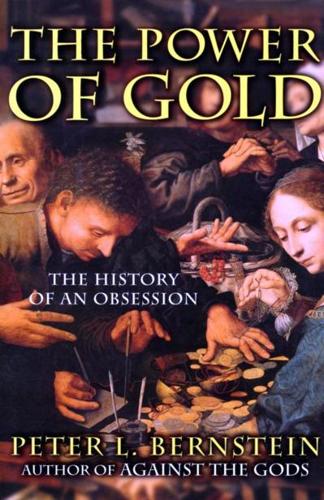
The Power of Gold: The History of an Obsession
by
Peter L. Bernstein
Published 1 Jan 2000
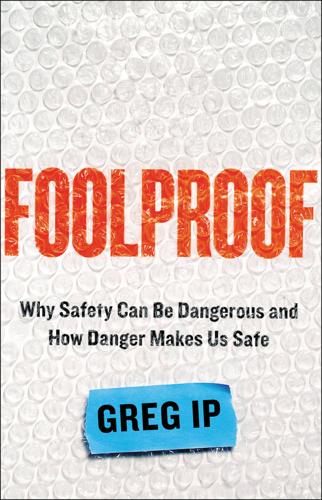
Foolproof: Why Safety Can Be Dangerous and How Danger Makes Us Safe
by
Greg Ip
Published 12 Oct 2015
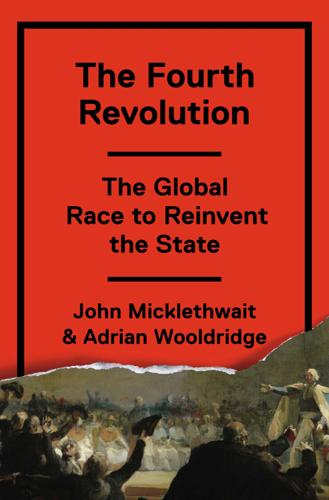
The Fourth Revolution: The Global Race to Reinvent the State
by
John Micklethwait
and
Adrian Wooldridge
Published 14 May 2014

Manias, Panics and Crashes: A History of Financial Crises, Sixth Edition
by
Kindleberger, Charles P.
and
Robert Z., Aliber
Published 9 Aug 2011
By February 1973 speculation that the mark would be revalued led to increasingly large money flow to Frankfurt; the Bundesbank stopped buying the US dollar, and the mark immediately appreciated. Most economists had thought that the adoption of floating exchange rates would severely dampen the movement of interest-sensitive money and that once currencies were floating central banks would be able to follow independent monetary policies without any untoward external effects. Economists differed about whether speculative money movements would be stabilizing or, occasionally, destabilizing in a serious way; the general view was that fear of currency losses would deter cross-border money flows.
…
One explanation for the greater variability of cross-border capital flows in the last thirty years is that shocks, and especially those that involved changes in the stance of monetary policy, have been larger than in earlier periods when currencies were pegged or when there was a commitment to parities for national currencies. One of the major arguments in the case for floating exchange rates is that central banks then would have greater independence to change their monetary policies and the rates of growth of their money supplies and their interest rates to achieve their domestic economic objectives. In effect the commitments to parities for national currencies constrained changes in the central banks’ monetary policies and especially the adoption of more expansive monetary policies; these commitments meant that national inflation rates could not differ significantly from the inflation rates in the countries’ major trading partners.
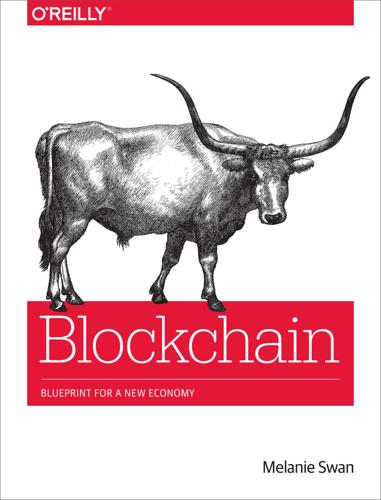
Blockchain: Blueprint for a New Economy
by
Melanie Swan
Published 22 Jan 2014

Broken Markets: A User's Guide to the Post-Finance Economy
by
Kevin Mellyn
Published 18 Jun 2012
The crisis is being addressed largely on the level of high politics—saving and expanding the “European Project”—rather than practical economic reality. And for good reason: there is no good answer to the problems the euro has created for the European economy from its inception. The European Project created a European Central Bank (ECB) with considerable political independence and a very high degree of professionalism to give credibility to the new currency. It did not give that bank powers to lend directly to governments, for the same reason that all other major central banks are so constrained, which is that politicians would turn them into piggy banks and inflate away the value of the money issued by the central bank.

How to Speak Money: What the Money People Say--And What It Really Means
by
John Lanchester
Published 5 Oct 2014
central banks The institutions that stand at the heart of the modern state’s financial system. They set interest rates, have the power to print money to increase the amount in circulation, and play a supervisory role over the financial system. (In the UK this role was taken away in 1997 and given back in 2013.) Part of the idea of having a central bank is that it is independent from political interference; that’s the theory, though the practice is often different. The three most important central banks are the US Federal Reserve, the European Central Bank, and the People’s Bank of China. CFTC The Commodities Futures Trading Commission, the body that regulates the US trade in commodities and their derivatives.

What's Next?: Unconventional Wisdom on the Future of the World Economy
by
David Hale
and
Lyric Hughes Hale
Published 23 May 2011
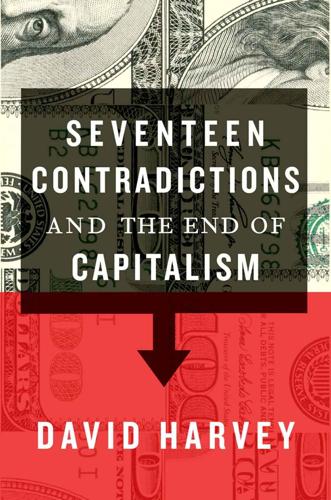
Seventeen Contradictions and the End of Capitalism
by
David Harvey
Published 3 Apr 2014
When the euro came into being, the individual states surrendered their monopoly power over their currencies to a set of supra-national institutions (the European Central Bank) dominated by Germany and to a lesser degree by France. The second caveat is that this monopoly right of the state over the currency can be subcontracted, as it were, to merchant and banking capitalists through the chartering of central banks that are nominally independent of direct democratic or state political control. This is the case with the Bank of England, the US Federal Reserve and the European Central Bank. These powerful institutions exist in a liminal space between the state and the private banks. They are institutions which, along with the Treasury Departments of the state government, form the state–finance nexus that has long functioned as the ‘central nervous system’ for regulating and promoting capital.

The Economics of Enough: How to Run the Economy as if the Future Matters
by
Diane Coyle
Published 21 Feb 2011
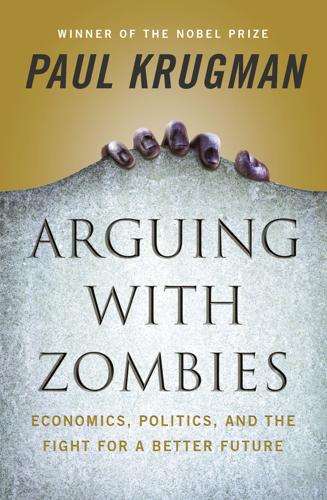
Arguing With Zombies: Economics, Politics, and the Fight for a Better Future
by
Paul Krugman
Published 28 Jan 2020
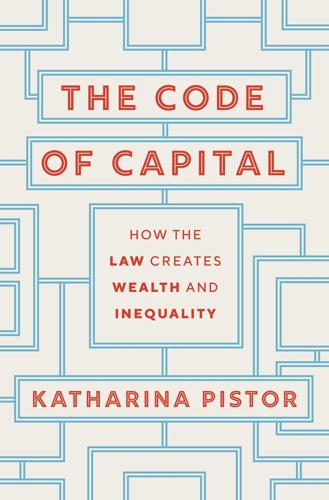
The Code of Capital: How the Law Creates Wealth and Inequality
by
Katharina Pistor
Published 27 May 2019
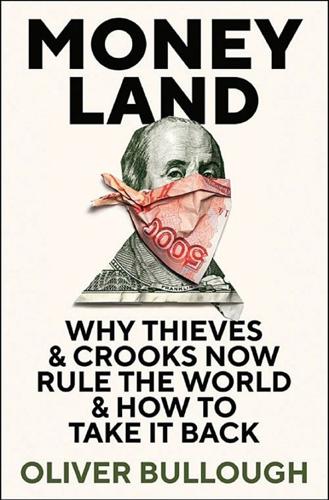
Moneyland: Why Thieves and Crooks Now Rule the World and How to Take It Back
by
Oliver Bullough
Published 5 Sep 2018
Parliament was then persuaded to sack him and his replacement enjoyed a long and successful career after wisely deciding to halt the probes into both the Swiss corruption scandal and the use of FIMACO. This meant the cases were never tried in court, or aired in public. The IMF did oblige Russia’s Central Bank to commission an audit into FIMACO, but it was widely derided, since it relied exclusively on information provided by the Central Bank and had no independent investigatory powers. Writers who kept looking into the case found much to trouble them, however. One noted that, in 1999, the Russian Central Bank had a staff of 86,000, as compared to 3,000 at the Bank of England and 23,000 at the Fed. On top of this lavish pot of patronage, Gerashchenko earned 70 per cent more than the most important central banker in the world, the Fed’s Alan Greenspan, plus extra for his role as a board member of the bank’s subsidiaries.

The Atlantic and Its Enemies: A History of the Cold War
by
Norman Stone
Published 15 Feb 2010
Where the monetarists faced difficulties, which were never really resolved, was in the external aspect of inflation. In conditions of free trade and money movement, inflation could be imported. The German Bundesbank, with the lessons of 1923 and 1948 well within living memory, was naturally concerned to keep inflation down, and was independent, in so far as any central bank can be independent. On occasion it had arguments with governments, and on the whole it won them. However, whatever the Bundesbank did, it could not stop foreigners buying Marks, and increasing the domestic money supply; Germany, too, suffered inflation in the 1970s, though at a considerably lower rate than did England.
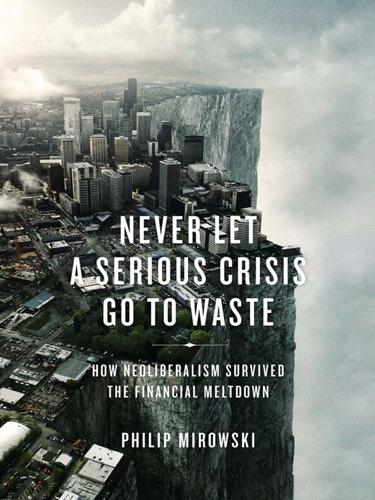
Never Let a Serious Crisis Go to Waste: How Neoliberalism Survived the Financial Meltdown
by
Philip Mirowski
Published 24 Jun 2013
One, the one Bernanke rejects, associated with Hayek and the so-called libertarians like Ron Paul, is that the Fed is the devil, and that it should be replaced with free banking and pure market control. It would be a little hard to become chairman of the Fed while toeing that line, so Bernanke endorses the Friedmanite alternate: the central bank should be “independent” of all democratic control, preferably run by like-minded neoliberals, but only the market can recognize a bubble, so don’t try to rein in the speculators, but simply clean up afterward by lending freely to the rich people who created the problem in the first place. It is the old neoliberal two-step all over again: Rick Perry and Ron Paul can offer the groundlings red meat by threatening to beat up on Bernanke, and keep the base rabidly opposed to anything that looks suspiciously like the guv’mint; but the major players understand that they need Bernanke (or someone like him) on the inside to support their remunerative activities and ward off anything that smacks of nationalization.
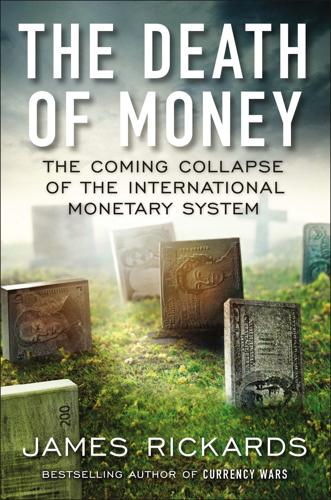
The Death of Money: The Coming Collapse of the International Monetary System
by
James Rickards
Published 7 Apr 2014
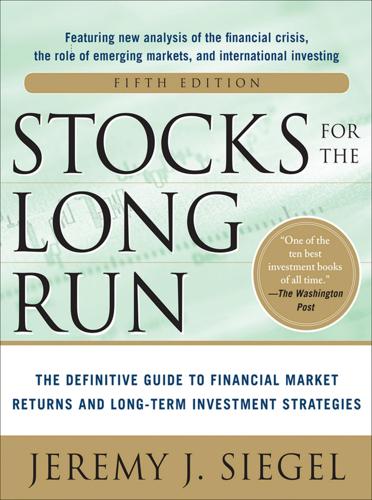
Stocks for the Long Run 5/E: the Definitive Guide to Financial Market Returns & Long-Term Investment Strategies
by
Jeremy Siegel
Published 7 Jan 2014
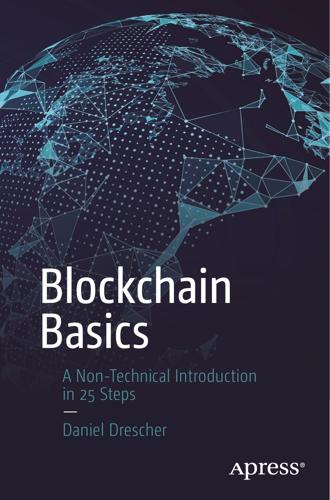
Blockchain Basics: A Non-Technical Introduction in 25 Steps
by
Daniel Drescher
Published 16 Mar 2017
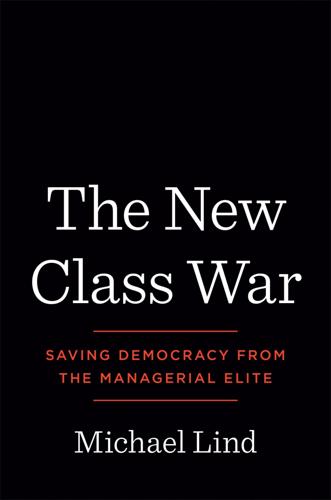
The New Class War: Saving Democracy From the Metropolitan Elite
by
Michael Lind
Published 20 Feb 2020
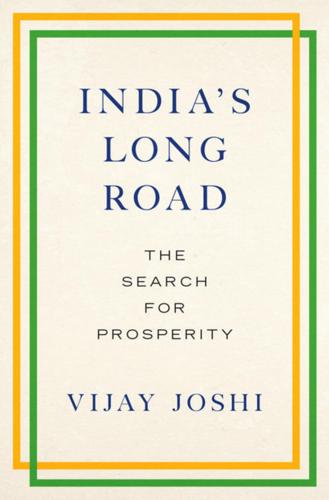
India's Long Road
by
Vijay Joshi
Published 21 Feb 2017
(The bout of high inflation after 2008 had several causes but its persistence owed much to the fact that there was no such anchor, and the RBI chose to pursue a soft monetary policy in an environment of growing indexation and rampant inflationary expectations.) To keep inflation in check, India should adopt ‘flexible inflation targeting’, along with its usual supporting institutions. In W h at I s t o B e D o n e ? W h at Li e s A h e a d ? [ 279 ] 280 such an arrangement, the government chooses the inflation target but the central bank has full operational independence to achieve it.6 The objective of external balance boils down to aiming for a current account deficit that can be financed safely and sustainably, say an average of 2 per cent of GDP, and more generally, to make the economy less vulnerable to crises caused by volatile capital flows.
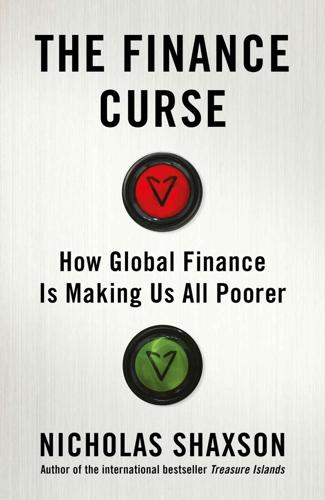
The Finance Curse: How Global Finance Is Making Us All Poorer
by
Nicholas Shaxson
Published 10 Oct 2018
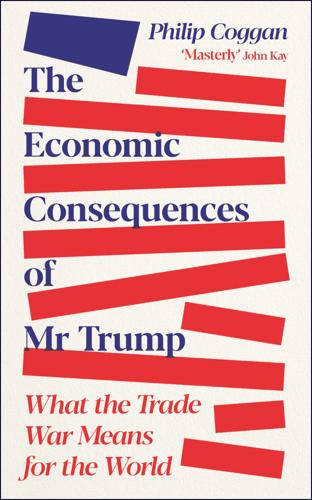
The Economic Consequences of Mr Trump: What the Trade War Means for the World
by
Philip Coggan
Published 1 Jul 2025
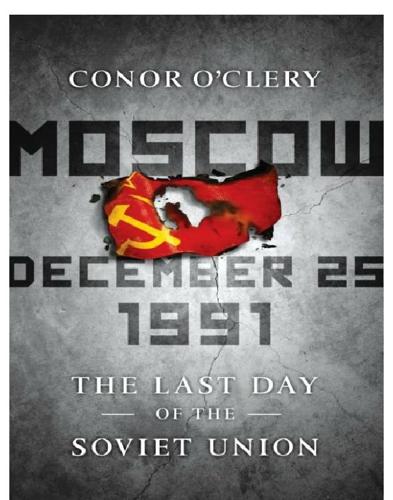
Moscow, December 25th, 1991
by
Conor O'Clery
Published 31 Jul 2011
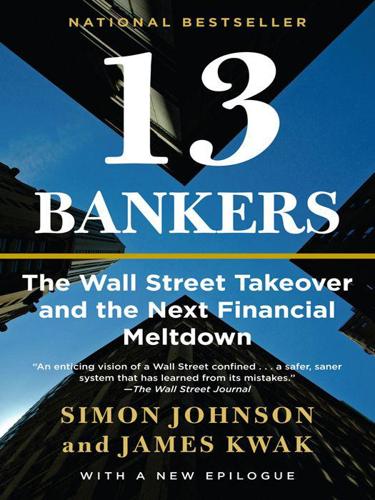
13 Bankers: The Wall Street Takeover and the Next Financial Meltdown
by
Simon Johnson
and
James Kwak
Published 29 Mar 2010
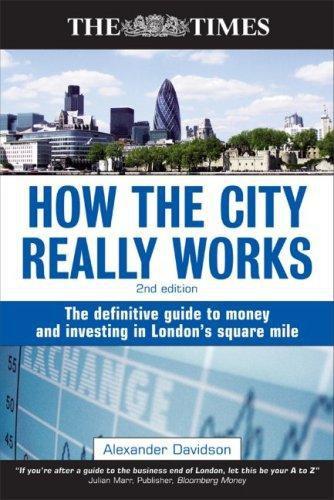
How the City Really Works: The Definitive Guide to Money and Investing in London's Square Mile
by
Alexander Davidson
Published 1 Apr 2008
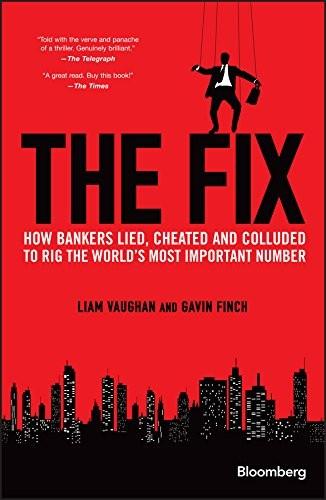
The Fix: How Bankers Lied, Cheated and Colluded to Rig the World's Most Important Number (Bloomberg)
by
Liam Vaughan
and
Gavin Finch
Published 22 Nov 2016
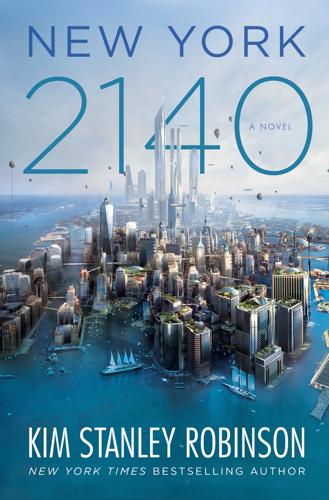
New York 2140
by
Kim Stanley Robinson
Published 14 Mar 2017

The Crisis of Crowding: Quant Copycats, Ugly Models, and the New Crash Normal
by
Ludwig B. Chincarini
Published 29 Jul 2012

The Looting Machine: Warlords, Oligarchs, Corporations, Smugglers, and the Theft of Africa's Wealth
by
Tom Burgis
Published 24 Mar 2015
As the plundering started to run out of control, Sanusi compiled a dossier showing that scams involving NNPC, the national oil company that serves, like Sonangol to the Angolan Futungo, as the engine of Nigeria’s looting machine, were bleeding a billion dollars a month from the treasury.60 When Sanusi went public with his allegations in early 2014 Jonathan forced him out of the central bank, dealing a blow to the independence of one of the few Nigerian institutions with the power to check the excesses of the country’s rulers – though he could not prevent Sanusi’s appointment as Emir of Kano, an influential position in the North’s religious hierarchy. A short, wiry man with a penchant for bow ties, Sanusi understood that Nigeria’s petro-politics lay beneath the violence that was mounting across the nation, including the barbaric insurgency in the North launched by the jihadists of Boko Haram.

The People vs Tech: How the Internet Is Killing Democracy (And How We Save It)
by
Jamie Bartlett
Published 4 Apr 2018
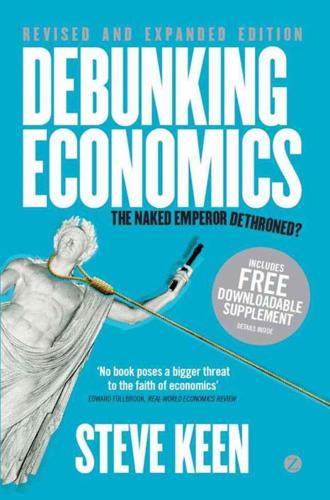
Debunking Economics - Revised, Expanded and Integrated Edition: The Naked Emperor Dethroned?
by
Steve Keen
Published 21 Sep 2011

Debtor Nation: The History of America in Red Ink (Politics and Society in Modern America)
by
Louis Hyman
Published 3 Jan 2011
Small retailers, already facing difficulties, must have been dubious, despite the opportunity to lure customers back in. Such a novel program as the Charg-It system was not unique, but more of an incremental improvement over existing wartime department store practices that many banks were discovering.65 Biggin’s Charg-It system was not the only centralized, bank-run charge credit program independently created in the early 1950s, and all the rest relied on the same factors: offering department store credit techniques in exchange for hefty cuts of the revenue. Like the Charg-It plan, they were created for cash stores outside the downtown to compete with the large credit-granting department stores.66 These credit programs, though resulting from innovative bankers seizing the opportunities of the moment, only became possible because of the spread of department store credit practices.

Baghdad at Sunrise: A Brigade Commander's War in Iraq
by
Peter R. Mansoor
,
Donald Kagan
and
Frederick Kagan
Published 31 Aug 2009
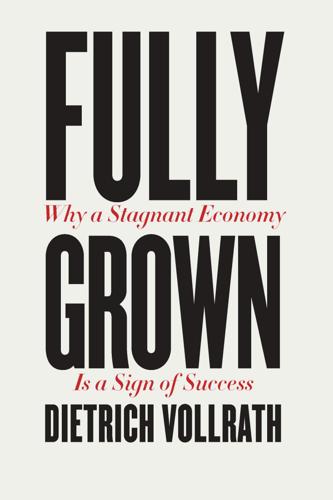
Fully Grown: Why a Stagnant Economy Is a Sign of Success
by
Dietrich Vollrath
Published 6 Jan 2020
You can think of regulations as something like an effective tax on profits, because of the costs of compliance. The tax rate matters for net profits, yes, but in relation to markup and scale, it may not be that important. To see what I mean, consider New Zealand. The country has a representative parliament with a central bank that was a leader in adopting strict independence from political interference. Life expectancy is excellent, at eighty-two years, and the average amount of schooling is 12.5 years, about the same as in the United States. That will rise, though, over time, as about 81% of college-age New Zealanders do go to some sort of postsecondary school.
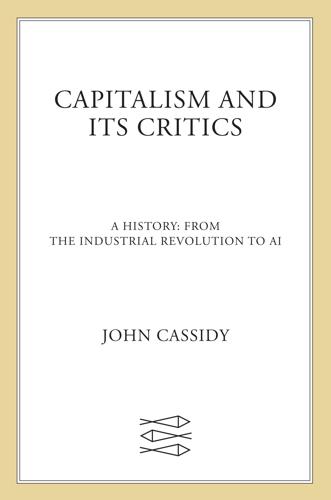
Capitalism and Its Critics: A History: From the Industrial Revolution to AI
by
John Cassidy
Published 12 May 2025
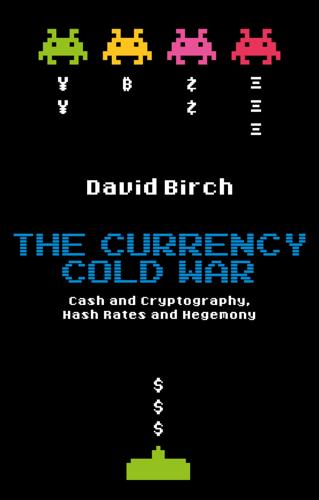
The Currency Cold War: Cash and Cryptography, Hash Rates and Hegemony
by
David G. W. Birch
Published 14 Apr 2020
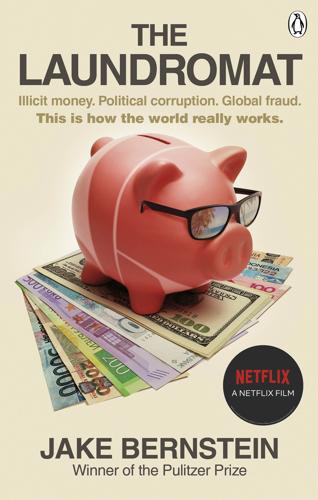
The Laundromat : Inside the Panama Papers, Illicit Money Networks, and the Global Elite
by
Jake Bernstein
Published 14 Oct 2019
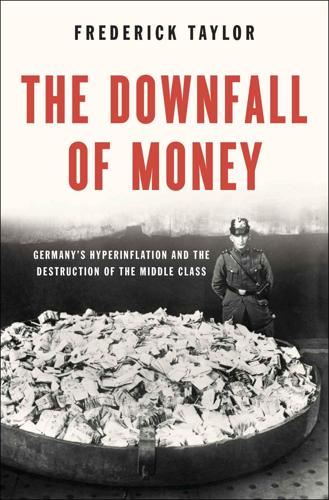
The Downfall of Money: Germany's Hyperinflation and the Destruction of the Middle Class
by
Frederick Taylor
Published 16 Sep 2013
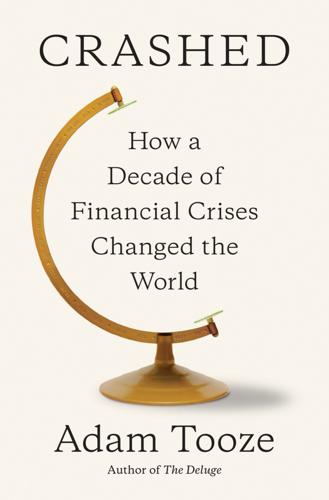
Crashed: How a Decade of Financial Crises Changed the World
by
Adam Tooze
Published 31 Jul 2018
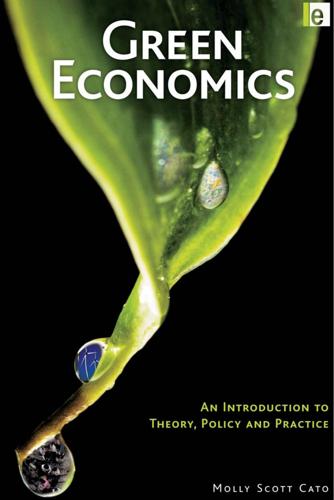
Green Economics: An Introduction to Theory, Policy and Practice
by
Molly Scott Cato
Published 16 Dec 2008
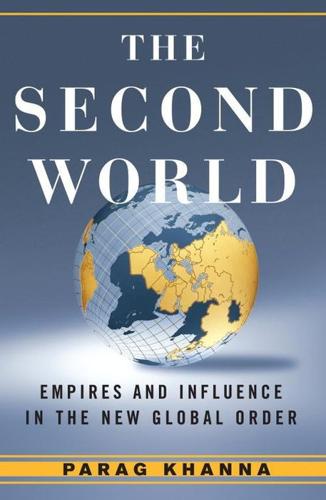
Second World: Empires and Influence in the New Global Order
by
Parag Khanna
Published 4 Mar 2008
The comparison with Venezuela provides part of the answer. Colombia was the Spanish viceroy’s home, Venezuela his barracks. Rather than Bolívar, it was Bolívar’s trusted commander Francisco Santander who imparted the strong institutions of the presidency, the courts, and the central bank in Colombia. “Arms have given you independence, but the law will give you liberty,” he declared. Whereas Venezuela has experienced decades of fluctuating stability, Colombia has steadily evolved from its state of total poverty in the 1930s to legal and economic modernity. Except for the mid-1950s, Colombia boasts a century of entirely legitimate democratic transfers of power.
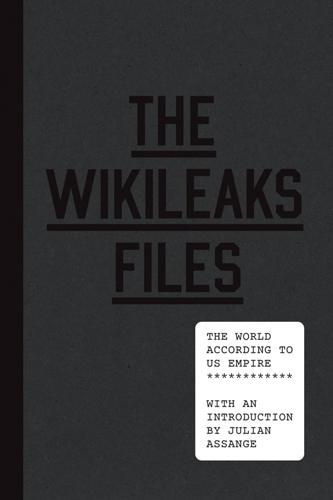
The WikiLeaks Files: The World According to US Empire
by
Wikileaks
Published 24 Aug 2015
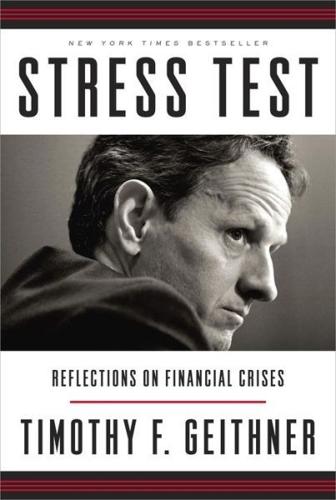
Stress Test: Reflections on Financial Crises
by
Timothy F. Geithner
Published 11 May 2014
A Financial Times headline summed up the situation: “New Panic Is Proof of Big League Crisis.” Ben and the ECB’s Jean-Claude Trichet, with my encouragement, worked with Mervyn King at the Bank of England and several other central bankers to launch the first-ever coordinated global interest rate cut. That was a remarkable act of cooperation for central banks that had always prized their independence and sovereignty, but it didn’t stop or even slow the collapse of the global markets. In the United States, private credit was now virtually unavailable. The financial system was increasingly unable to play its most basic role in the economy: facilitating the flow of money from those who wanted to lend to those who wanted to invest or consume.
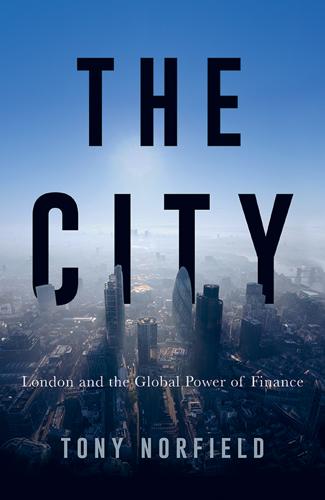
The City
by
Tony Norfield
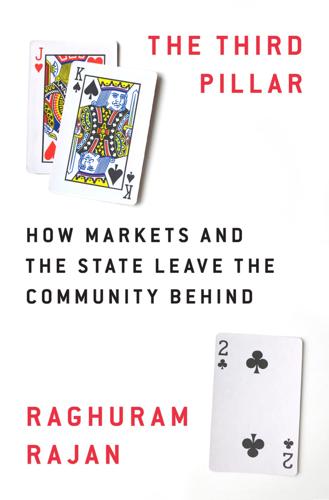
The Third Pillar: How Markets and the State Leave the Community Behind
by
Raghuram Rajan
Published 26 Feb 2019
This is why democratic protest works best when it is timely, before people believe the system is beyond reform. 4 THE COMMUNITY IN THE BALANCE In a modern country, there are very few powerful actors that are independent of the government. Some elements of the state such as the judiciary or the central bank can be structured to be quasi-independent, but since their members are appointed by the government, a government with sufficiently long tenure can mold these institutions into its way of thinking. The power of promotion is another powerful tool. Within every state organization, no matter how seemingly independent, there are a spectrum of views.
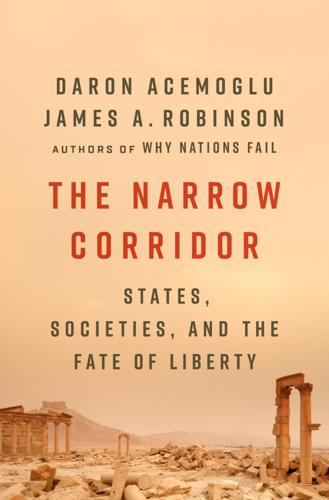
The Narrow Corridor: States, Societies, and the Fate of Liberty
by
Daron Acemoglu
and
James A. Robinson
Published 23 Sep 2019
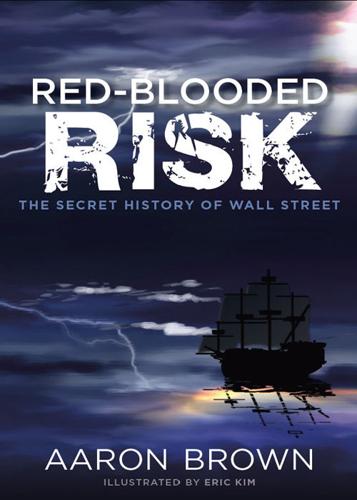
Red-Blooded Risk: The Secret History of Wall Street
by
Aaron Brown
and
Eric Kim
Published 10 Oct 2011
The Thirty Years War required enormous expenditures, which were often financed by debasement of coins. Holland had a small, open economy, meaning that coins flowed into it from all over Europe; when people send coins, they send the lightest ones, the most debased ones. Finally, central authorities were weak in Holland, so individual state banks and independent mints were able to get away with more debasement than was tolerated in other countries. This did not amount to a large problem for someone who wanted to sell goods and buy other goods immediately with the proceeds. But a tulip was a far better store of value.

Stigum's Money Market, 4E
by
Marcia Stigum
and
Anthony Crescenzi
Published 9 Feb 2007
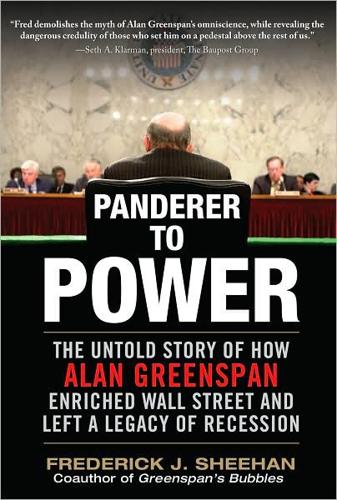
Panderer to Power
by
Frederick Sheehan
Published 21 Oct 2009
Leuchtenburg, The Perils of Prosperity, 1914–1932 (Chicago: University of Chicago Press, 1958), pp. 41–42. 15 FOMC meeting transcript, July 2–3, 1996, p. 55. This page intentionally left blank APPENDIX The Federal Reserve System The Federal Reserve Act was passed in 1913; the body first met in August 1914. Literalists insist that the Federal Reserve is not a central bank; scholars insist that the Federal Reserve is a federal agency independent of political control. These distinctions blur actual practices. The Federal Reserve is the only authorized issuer of currency in the United States. The president nominates all Federal Reserve governors. Many tussles between politicians and the Federal Reserve are discussed in this book.
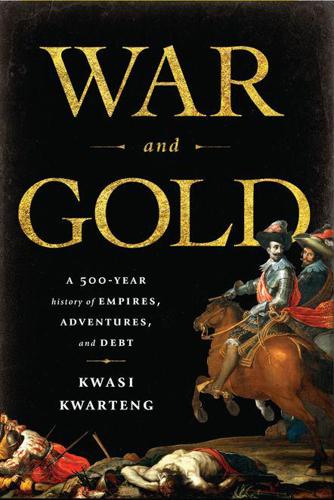
War and Gold: A Five-Hundred-Year History of Empires, Adventures, and Debt
by
Kwasi Kwarteng
Published 12 May 2014
The inevitable result is more and more money and cheaper and cheaper dollars.’29 The conclusion of this dispute between the White House and the Federal Reserve about its independence and the conduct of monetary policy was the Accord of 4 March 1951. The day on which this agreement was signed has been described as ‘Federal Reserve Independence Day’.30 A former head of the Goldman Sachs economics team has even written of ‘an epic struggle between a US president who stood on the verge of a nuclear war, and a central bank that was seeking to establish its right to set an independent monetary policy’. He even paints this ‘victory over fiscal dominance’ as the ‘moment when the modern, independent Fed came into existence’.31 The Fed’s official historian, Allan H. Meltzer, likewise suggested that the Accord of 1951 released ‘the Federal Reserve from Treasury control’ and began the ‘evolution toward the modern Federal Reserve’.32 It was perhaps inevitable that the new Chairman of the Governors of the Federal Reserve would be the same William McChesney Martin who at the tender age of forty had been Chairman of the Export-Import Bank.

The Shifts and the Shocks: What We've Learned--And Have Still to Learn--From the Financial Crisis
by
Martin Wolf
Published 24 Nov 2015
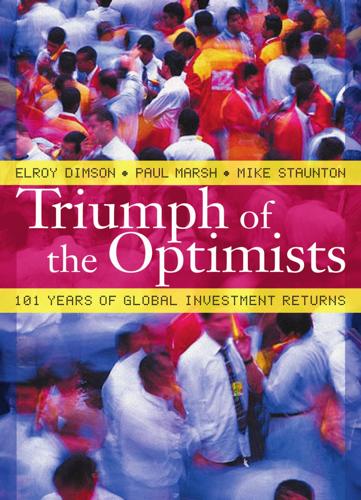
Triumph of the Optimists: 101 Years of Global Investment Returns
by
Elroy Dimson
,
Paul Marsh
and
Mike Staunton
Published 3 Feb 2002
For 1979–98, we use Whelan's (1999) return on a twenty-year representative Irish government bond, as estimated by Raida Stockbrokers, turning thereafter to the Datastream ten-year Irish government bond index. Short-term Irish interest rates for 1900–22 are from Whelan (1999). During 1923–69 we use the yield on Irish central bank deposits. From 1970 we use Irish treasury bills. Up to independence from Britain, inflation is measured using Bowley’s (1937) cost of living index for 1900–13 and the working-class cost of living index for 1914–21. For 1922–52 we use Meghen's (1970) Irish cost of living index, and from 1953, the Irish consumer price index. Note that the exchange rate is expressed as Irish pounds per US dollar.
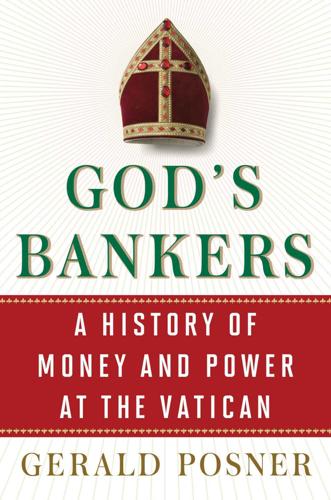
God's Bankers: A History of Money and Power at the Vatican
by
Gerald Posner
Published 3 Feb 2015